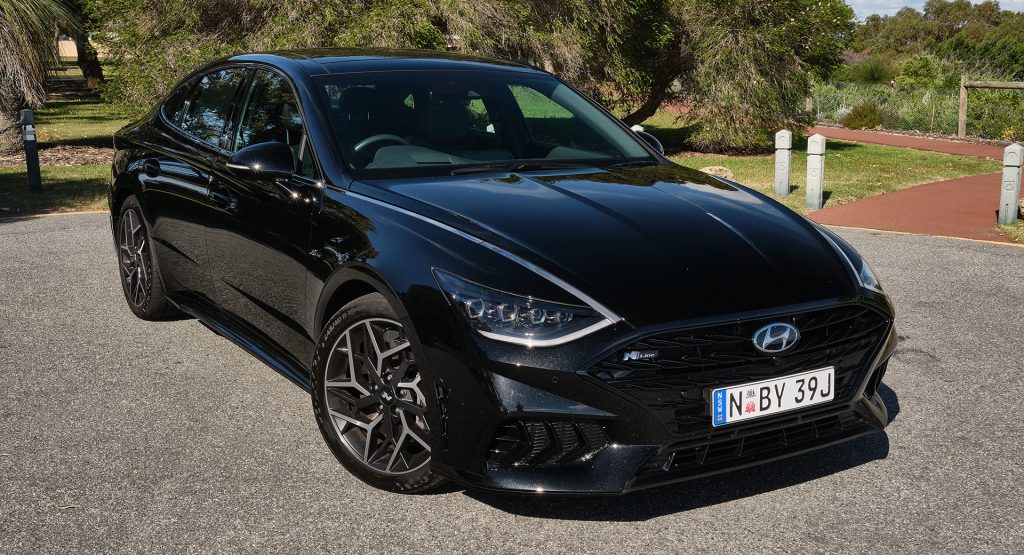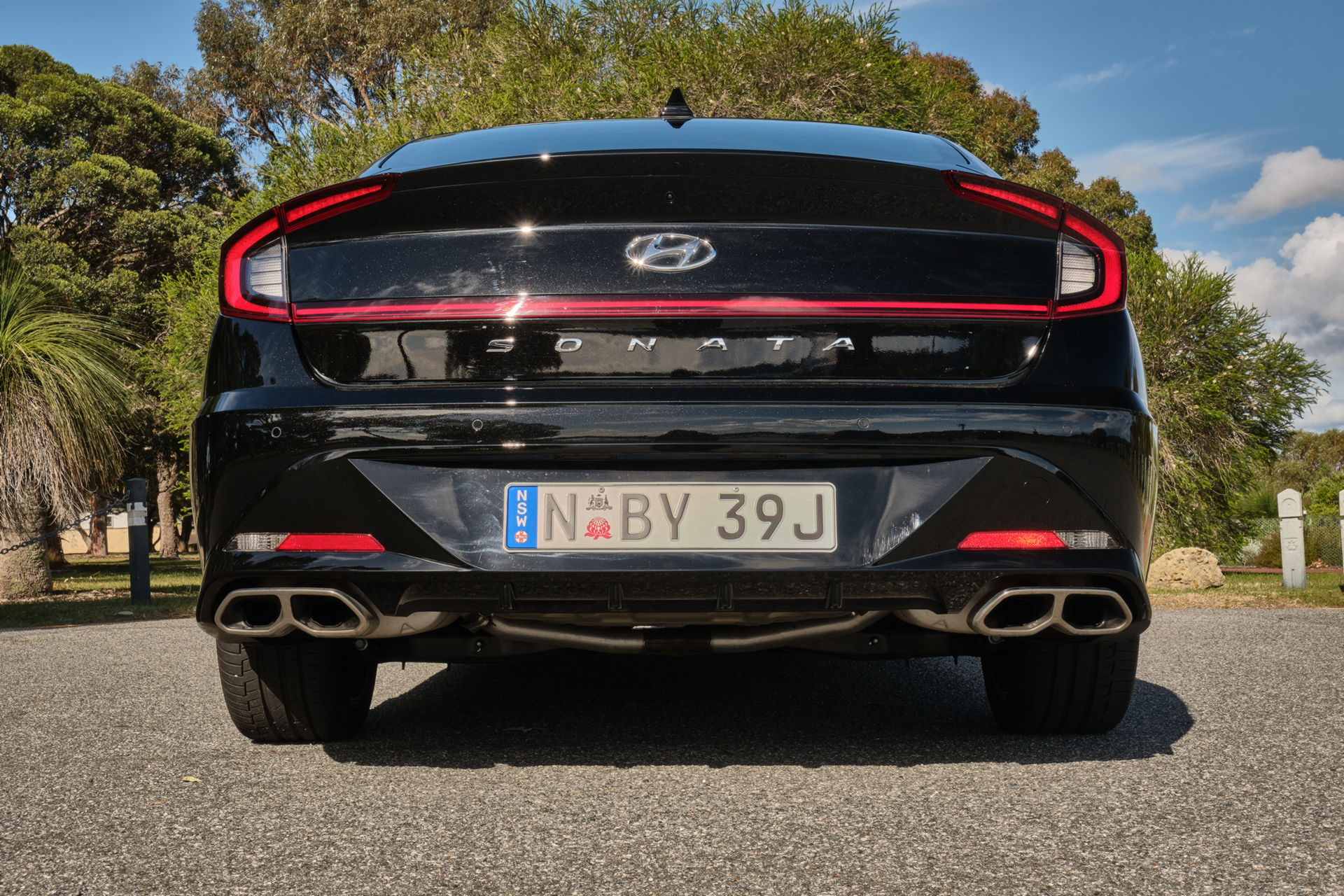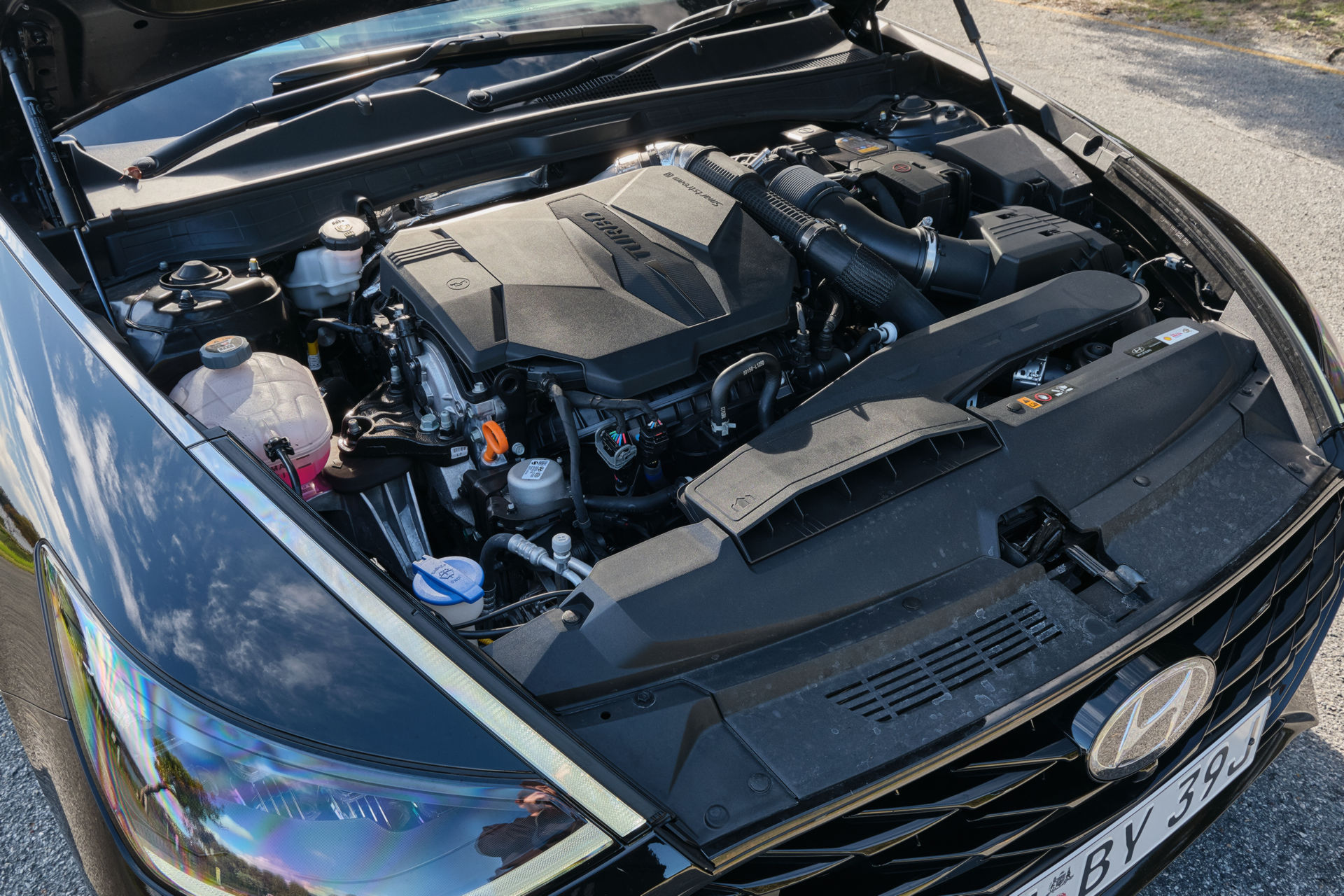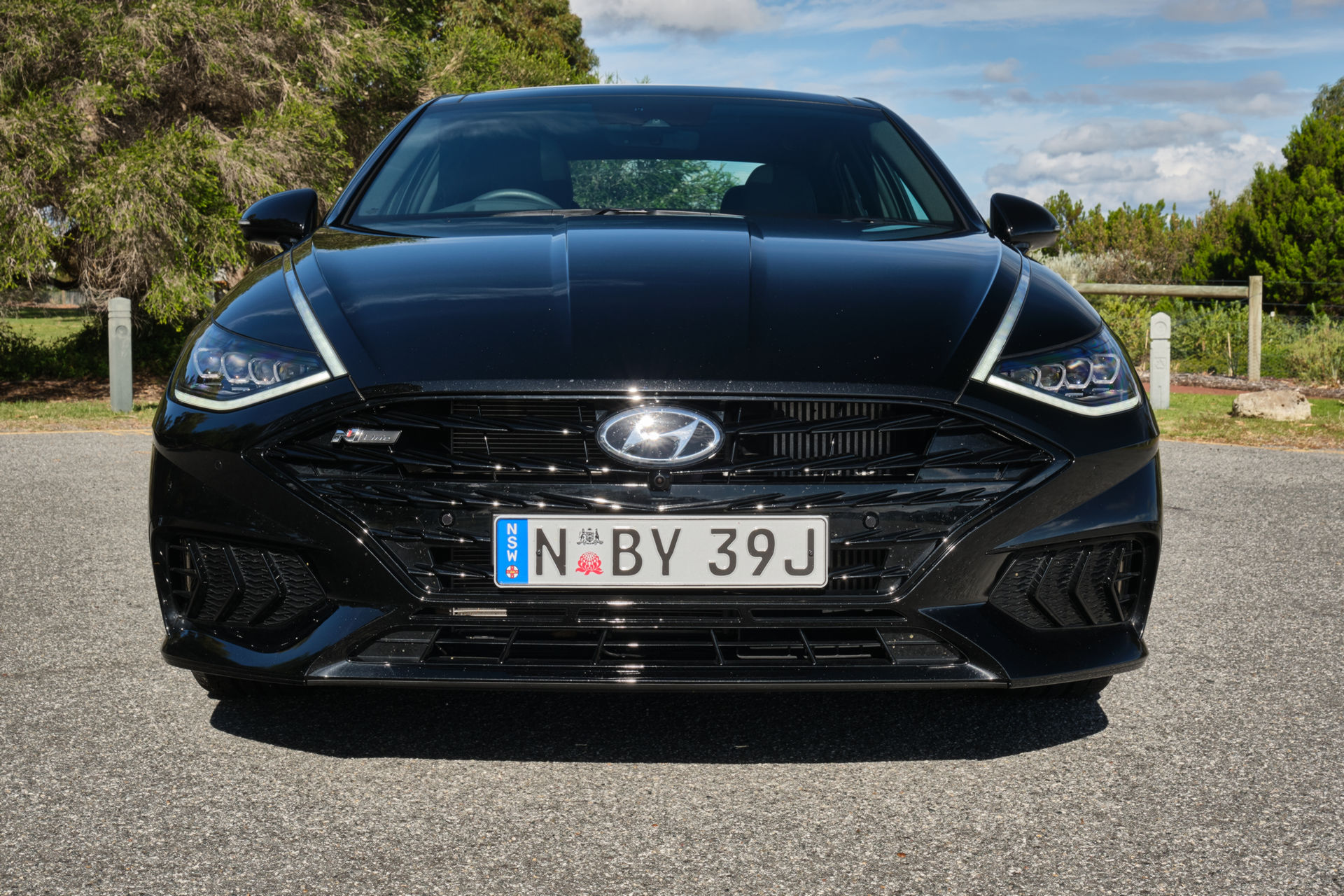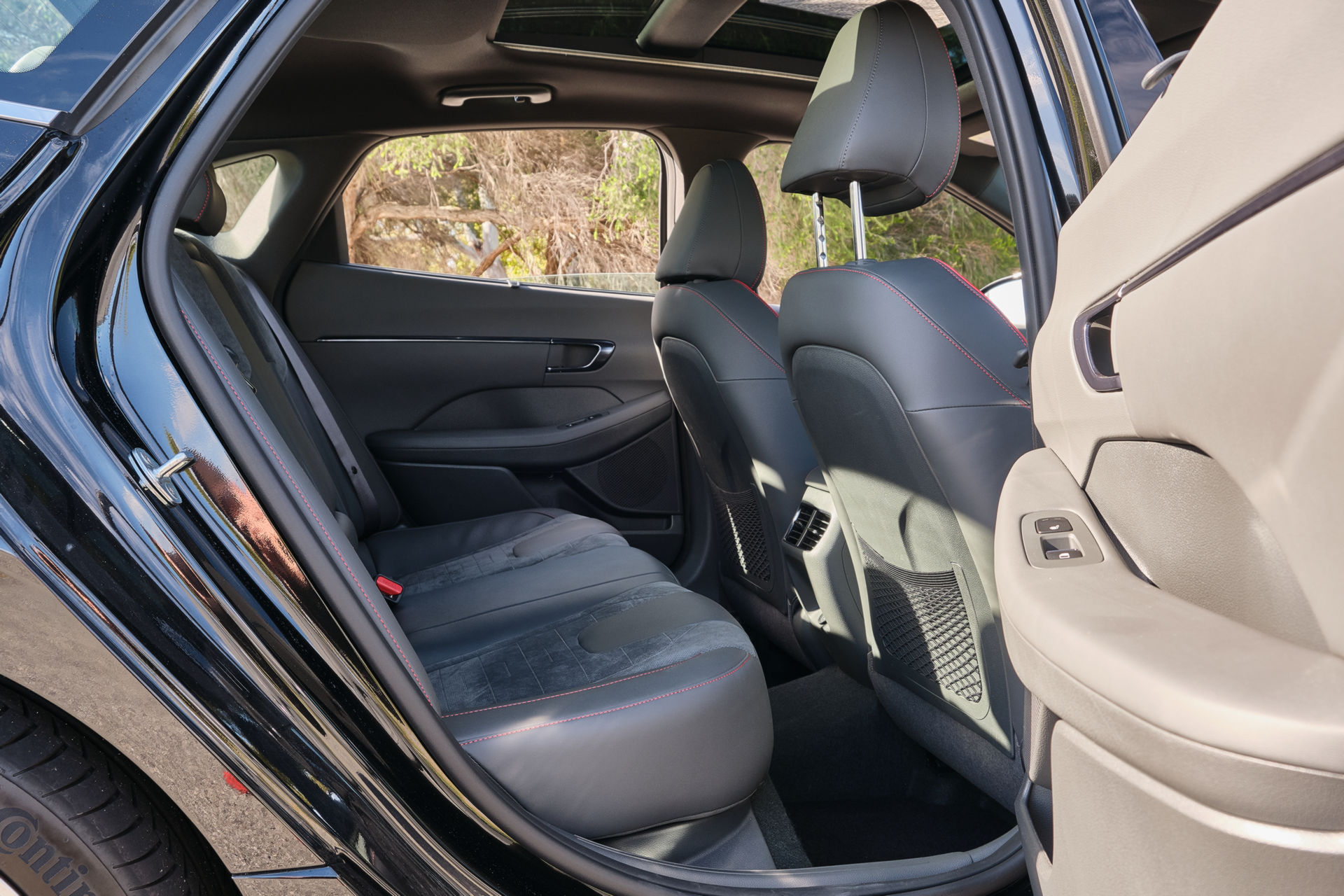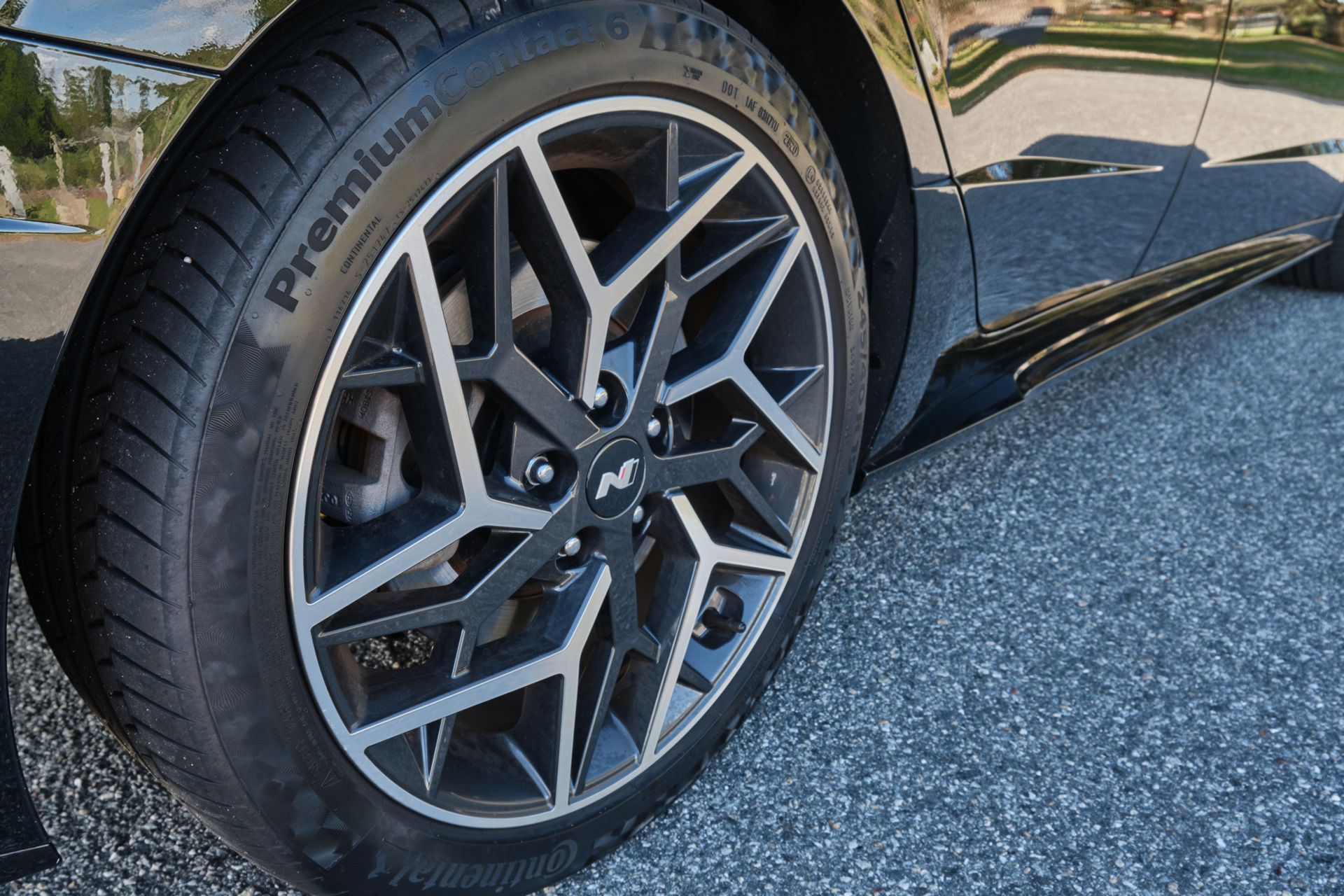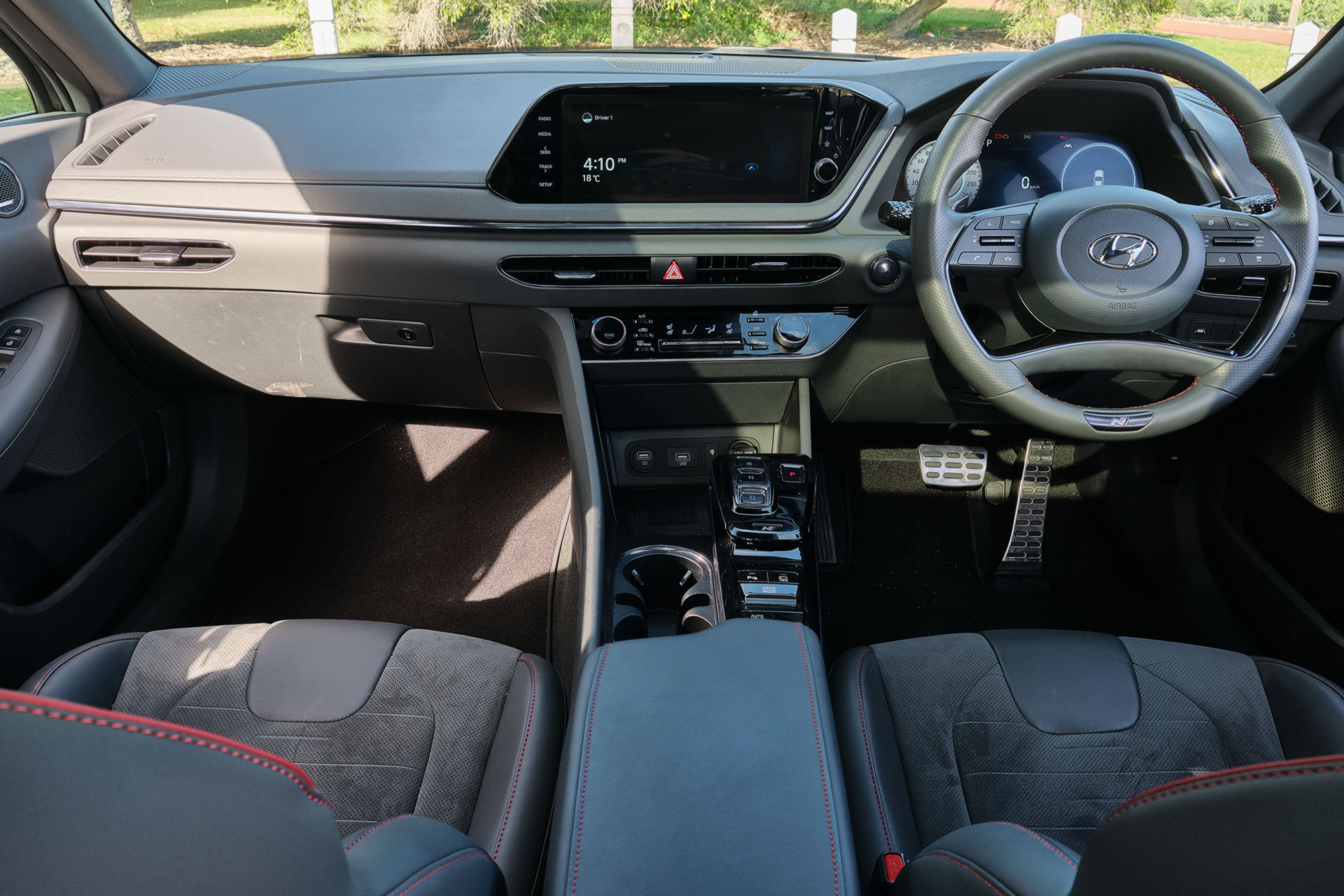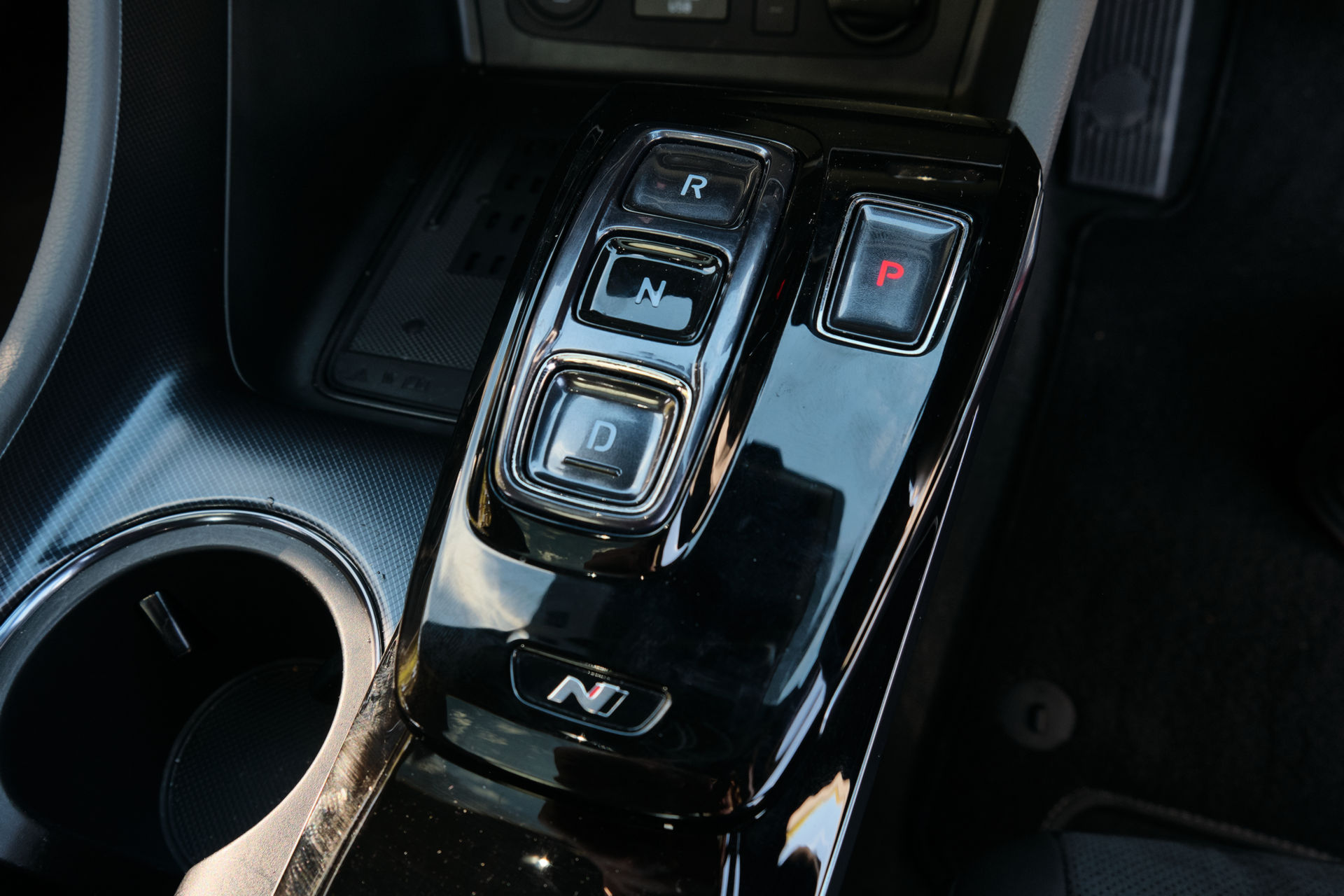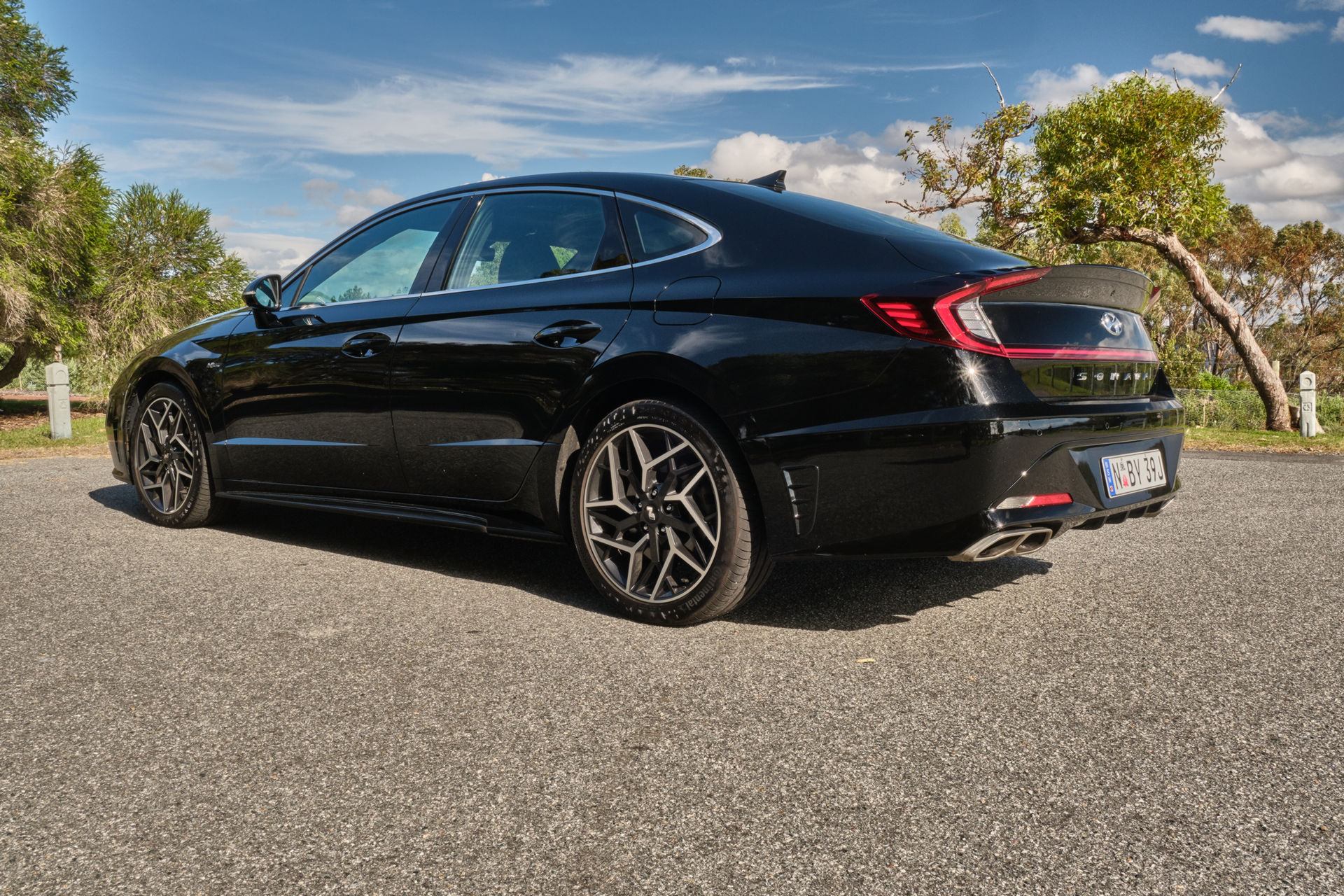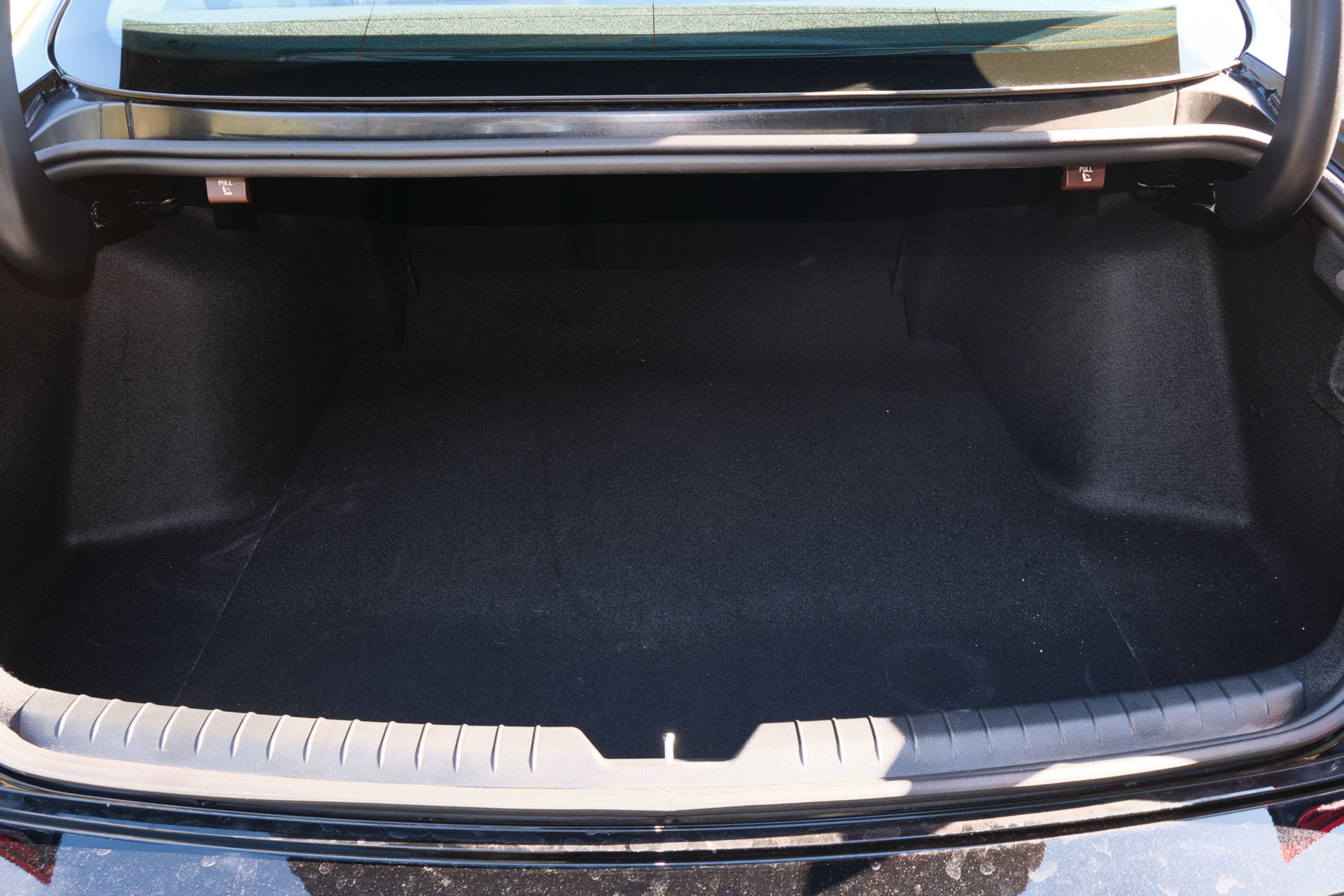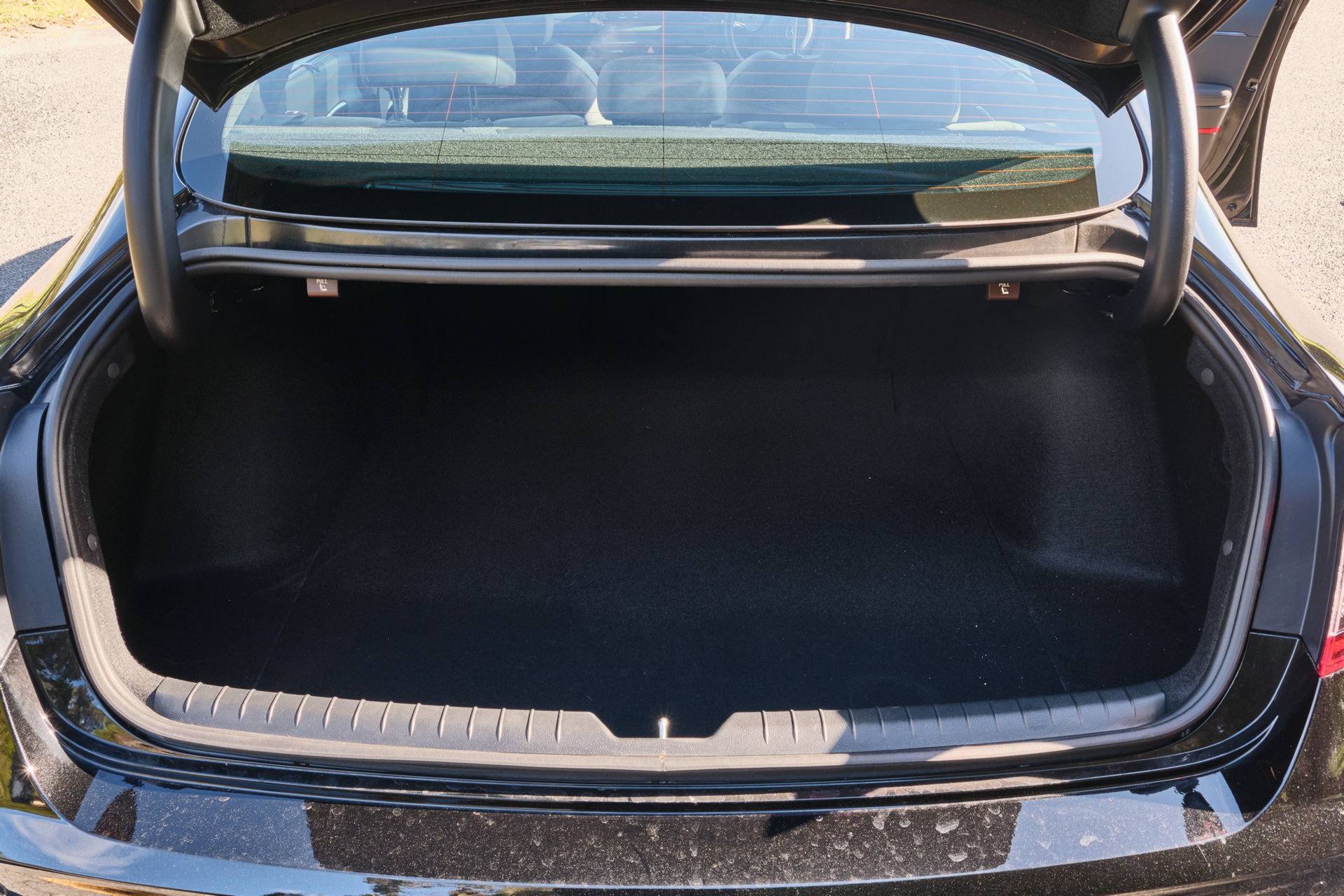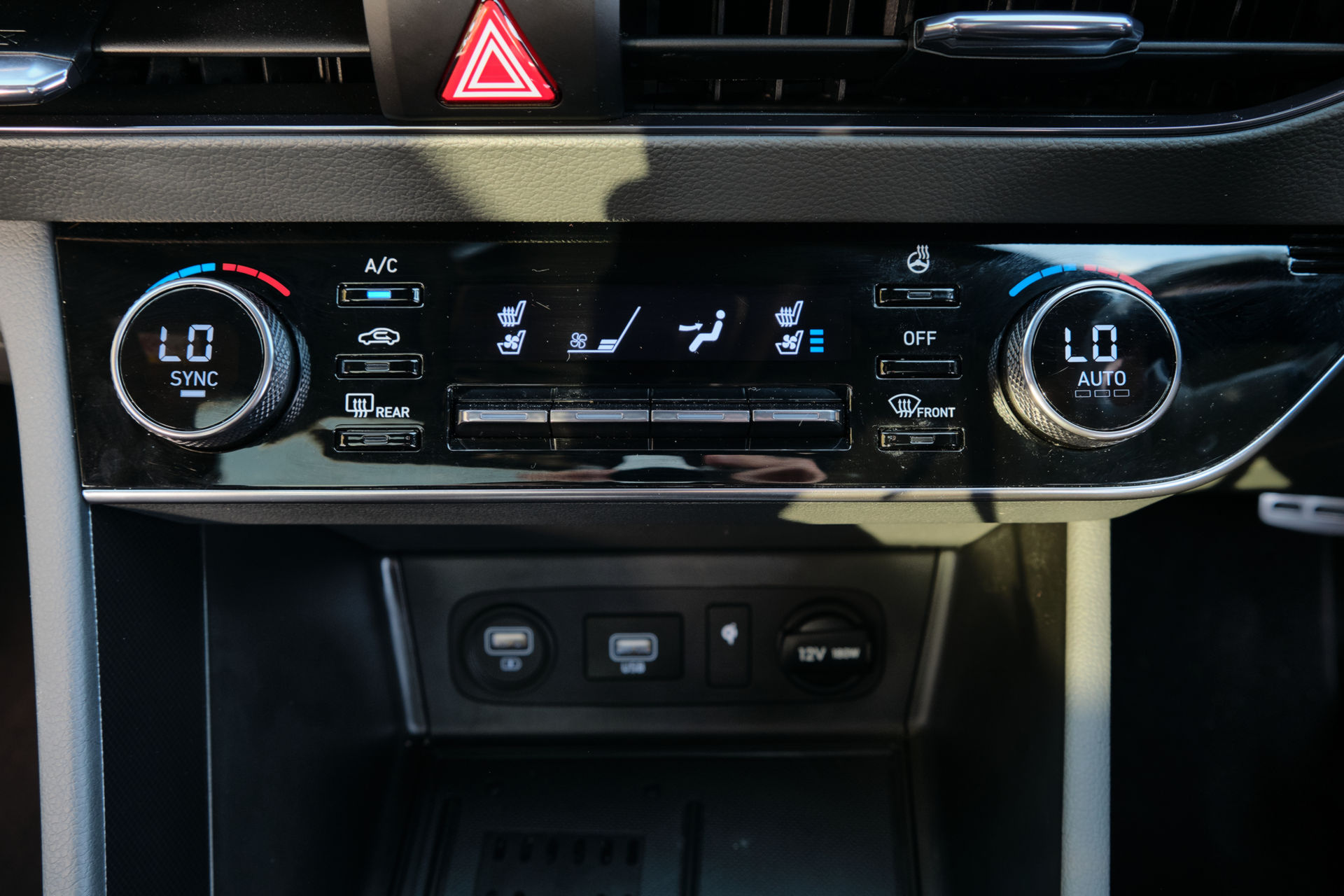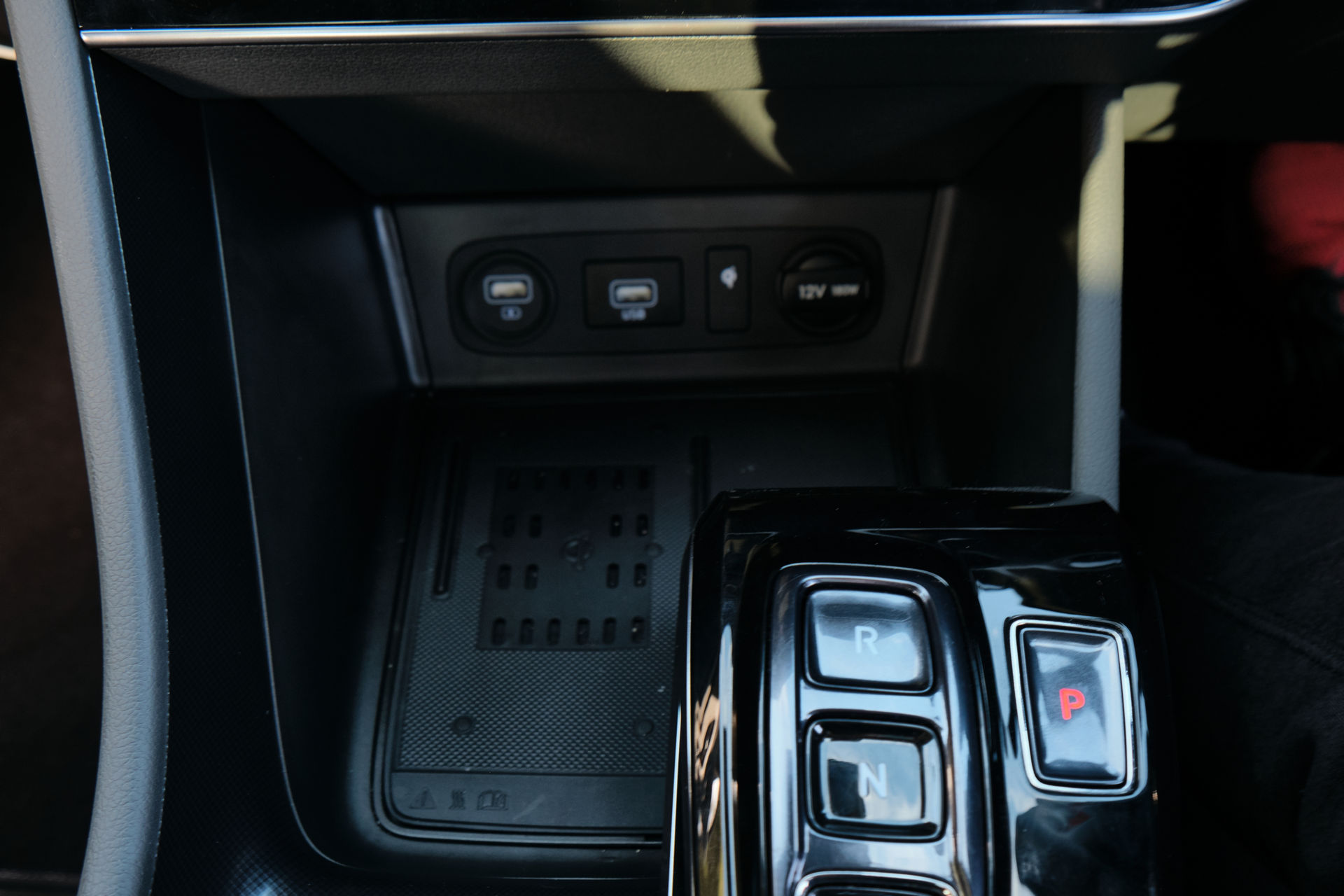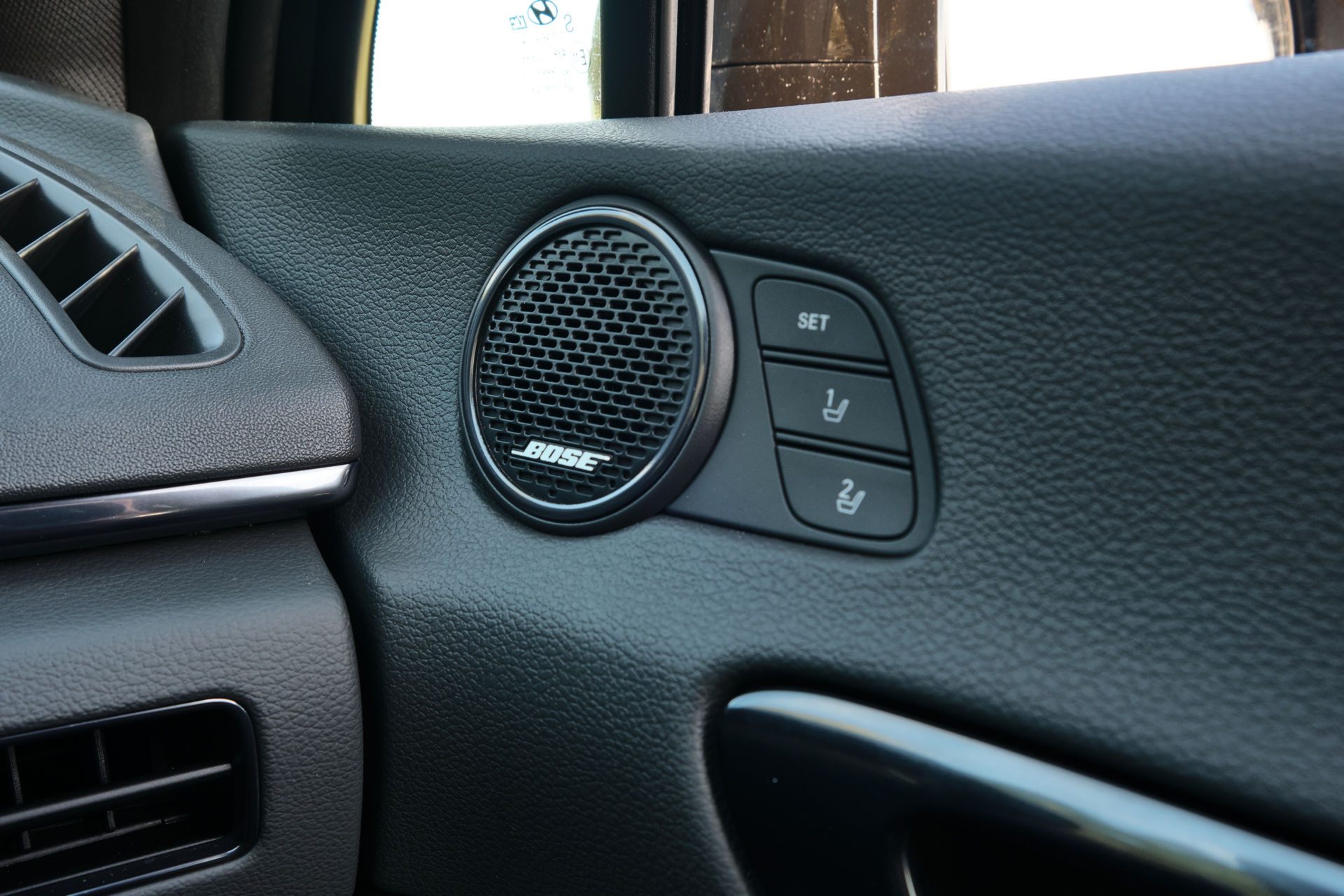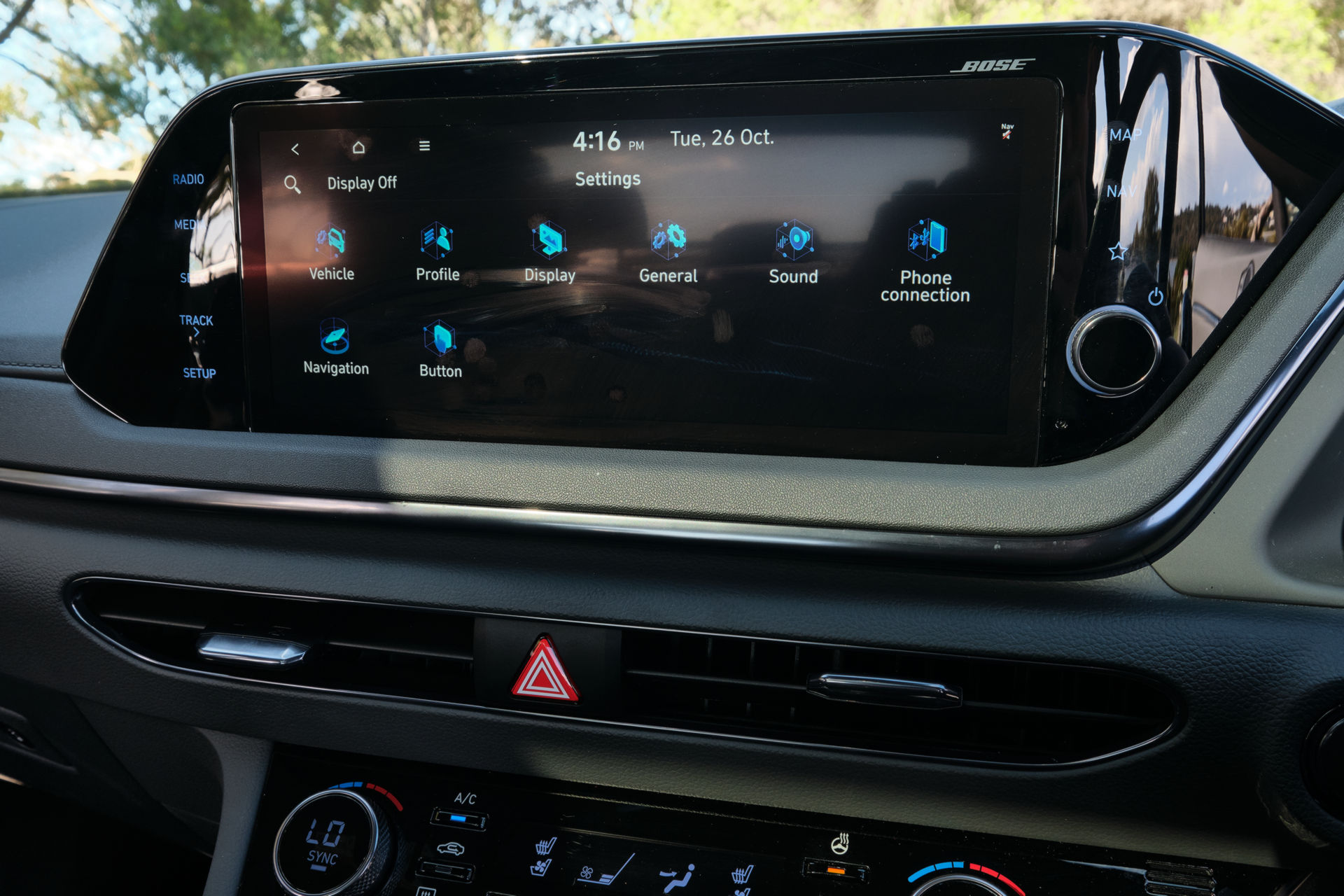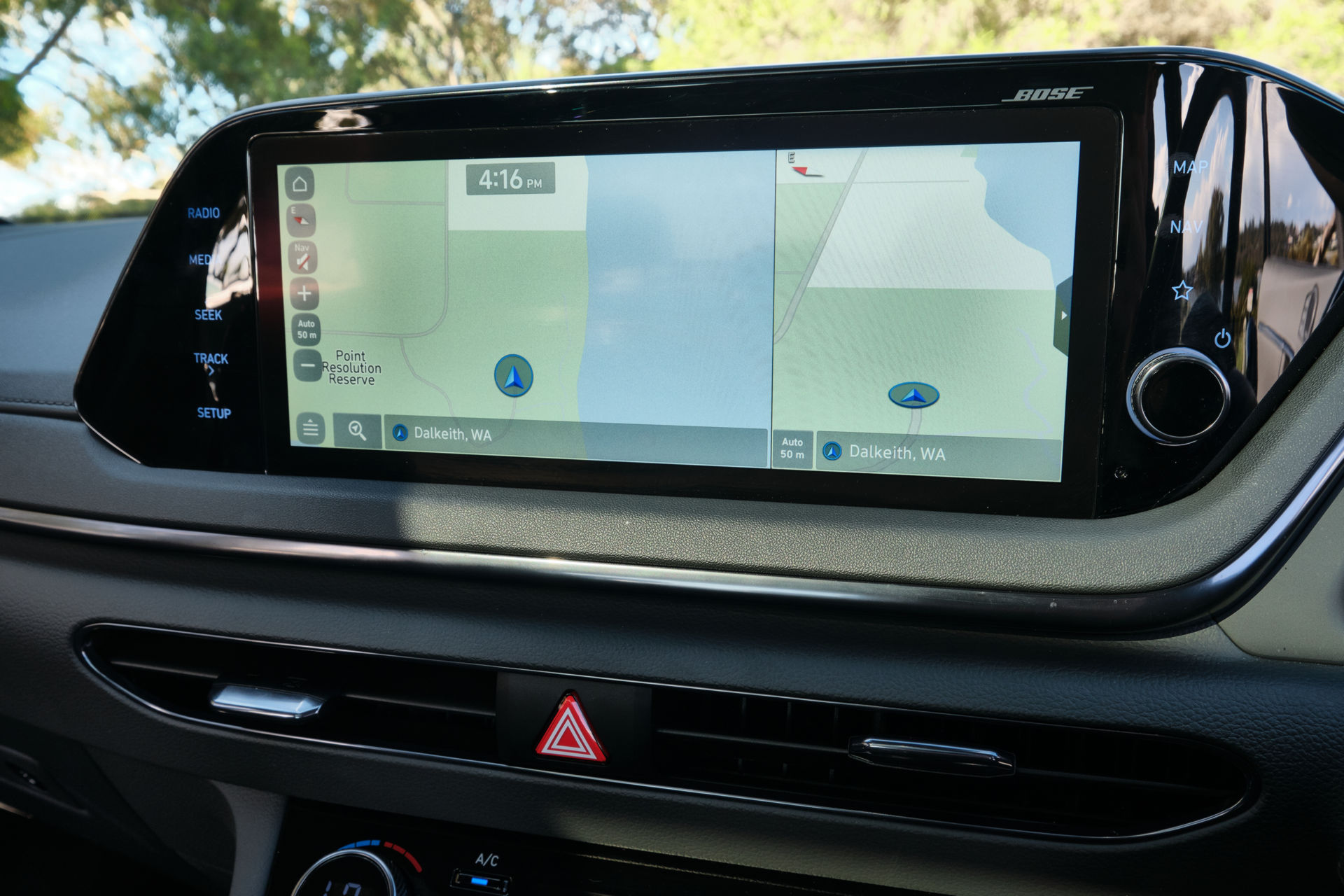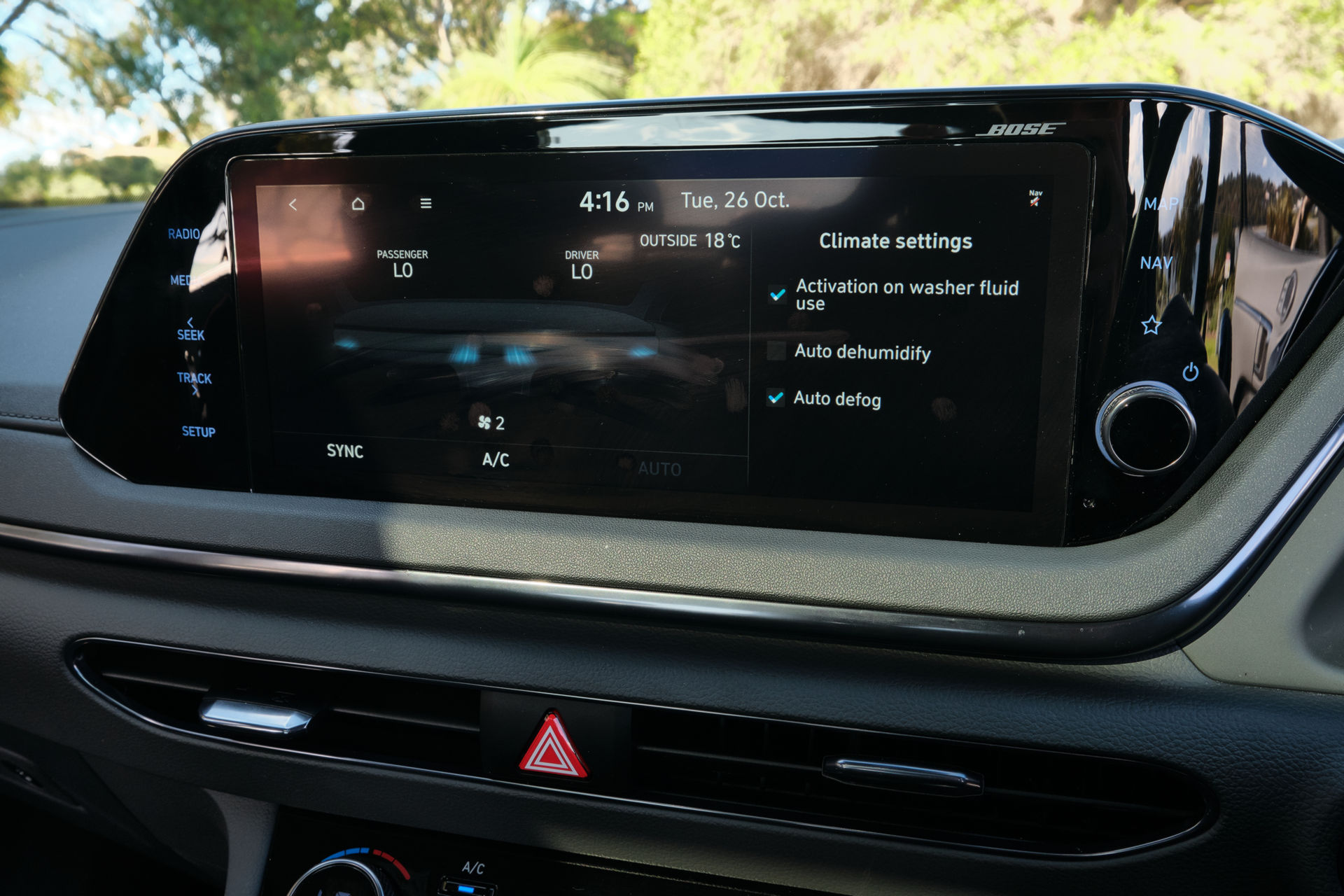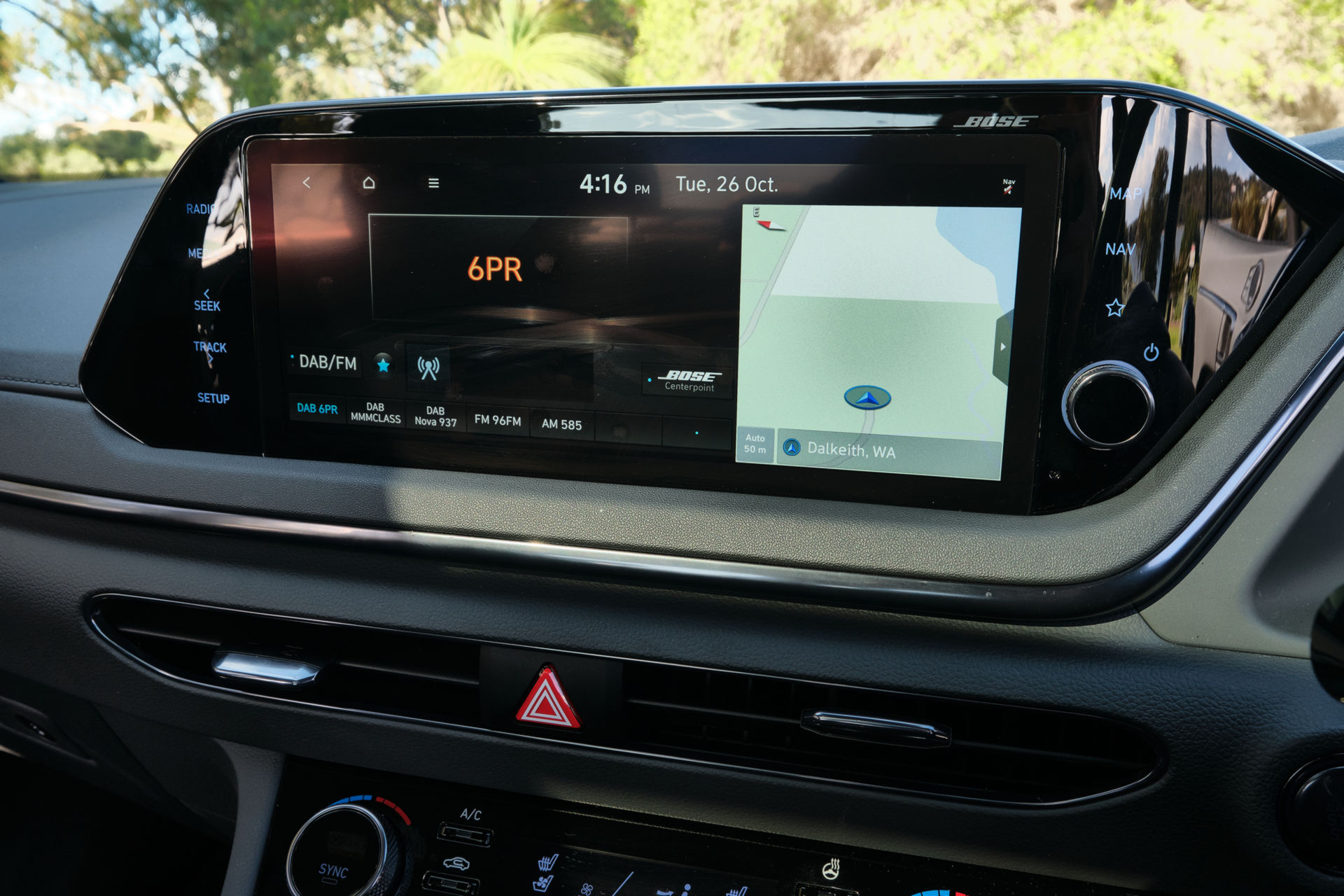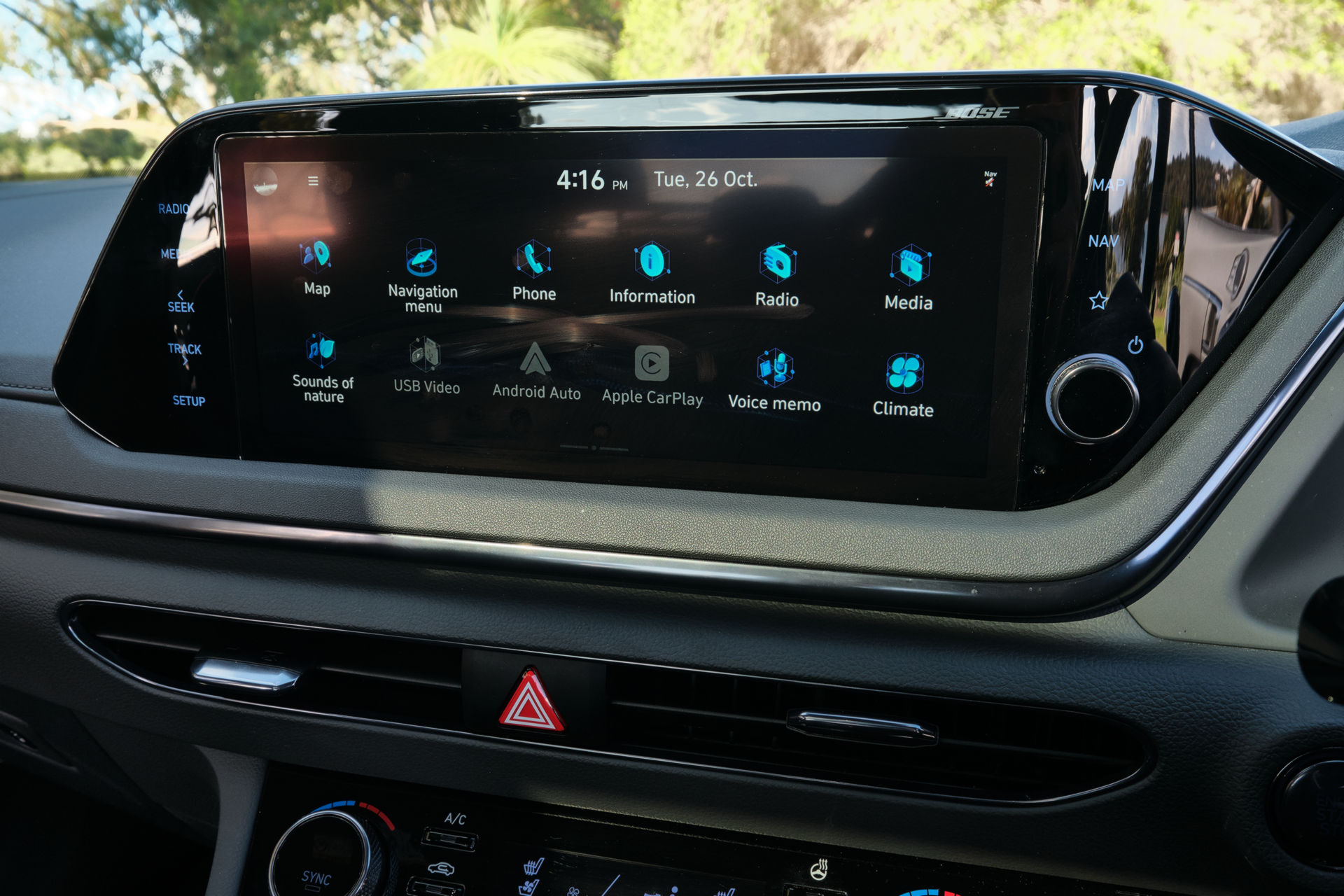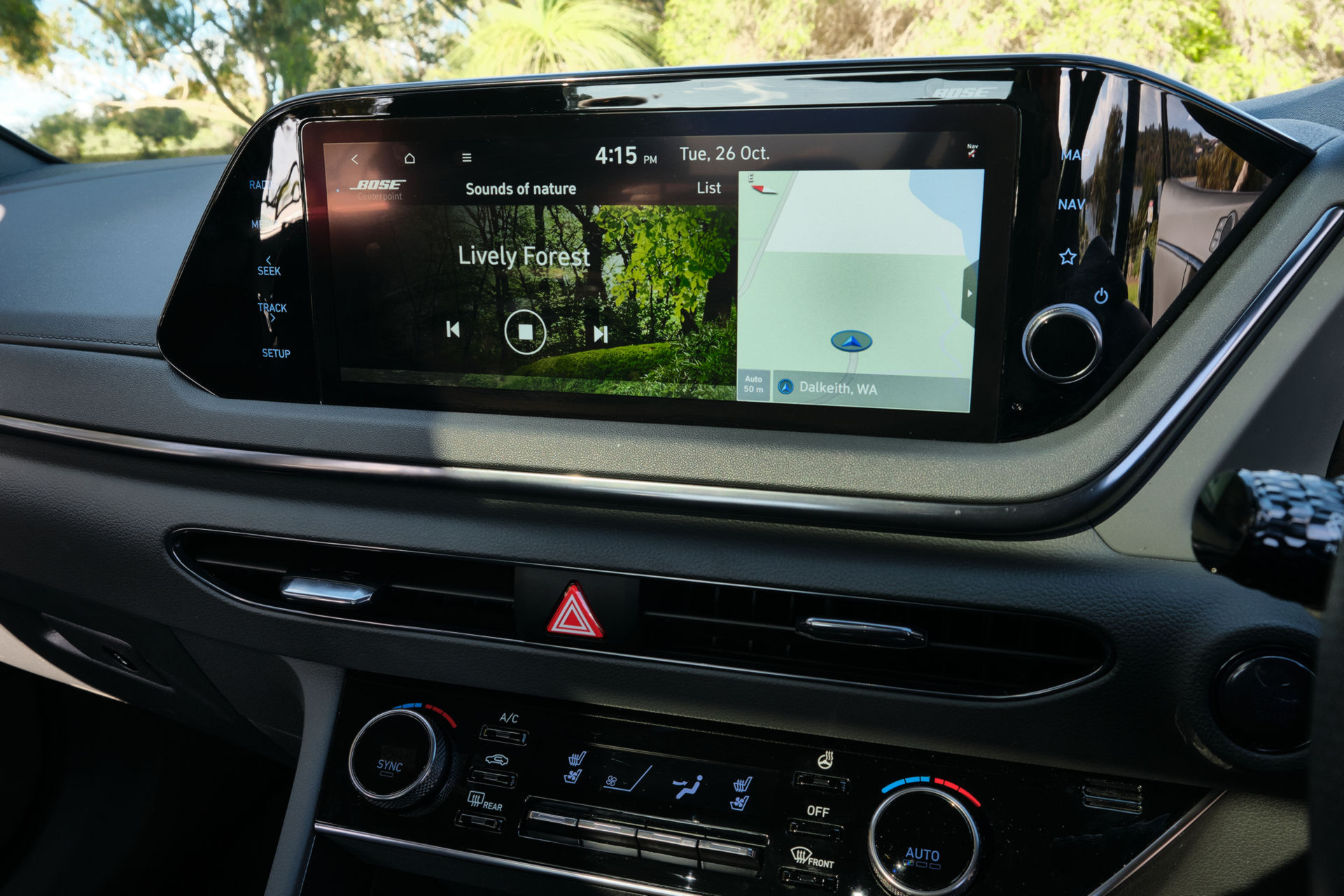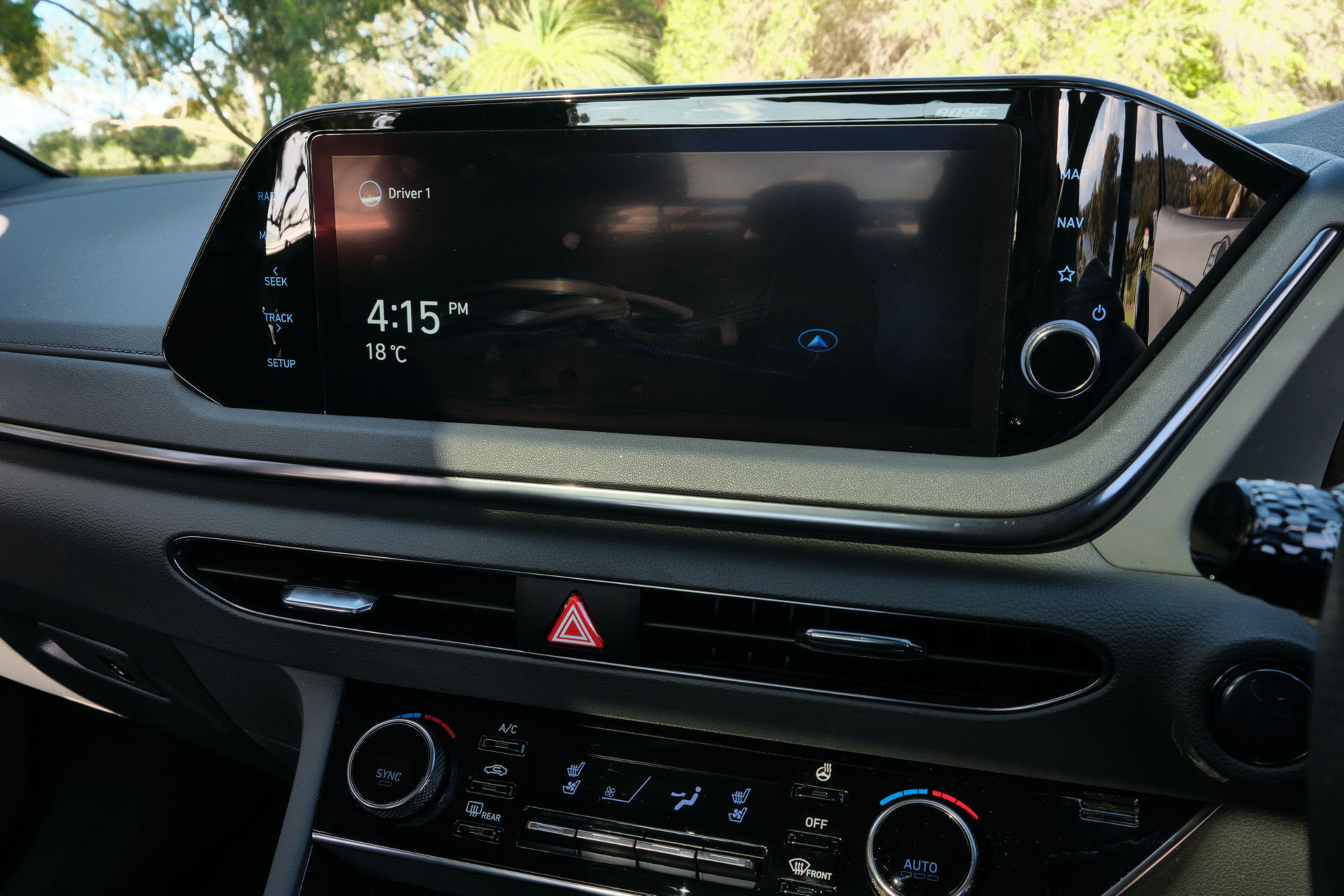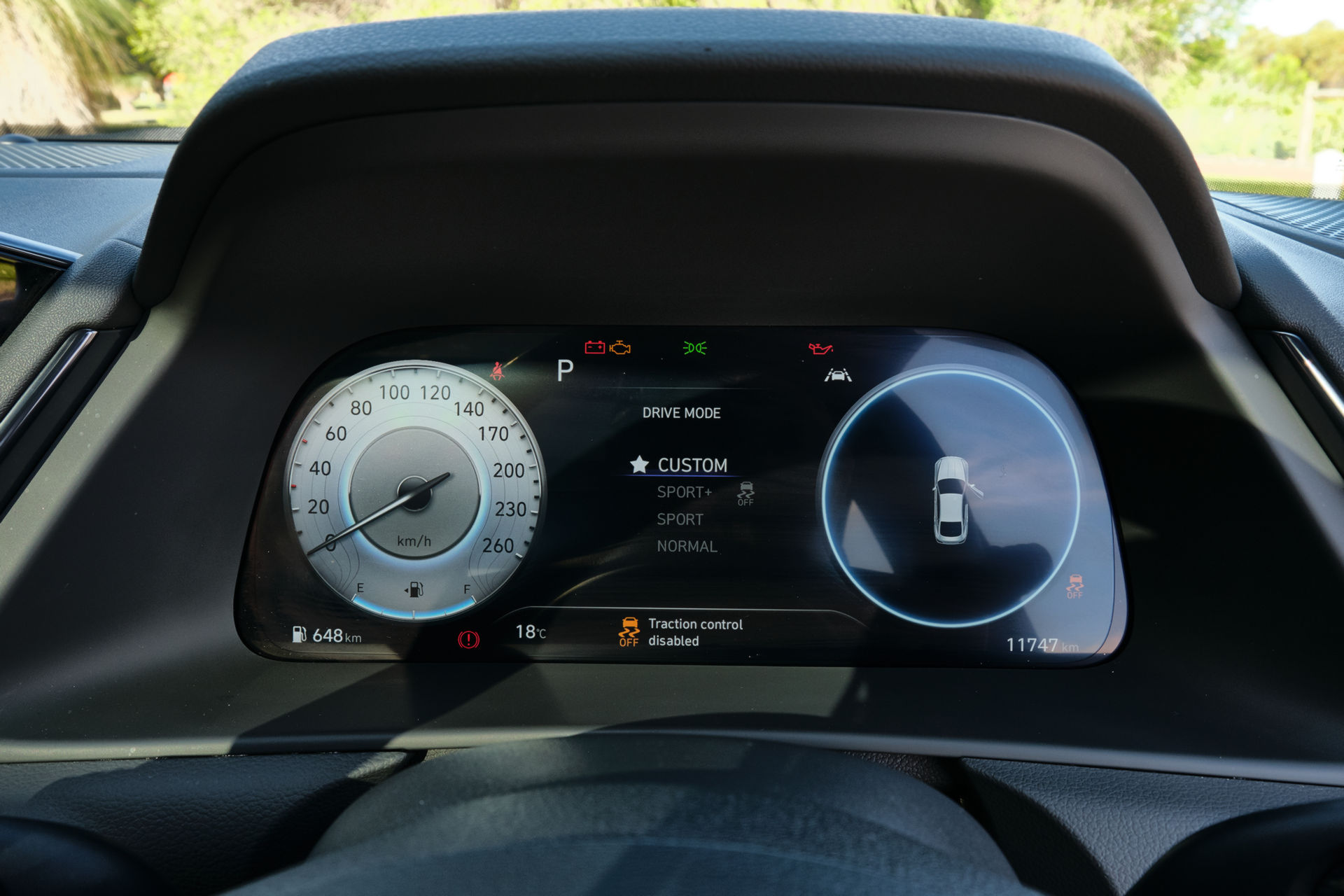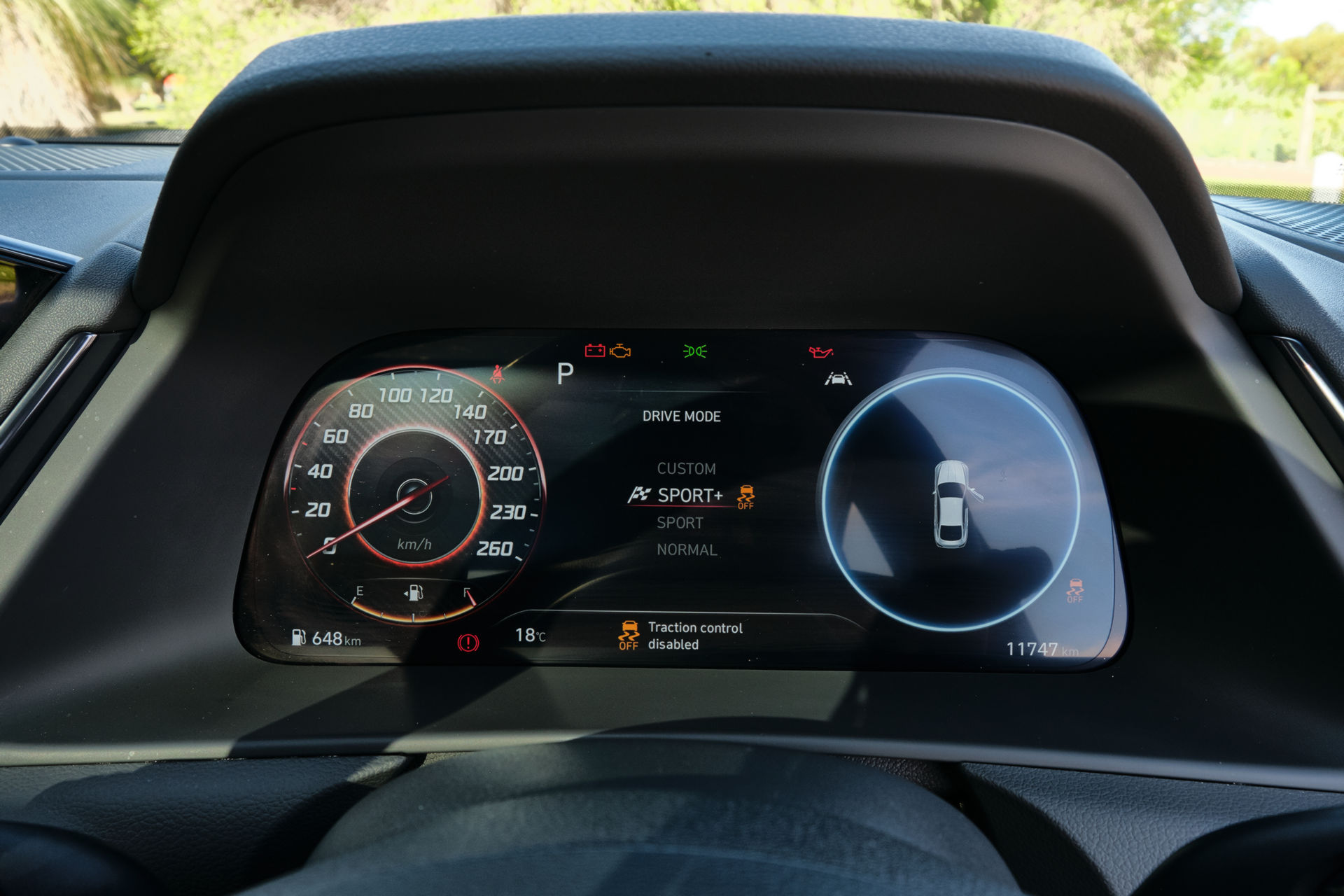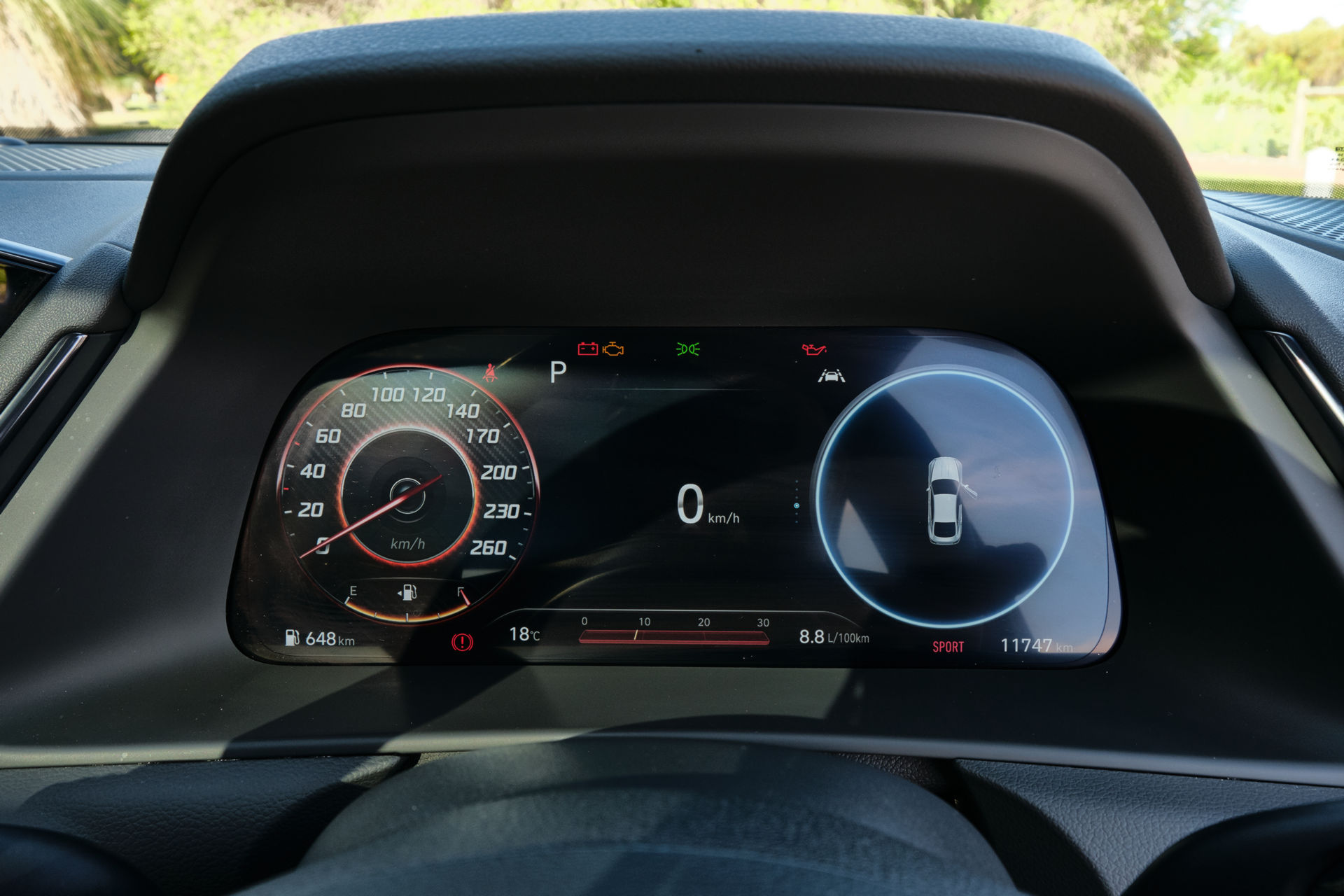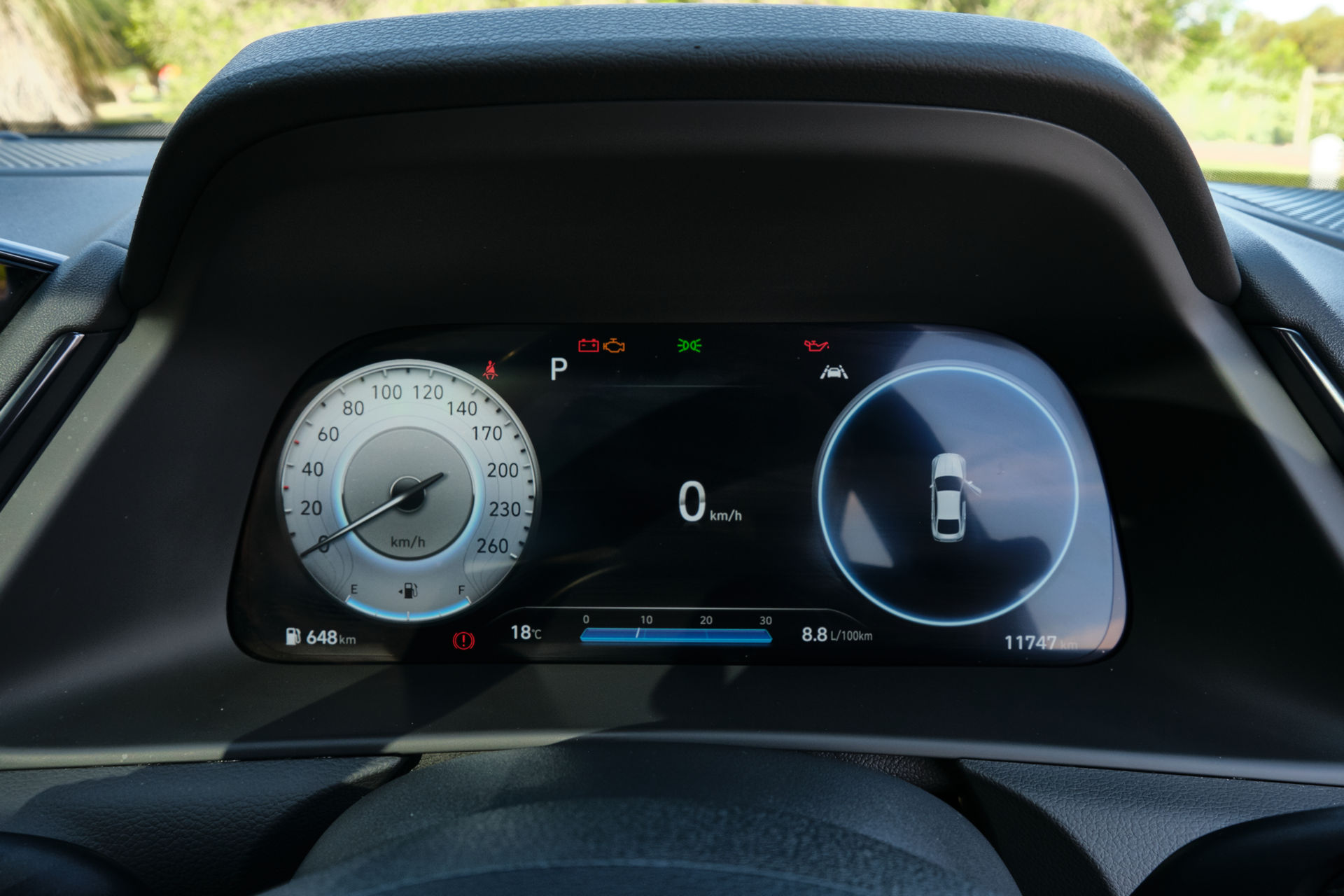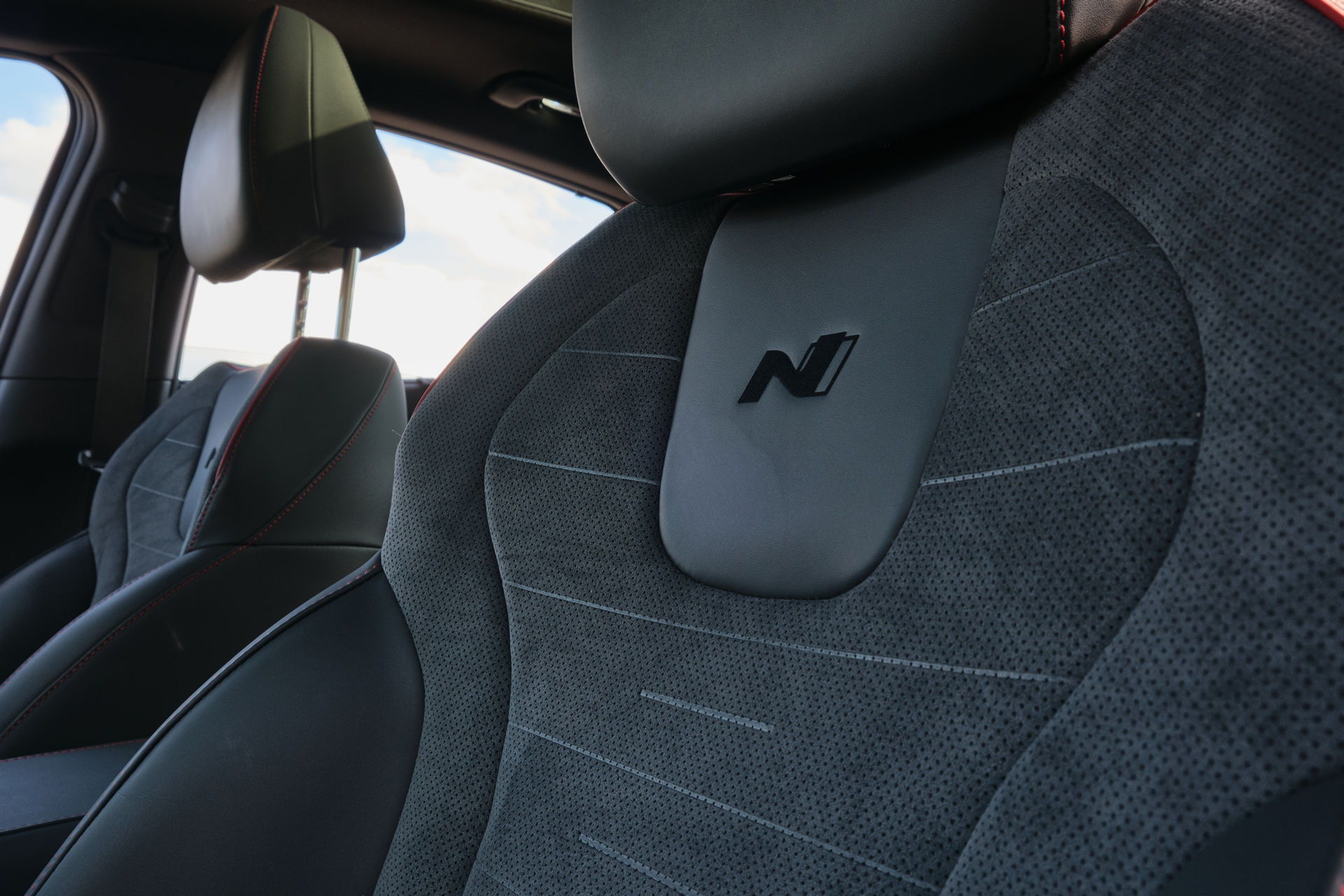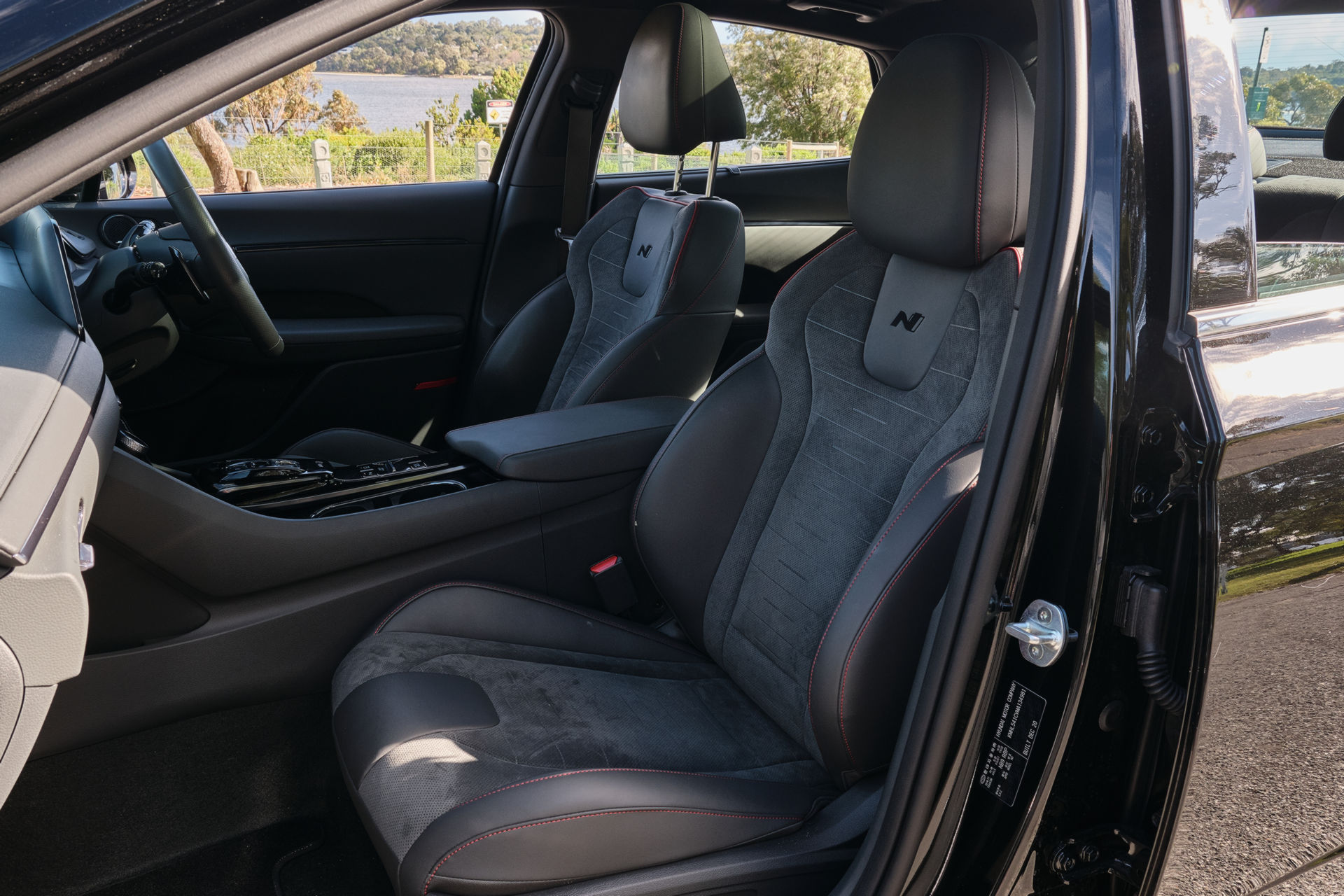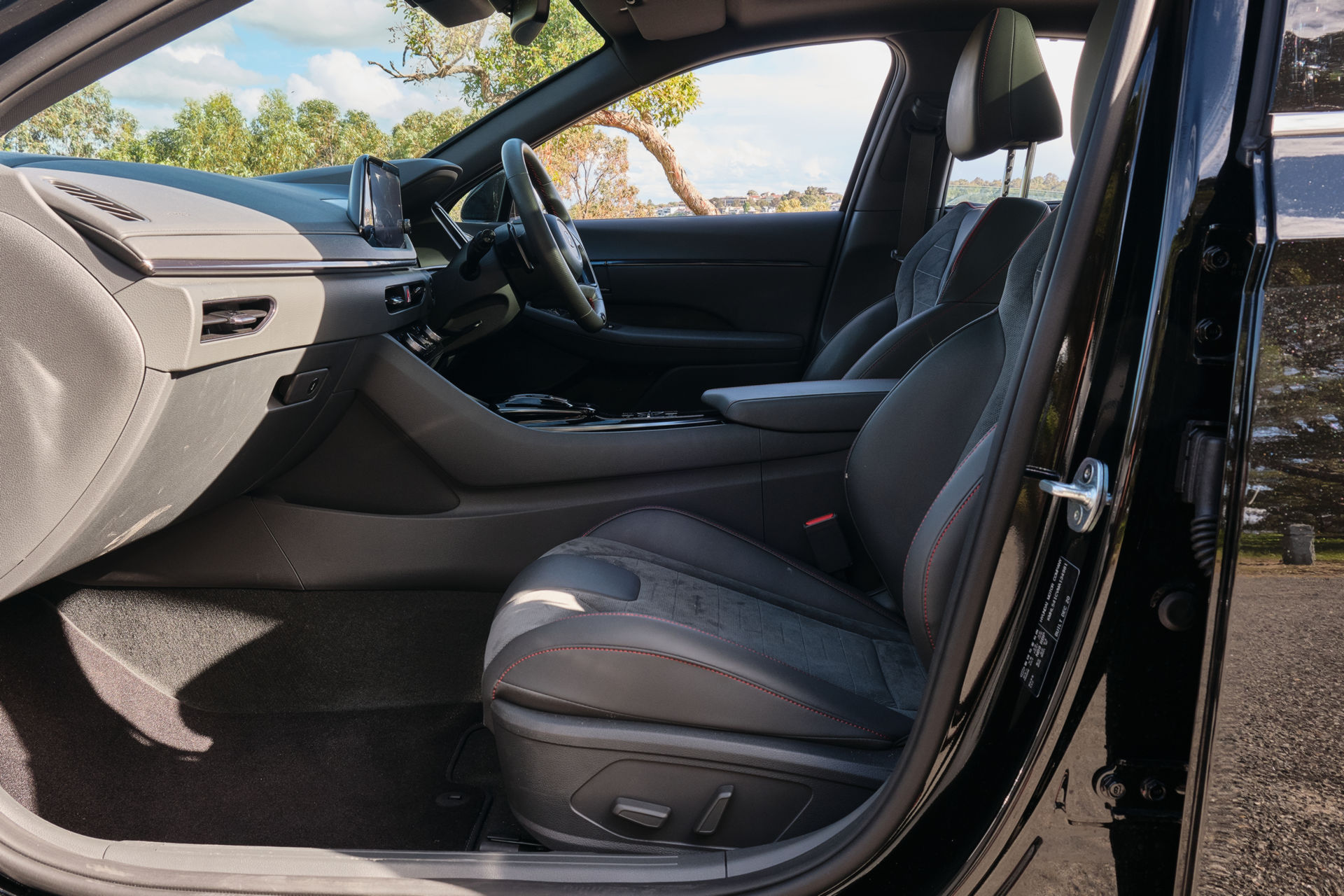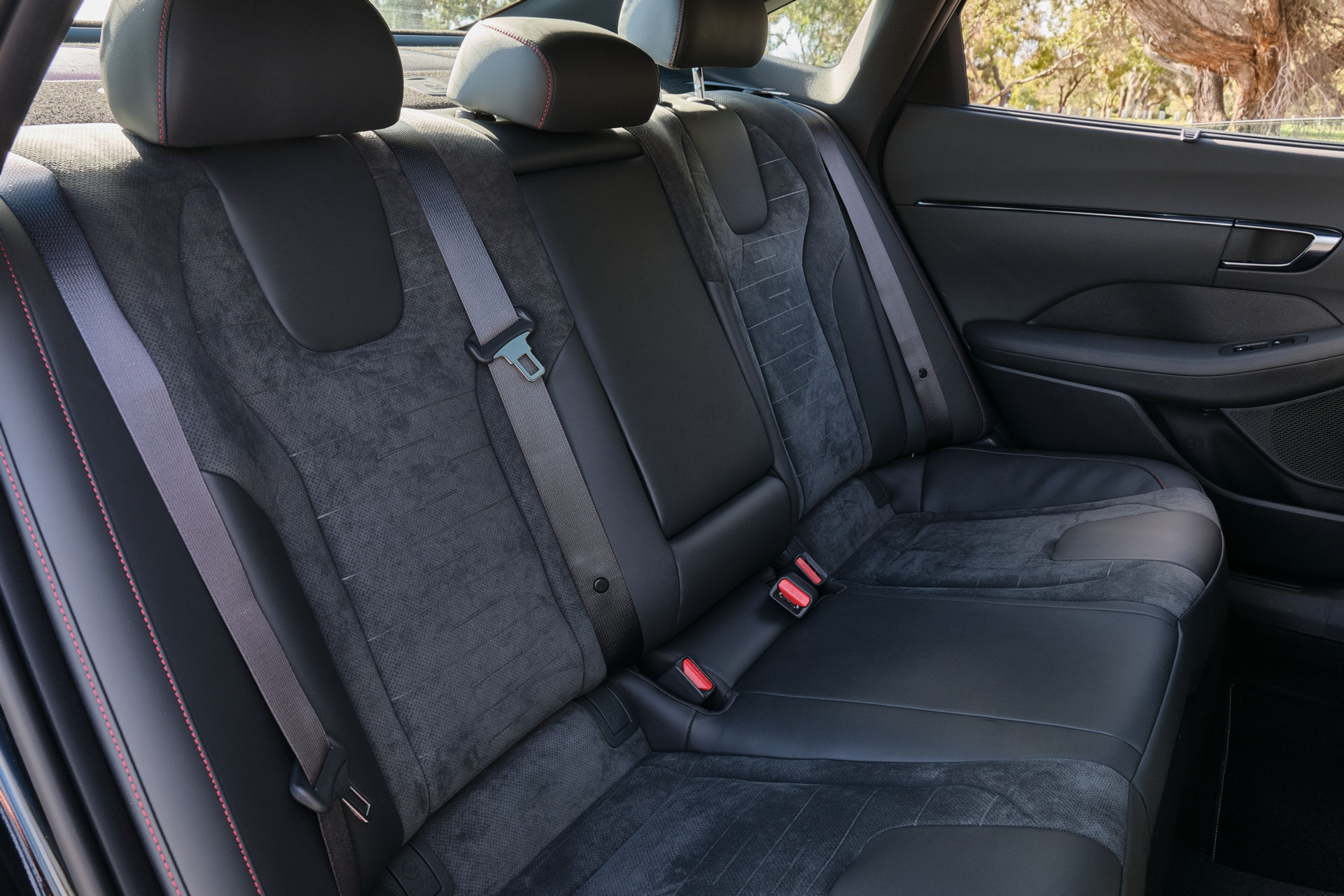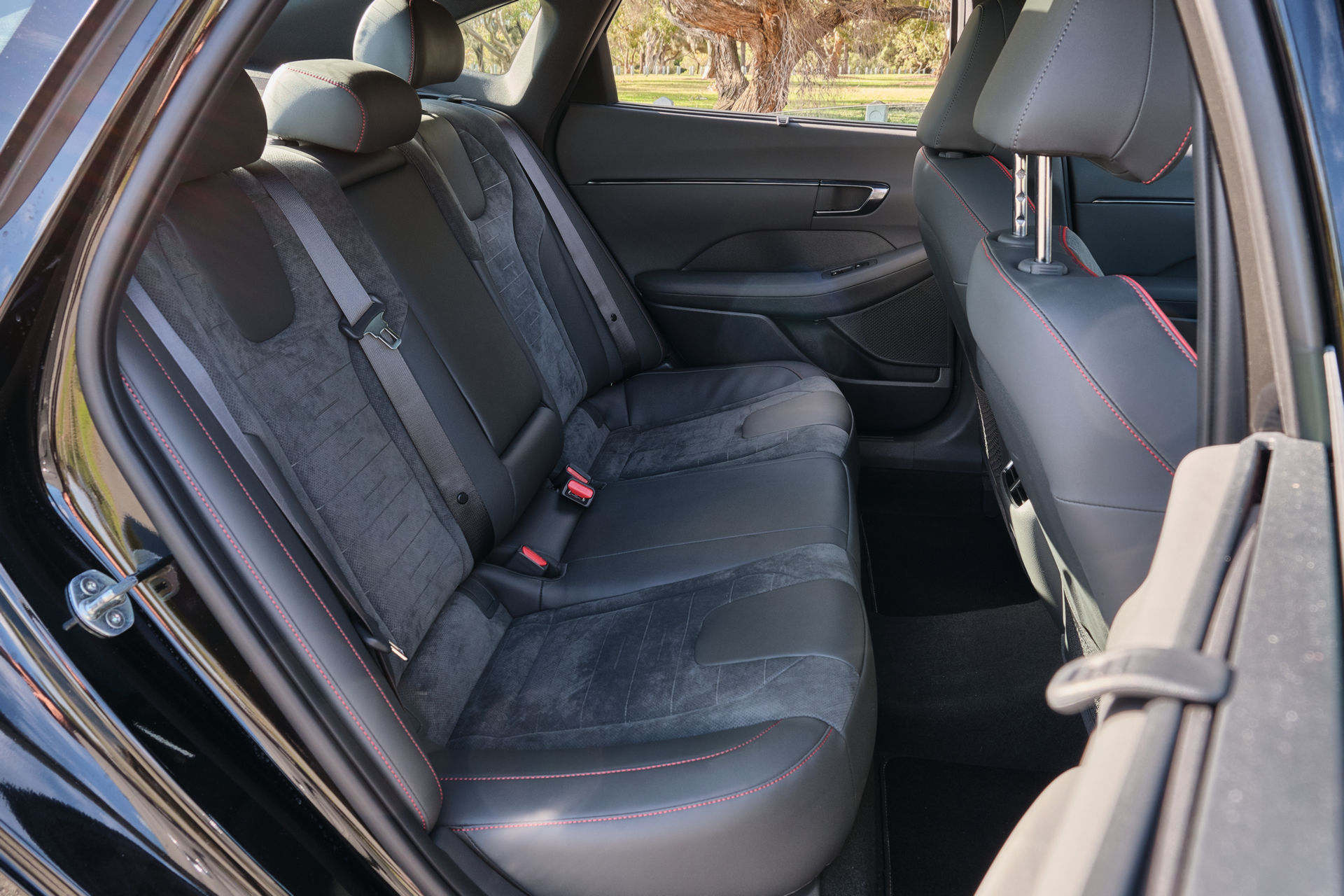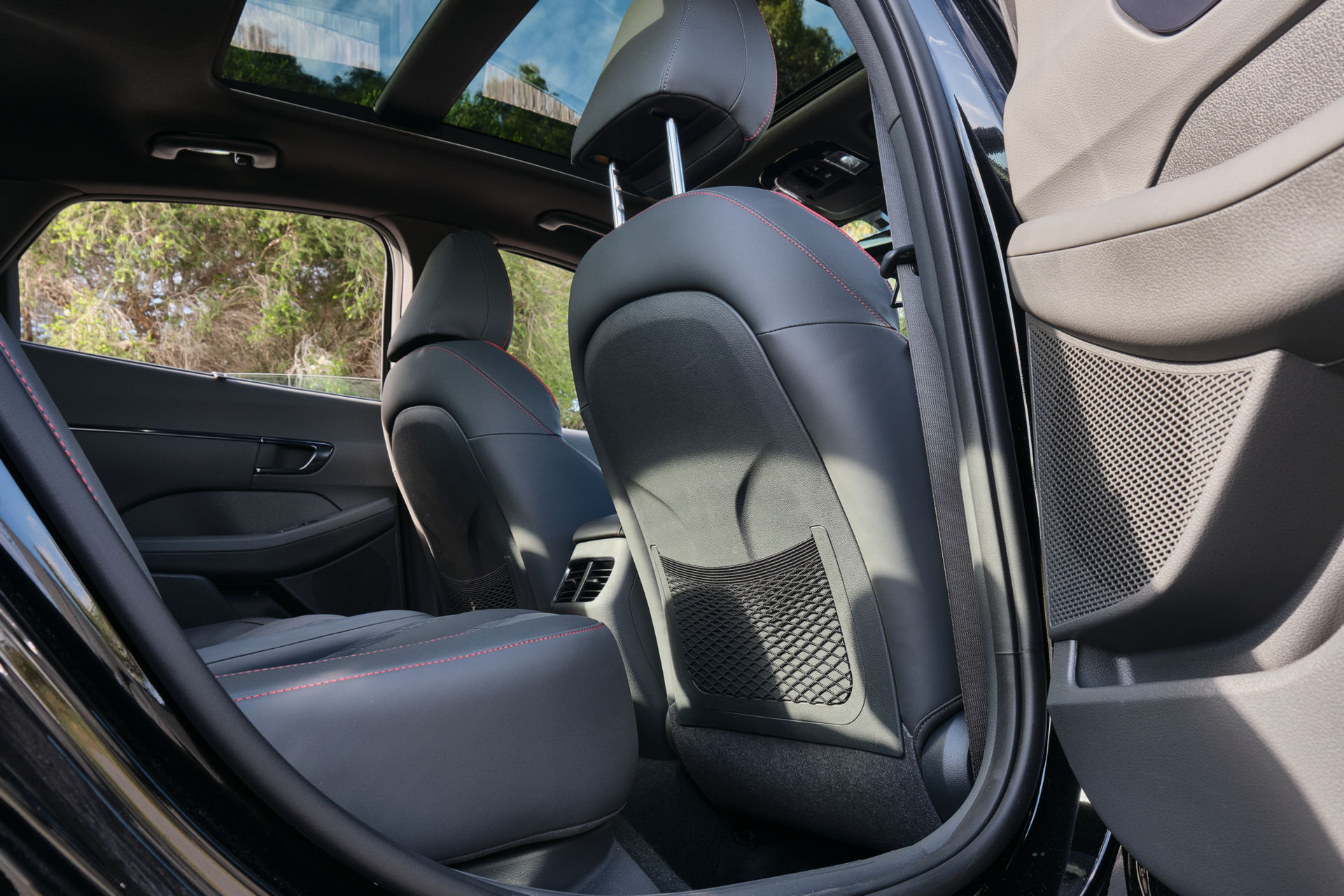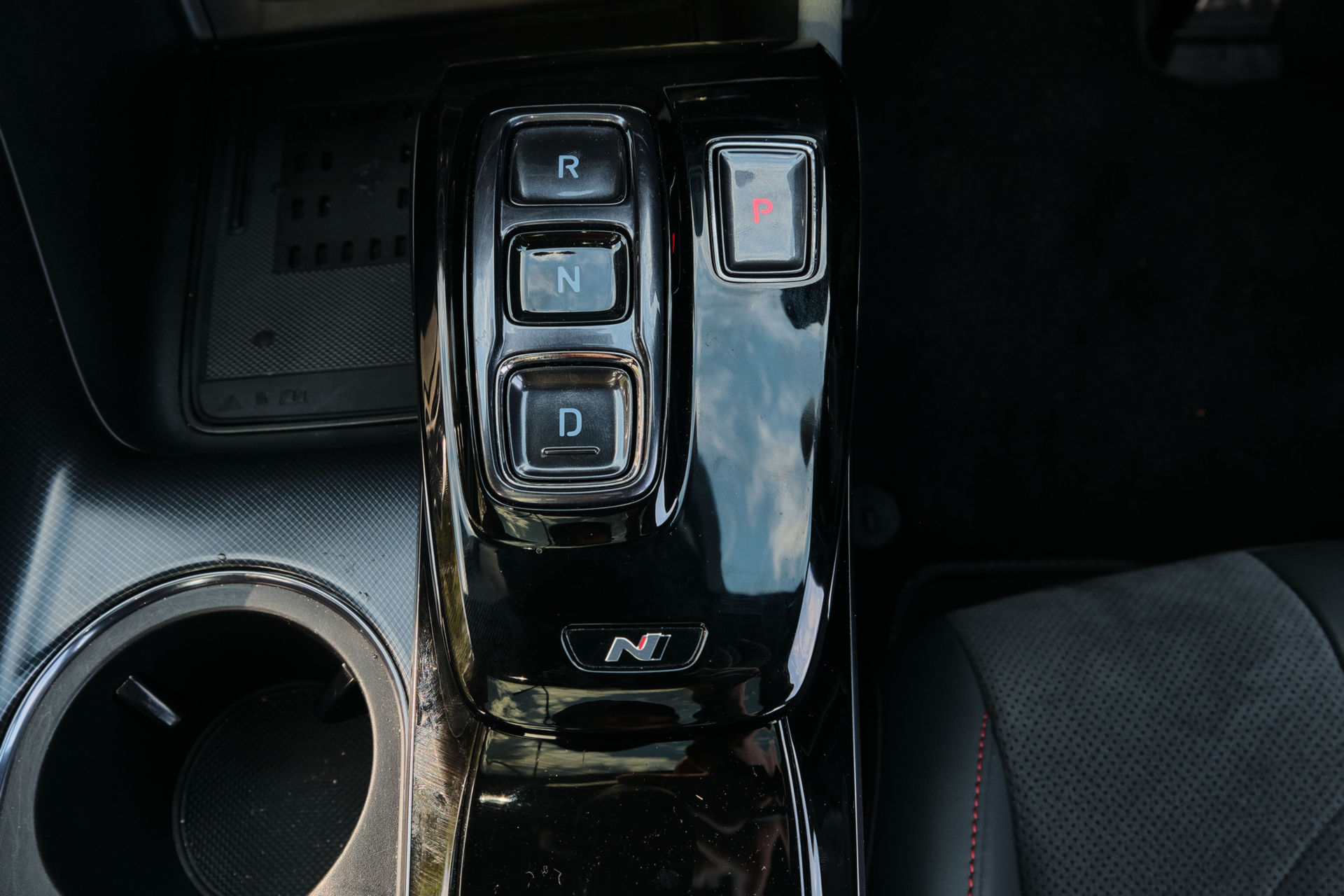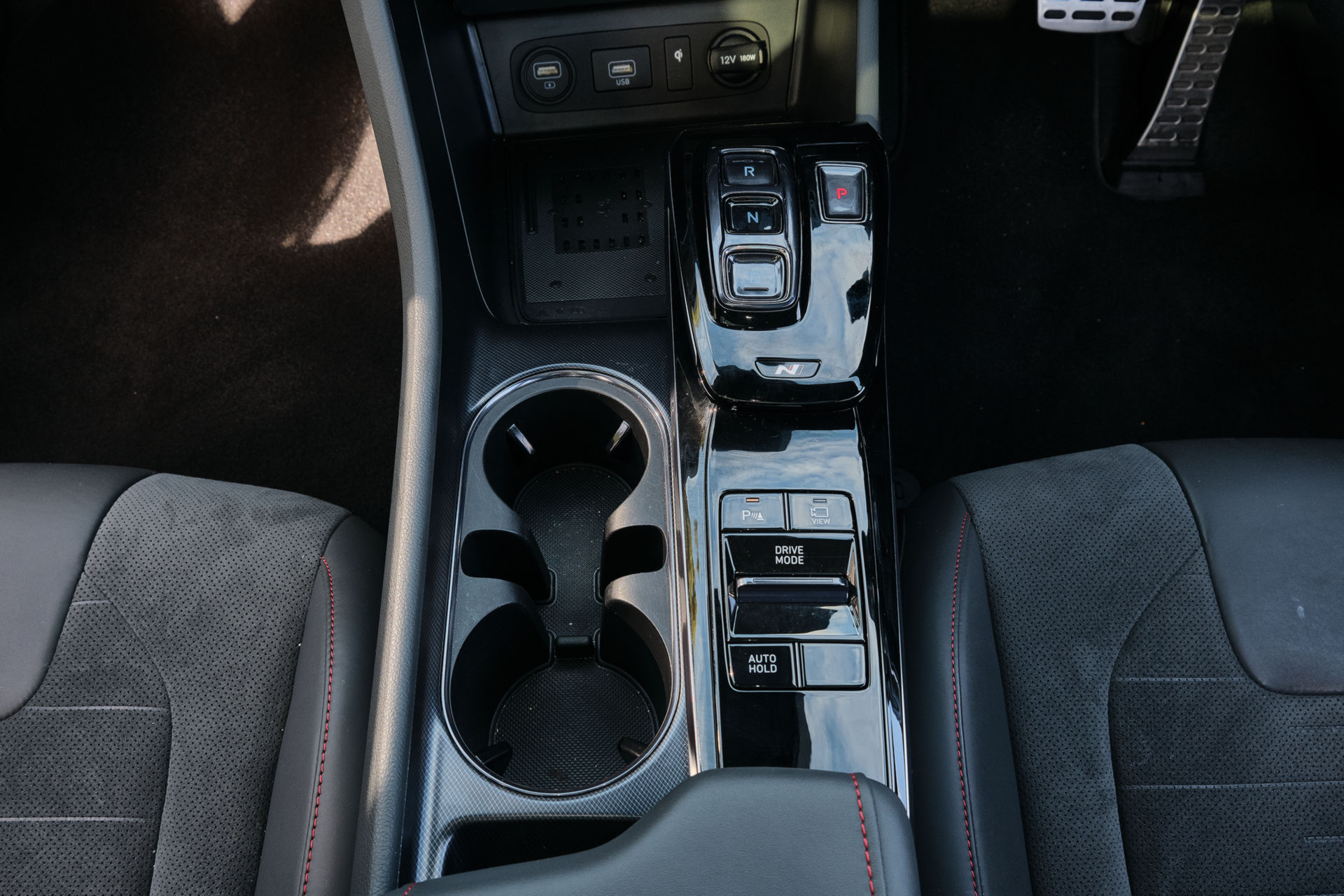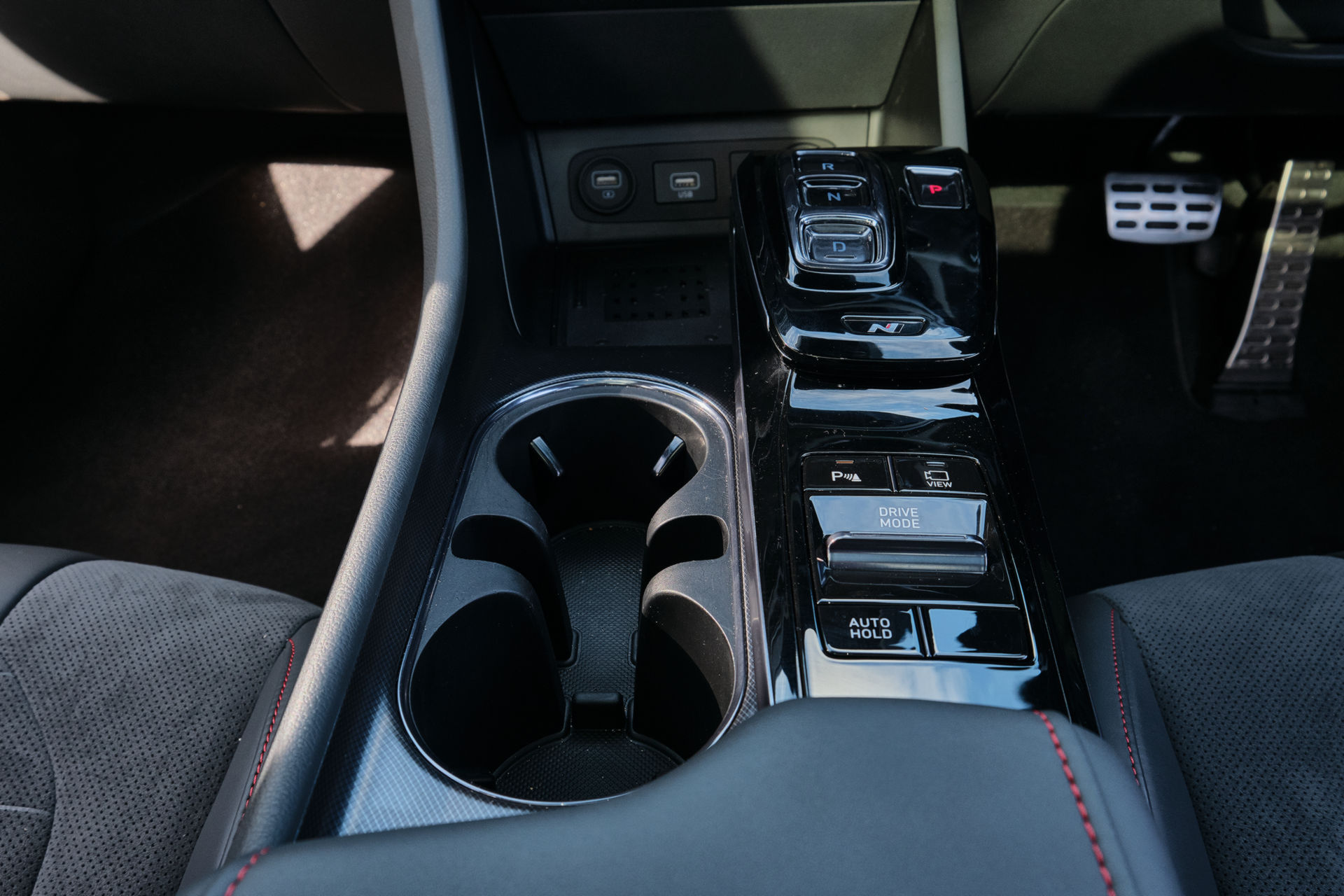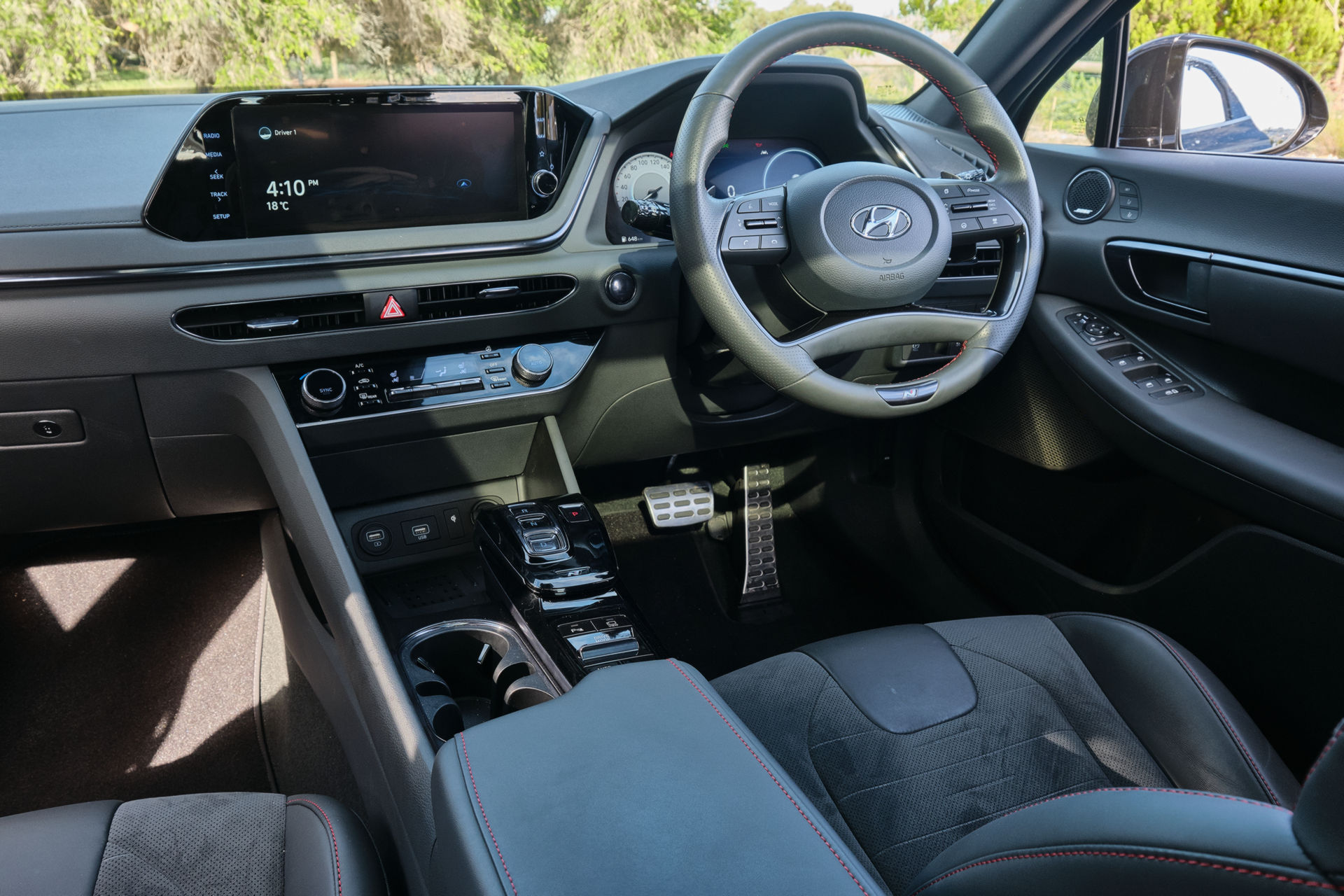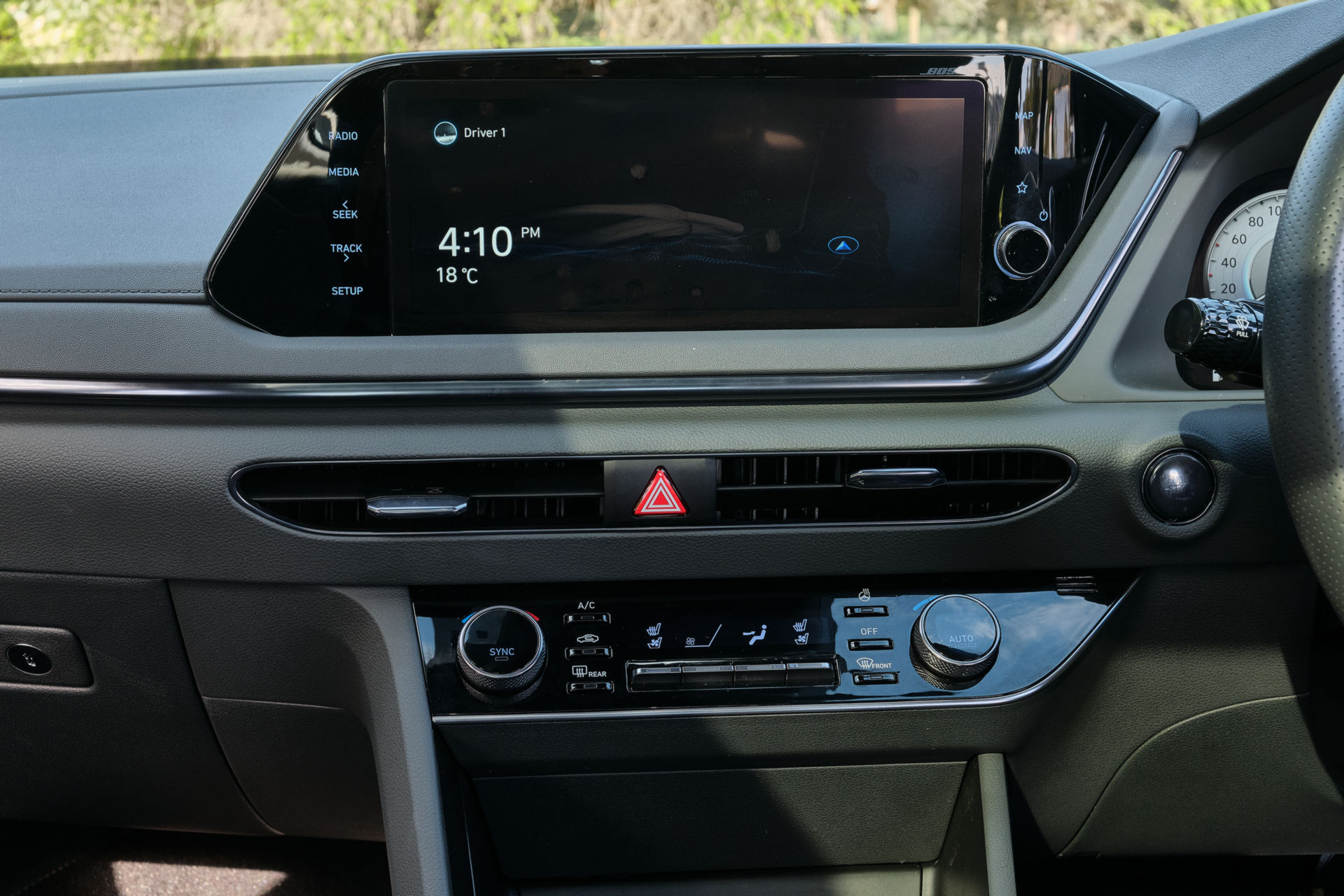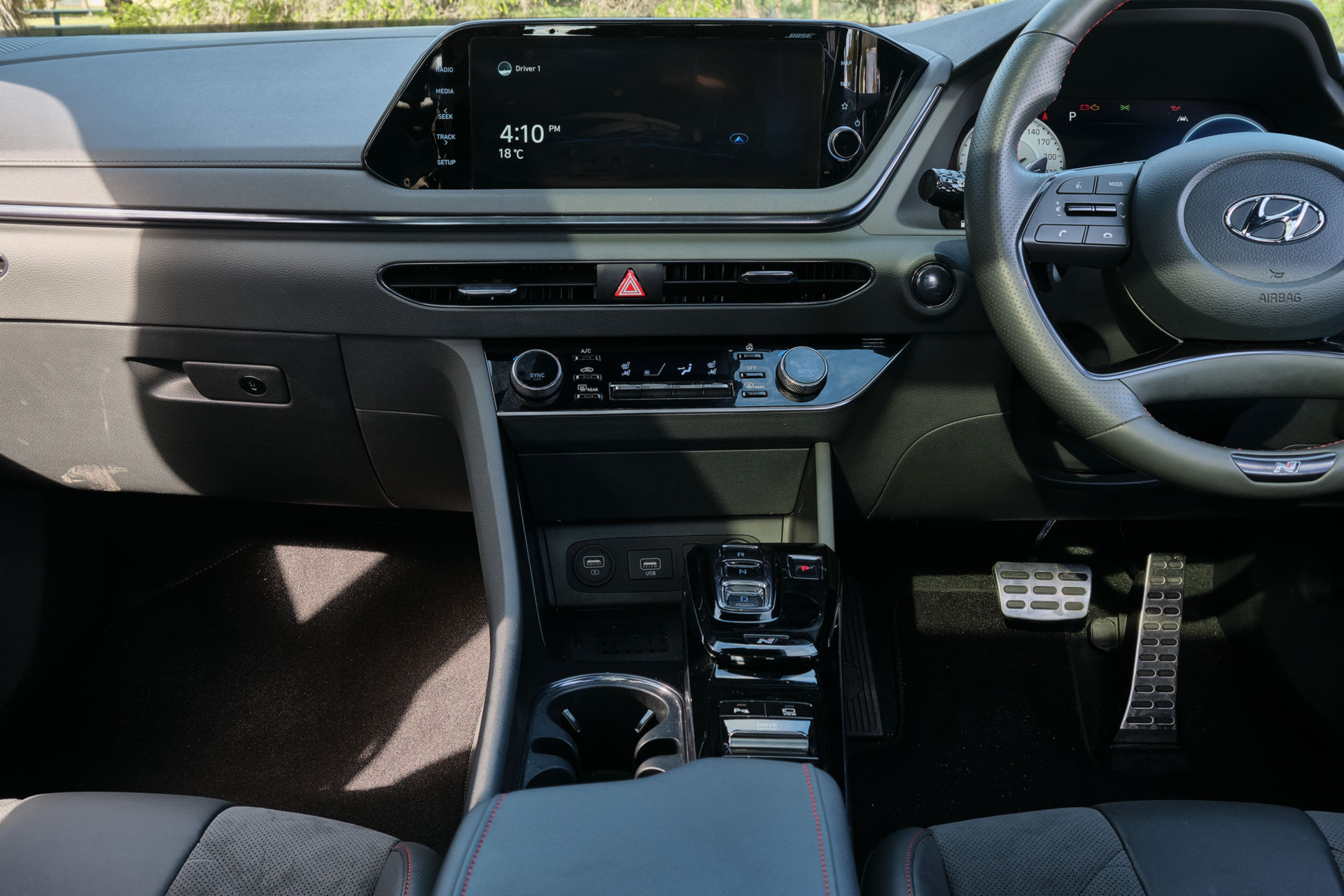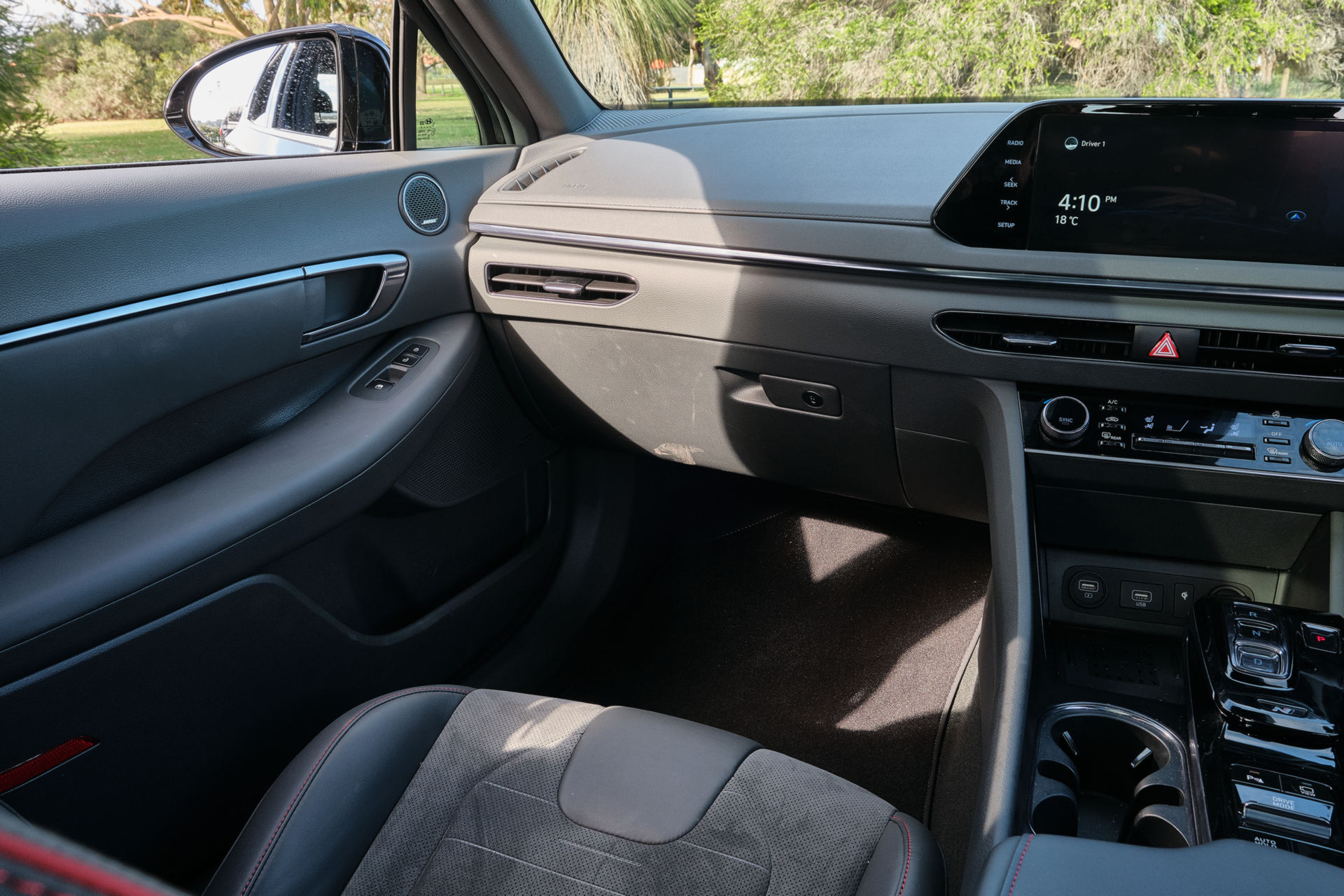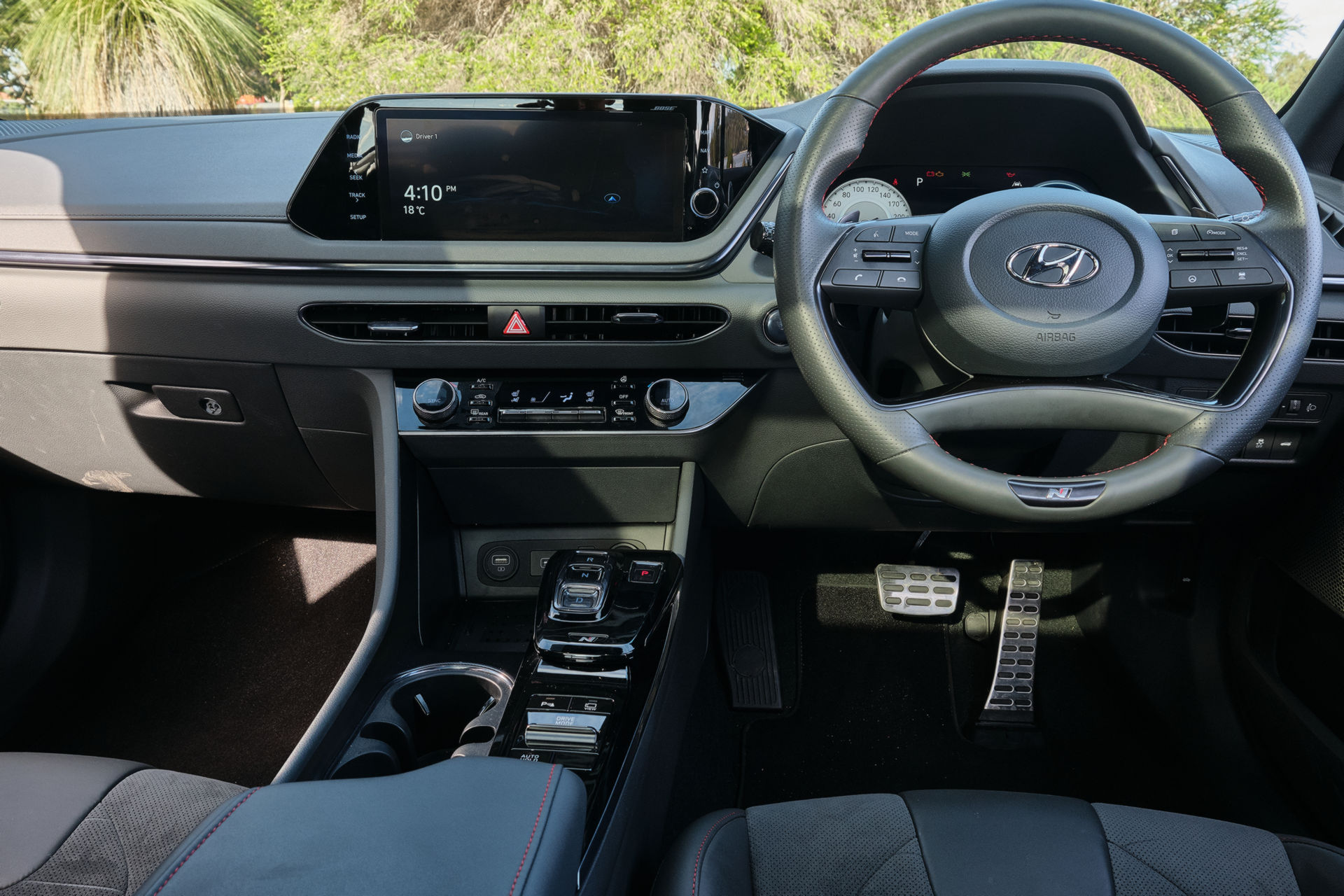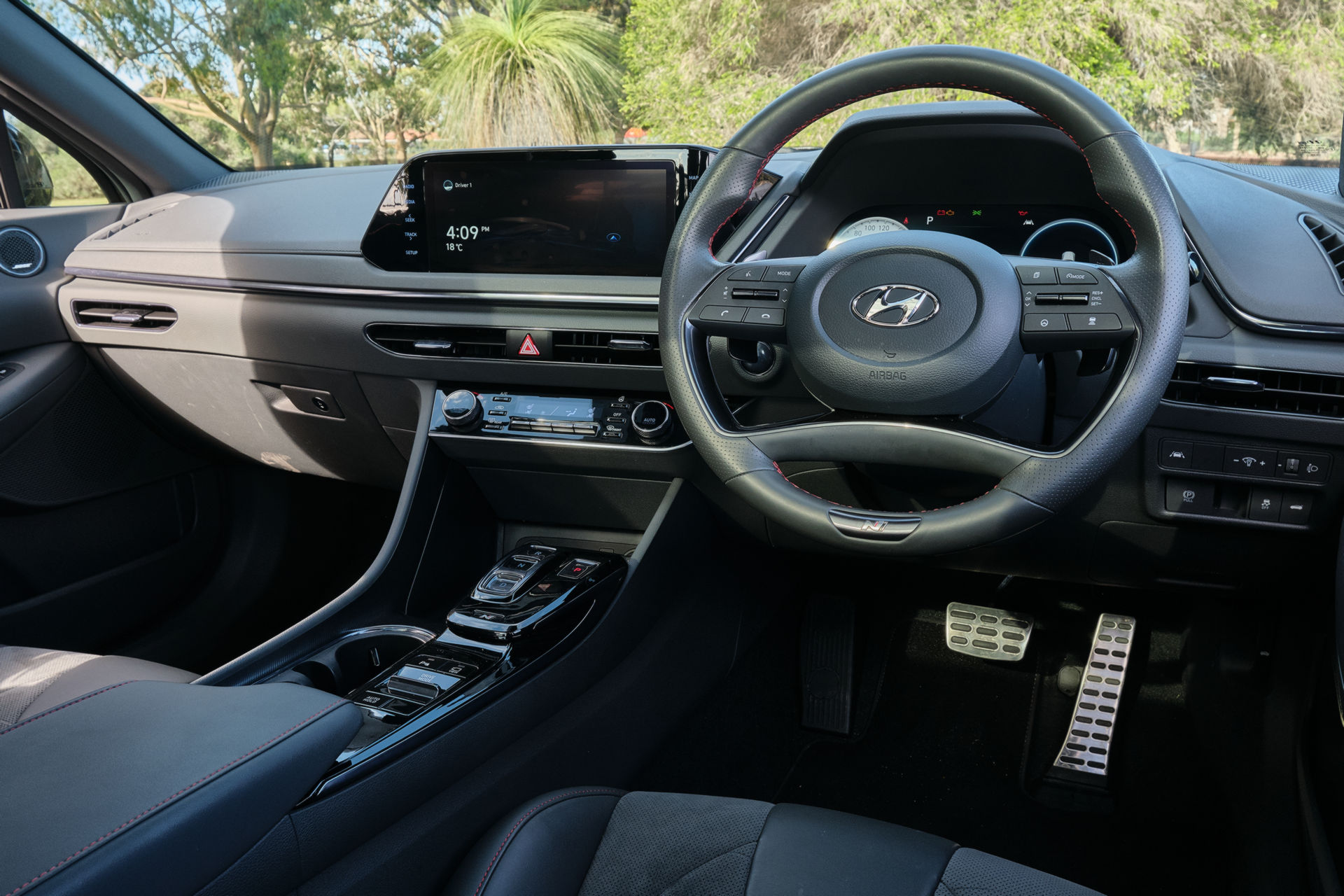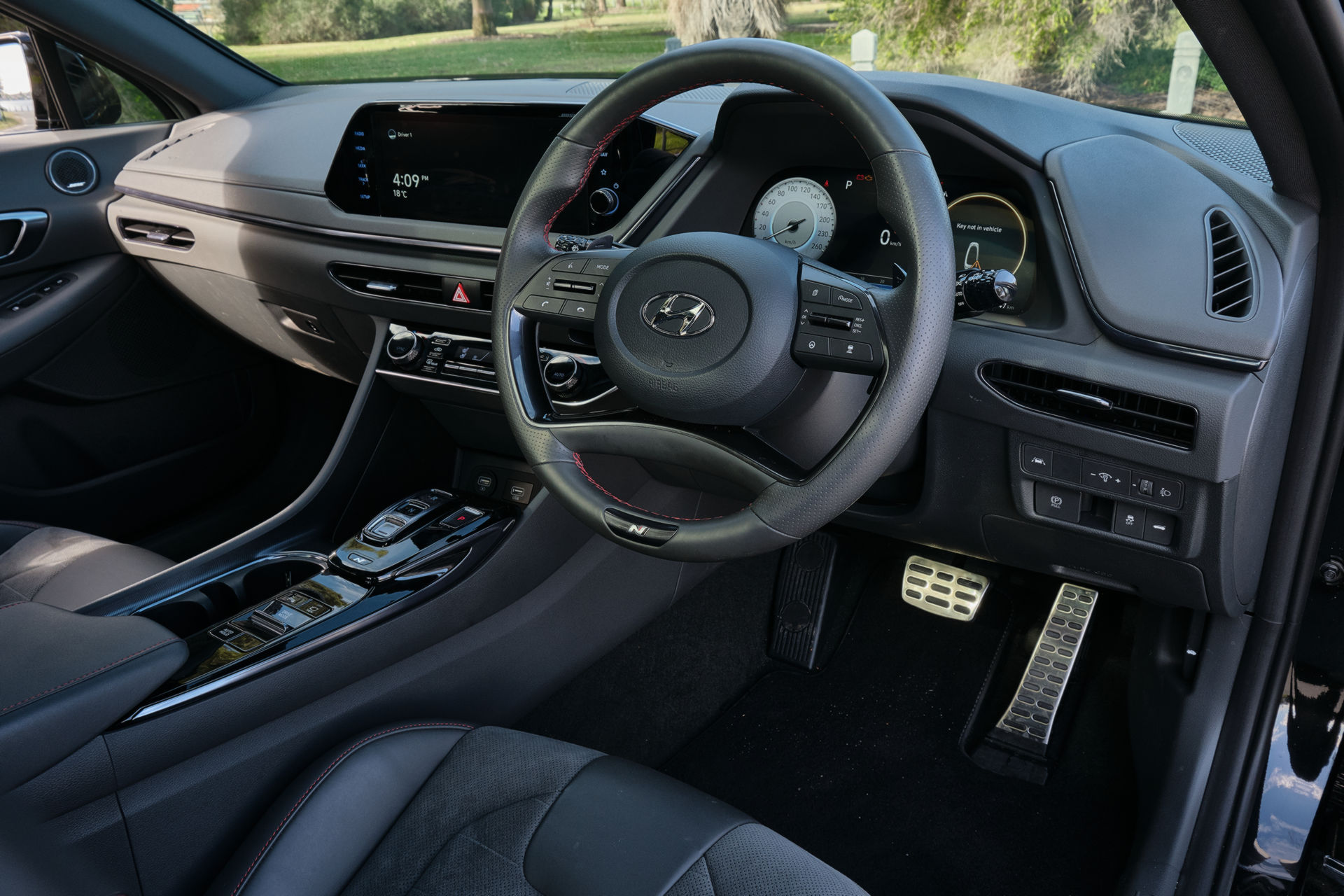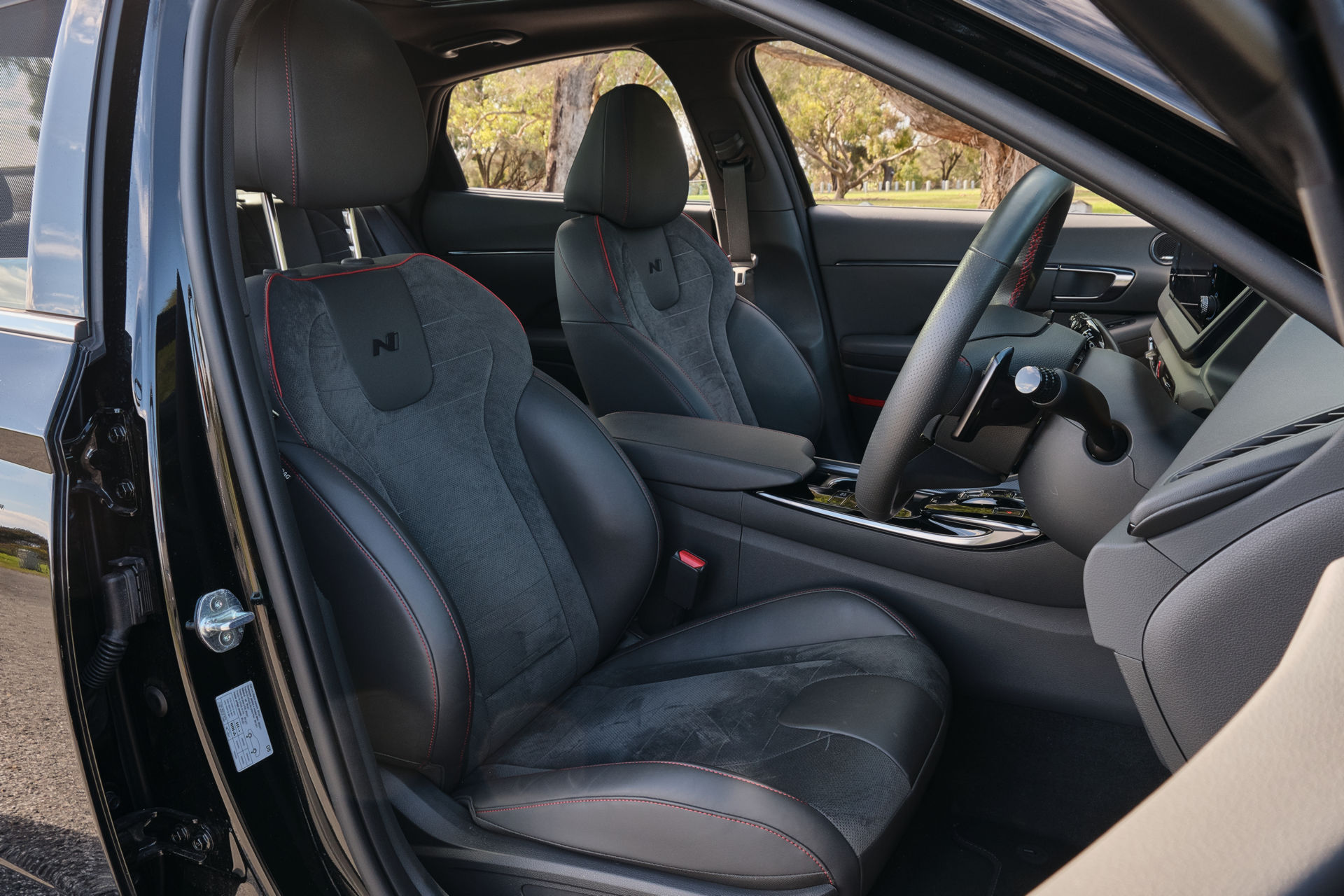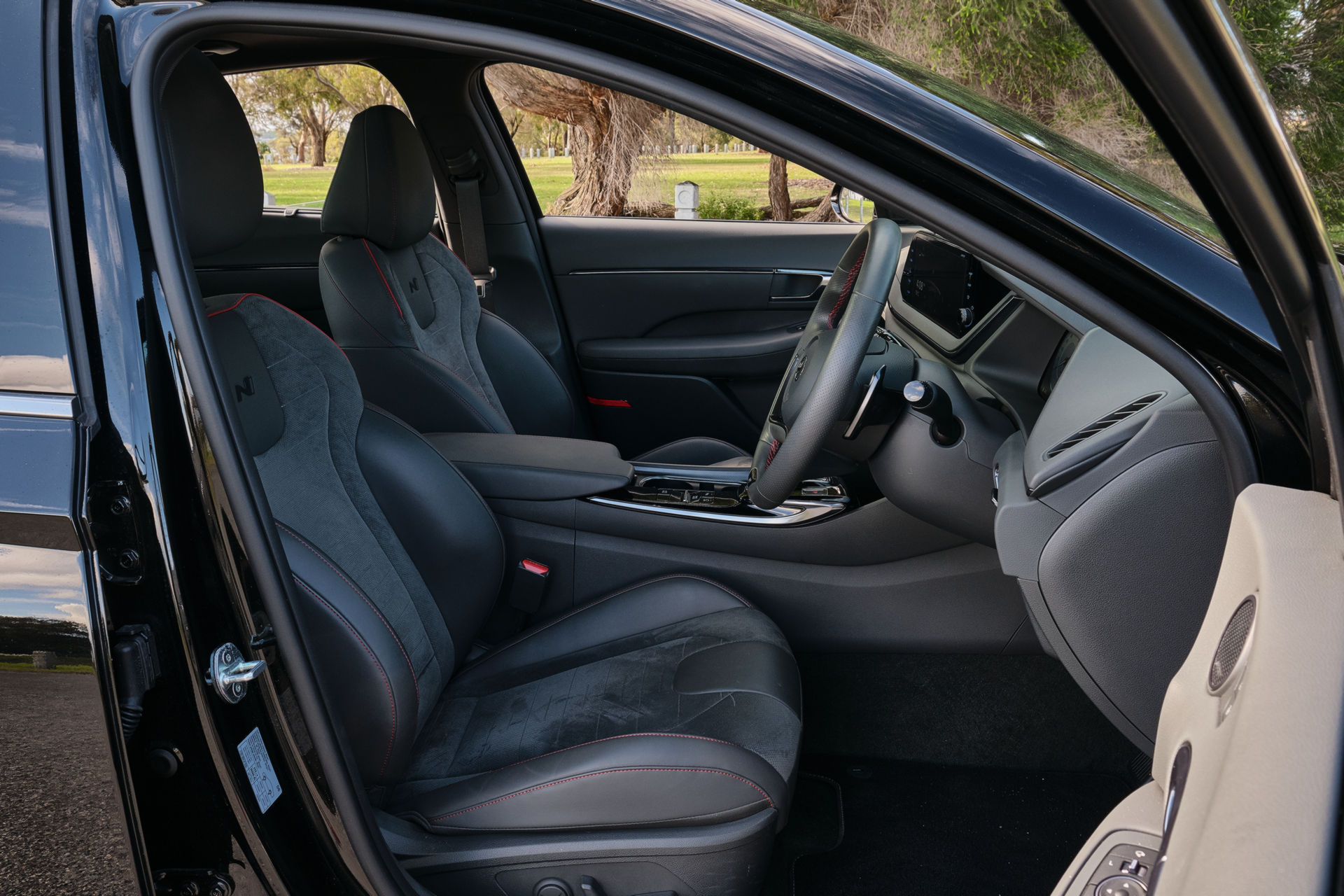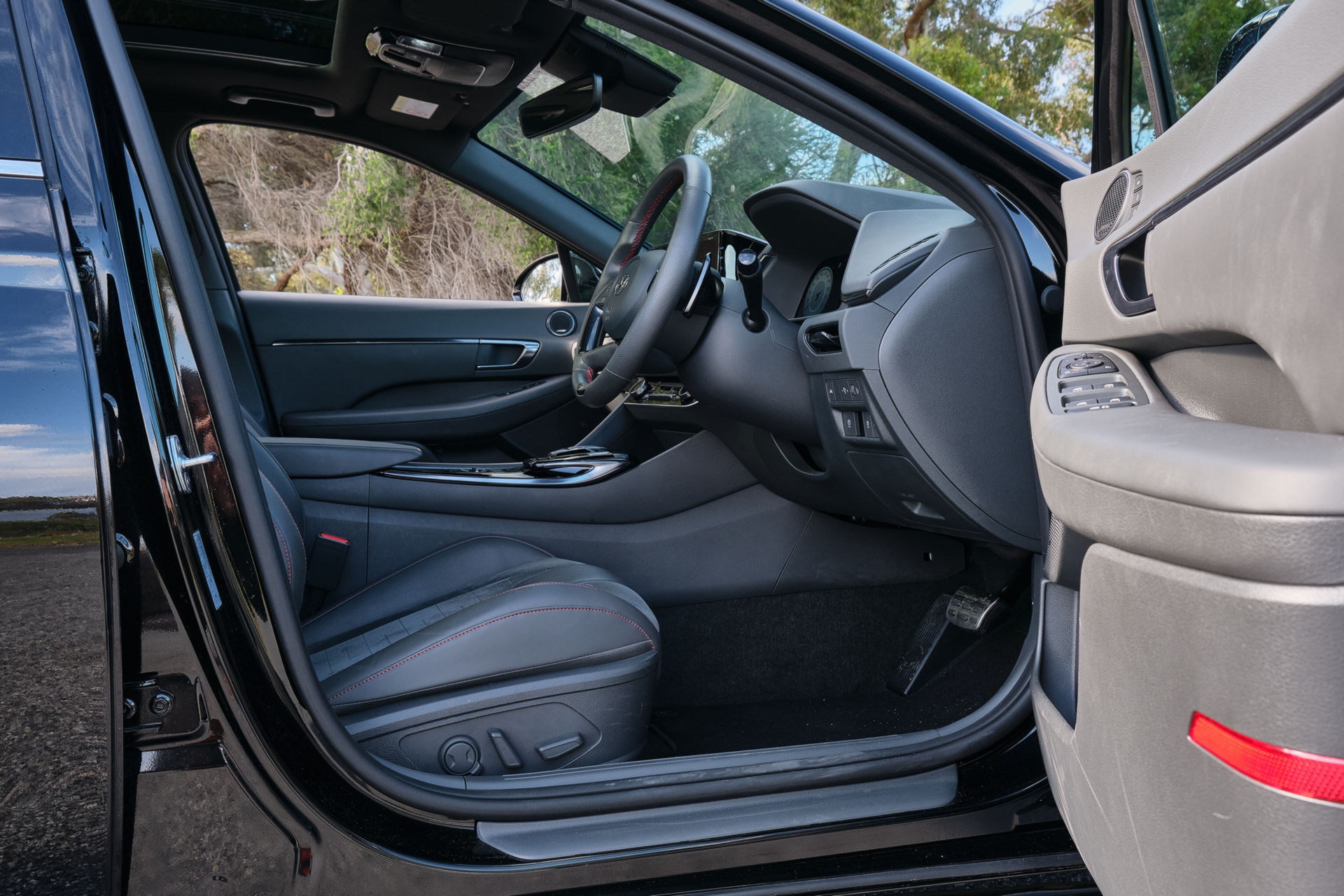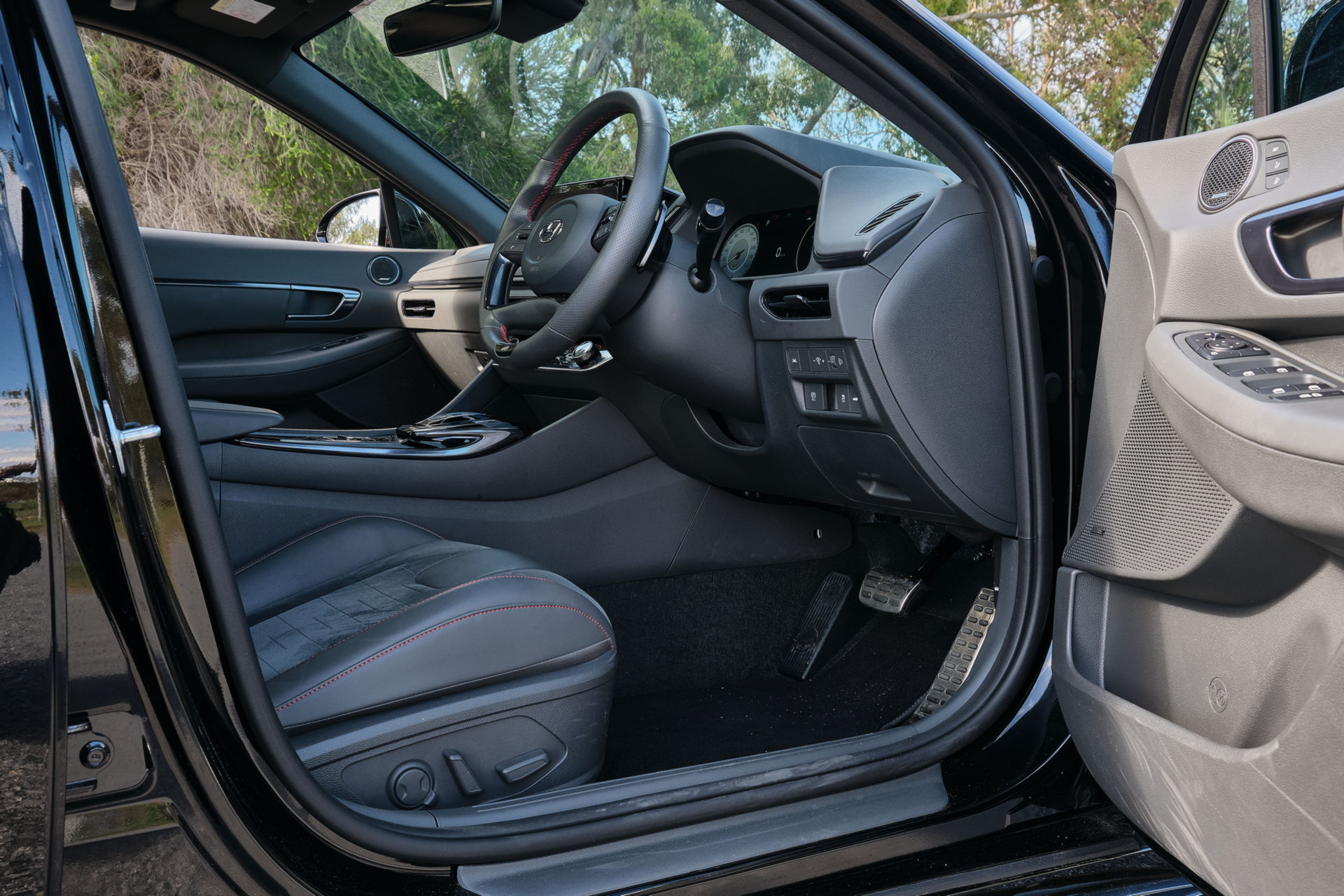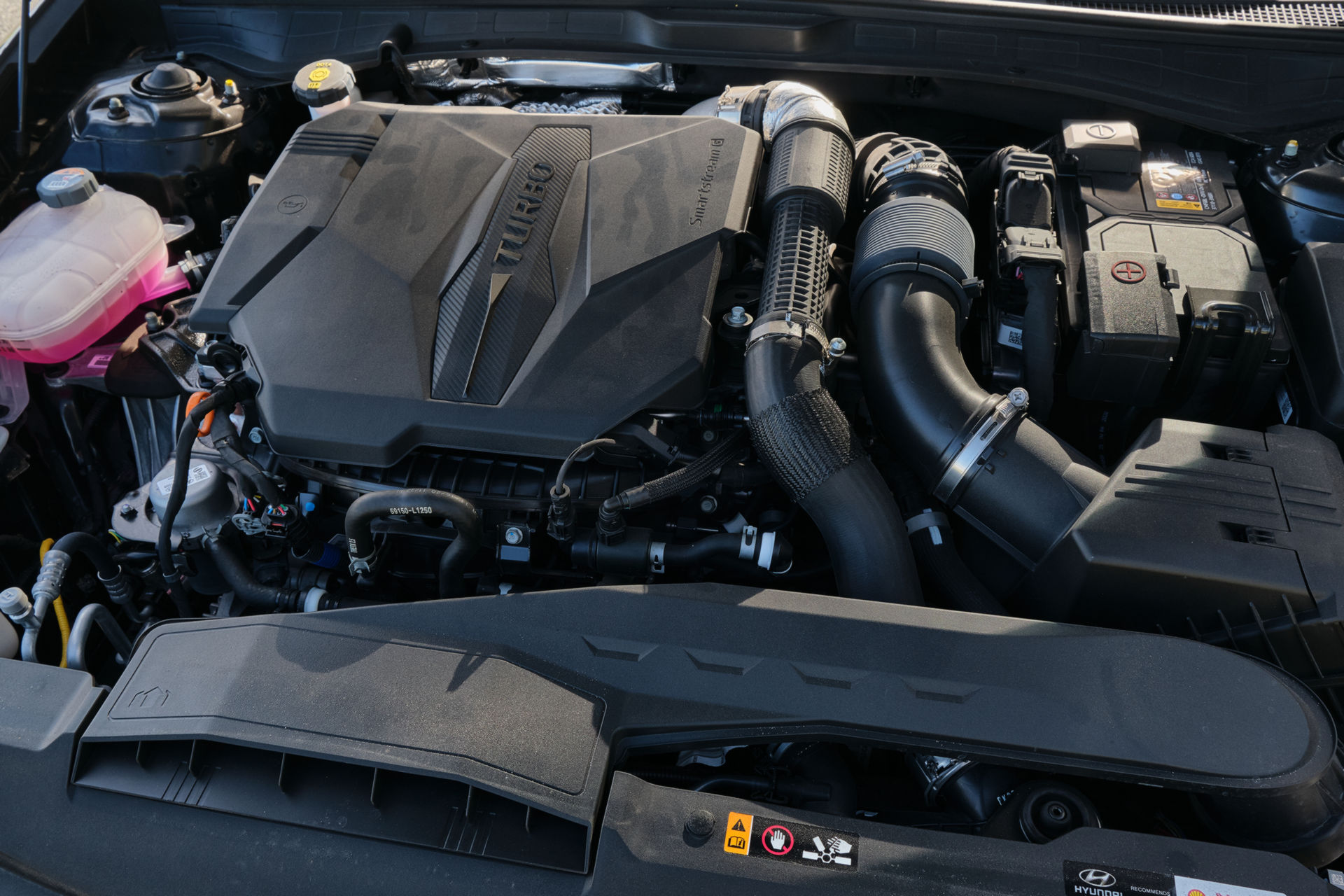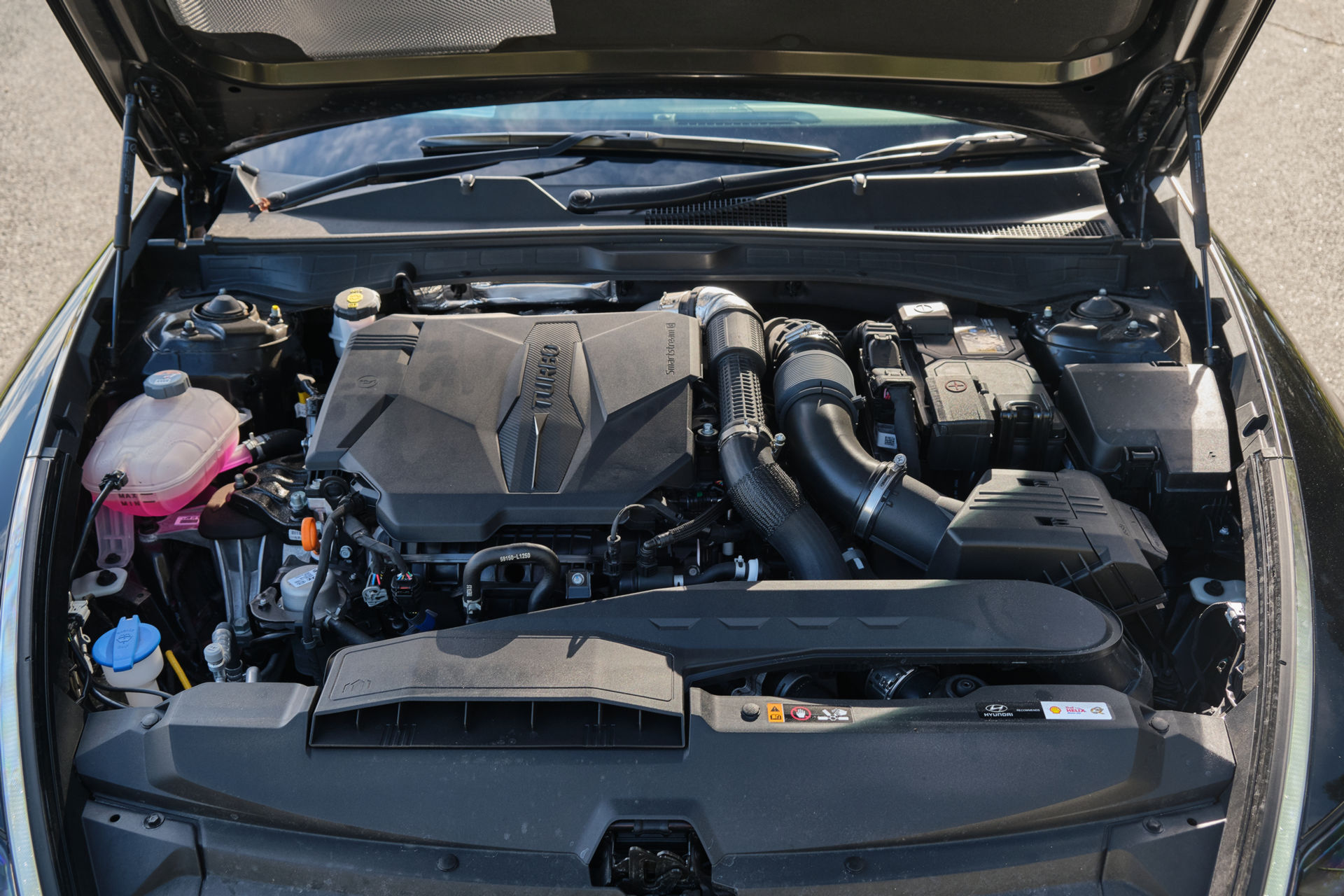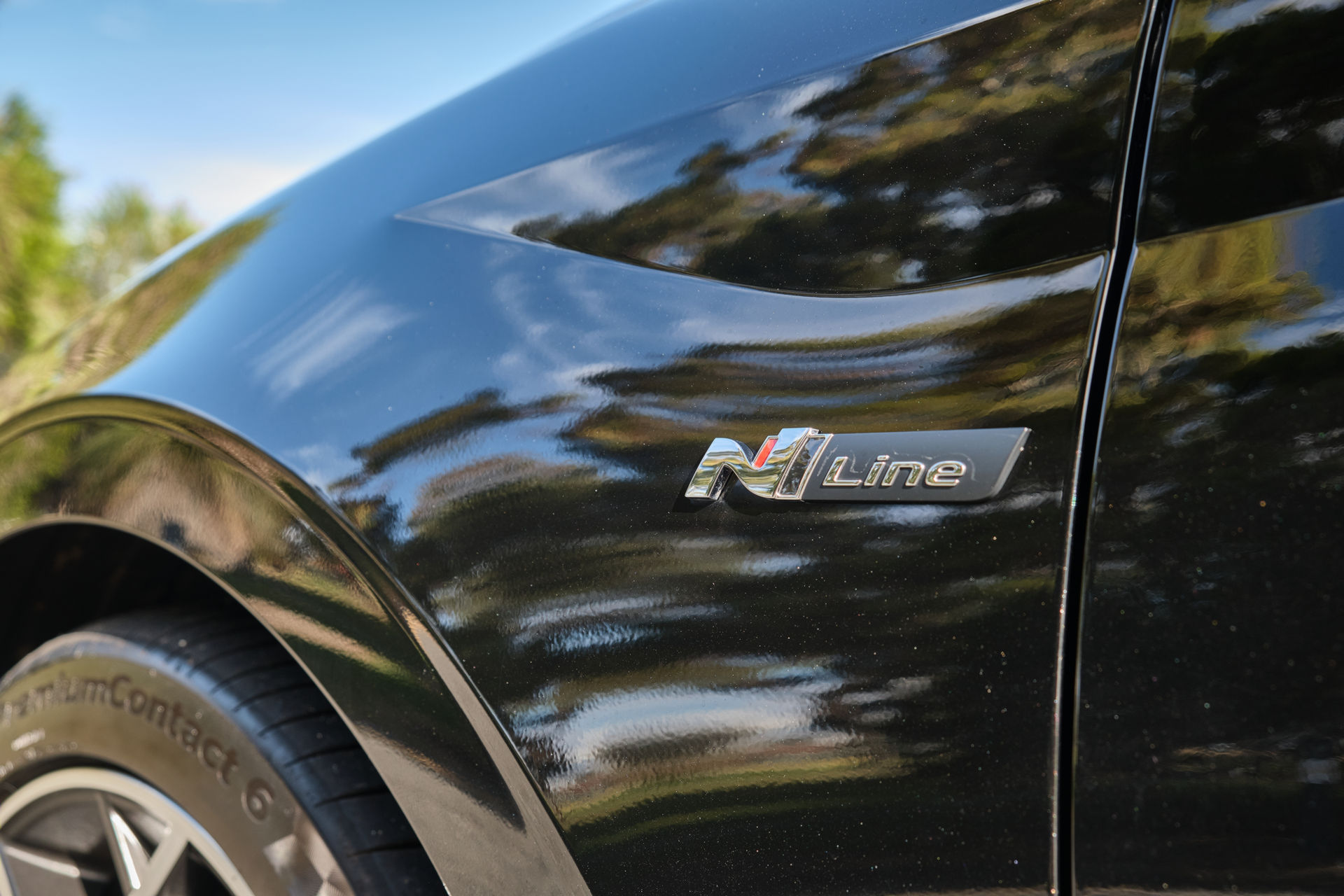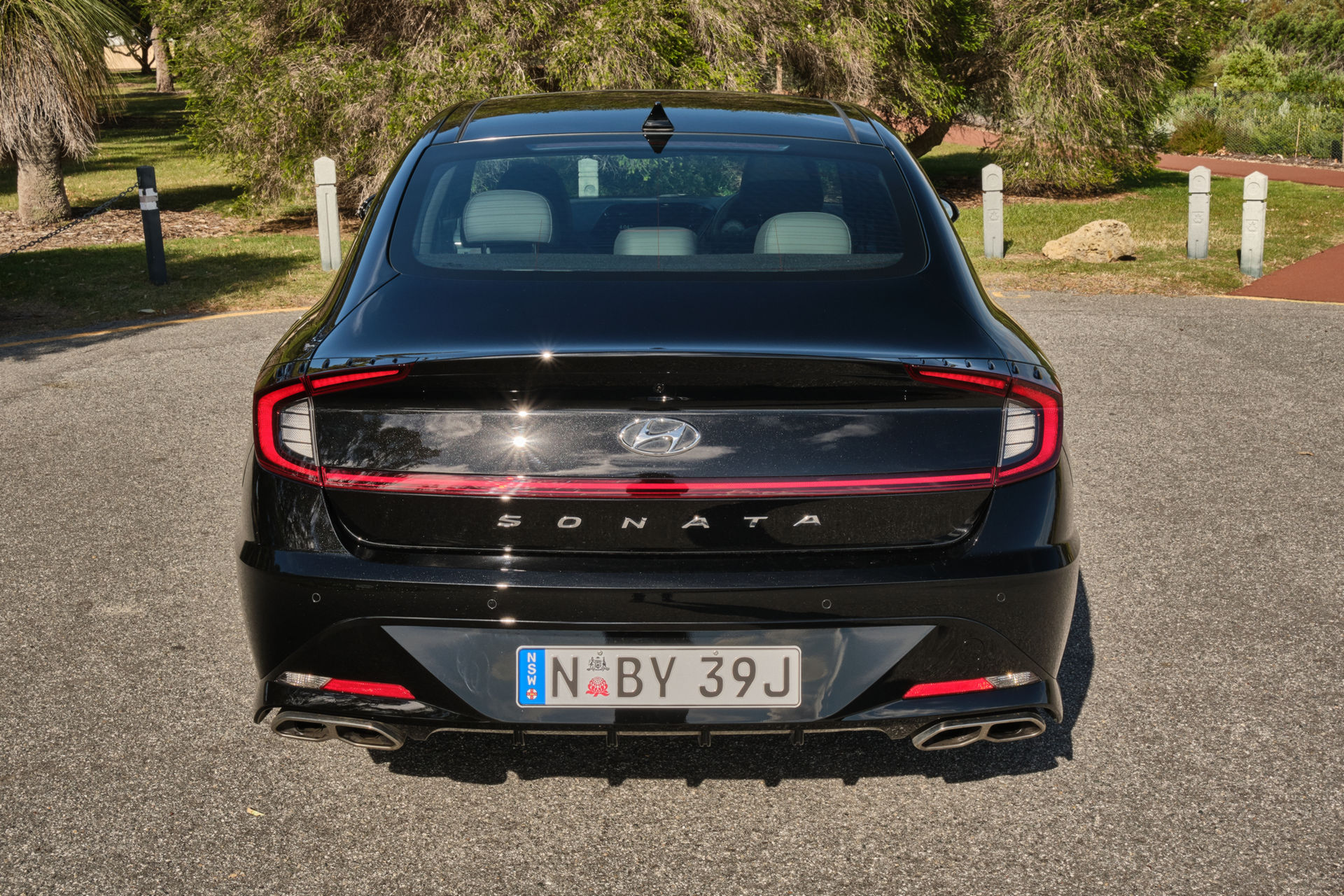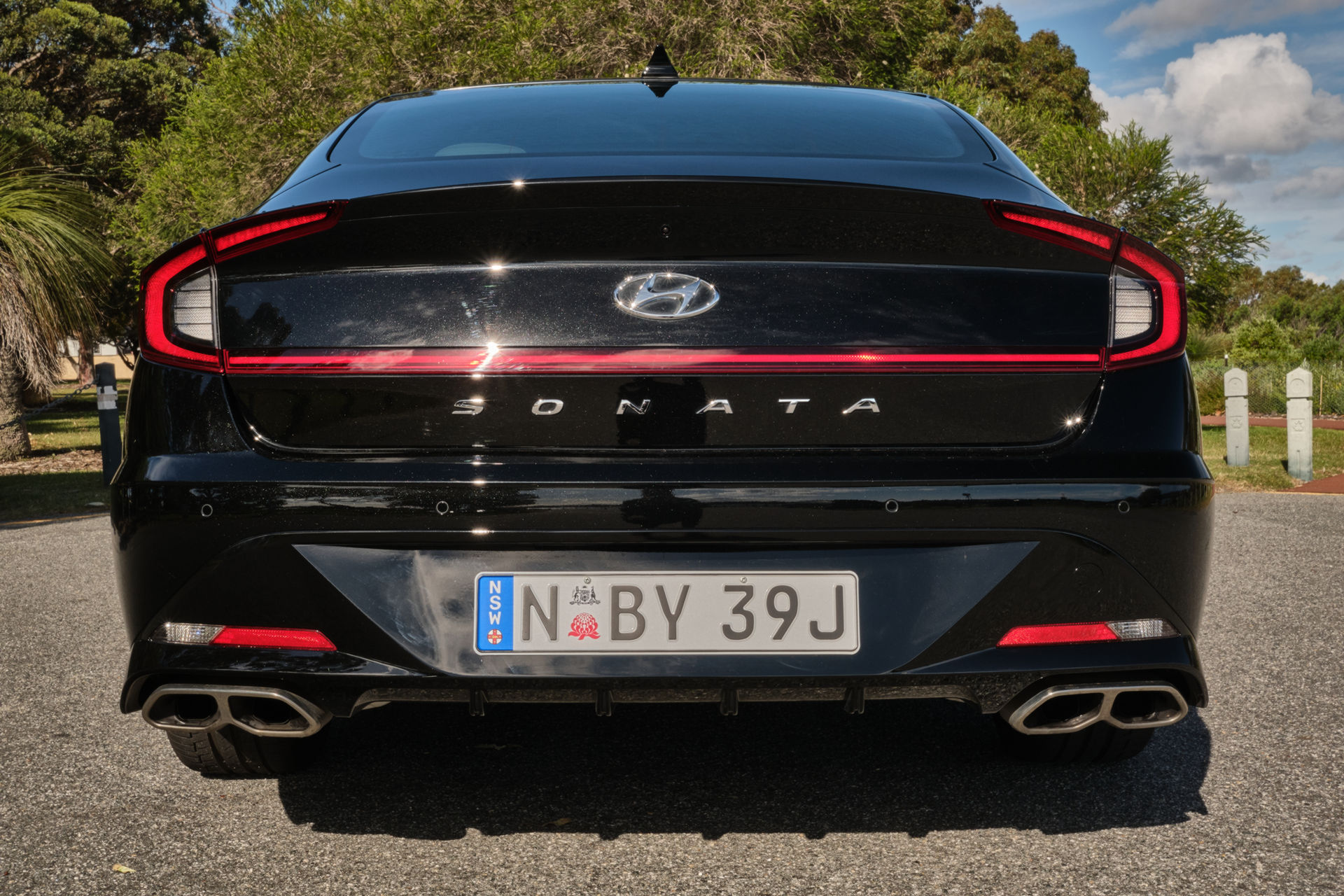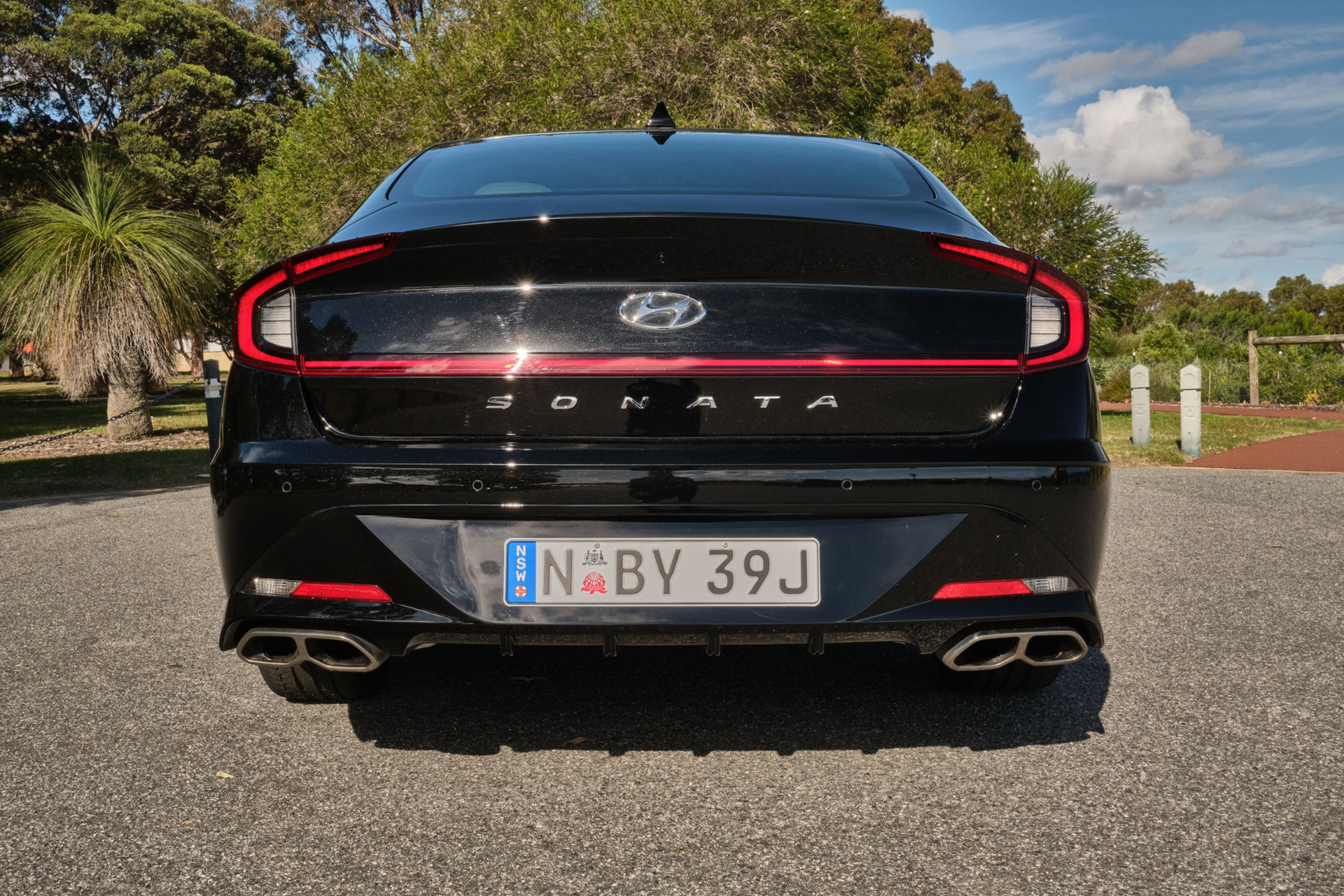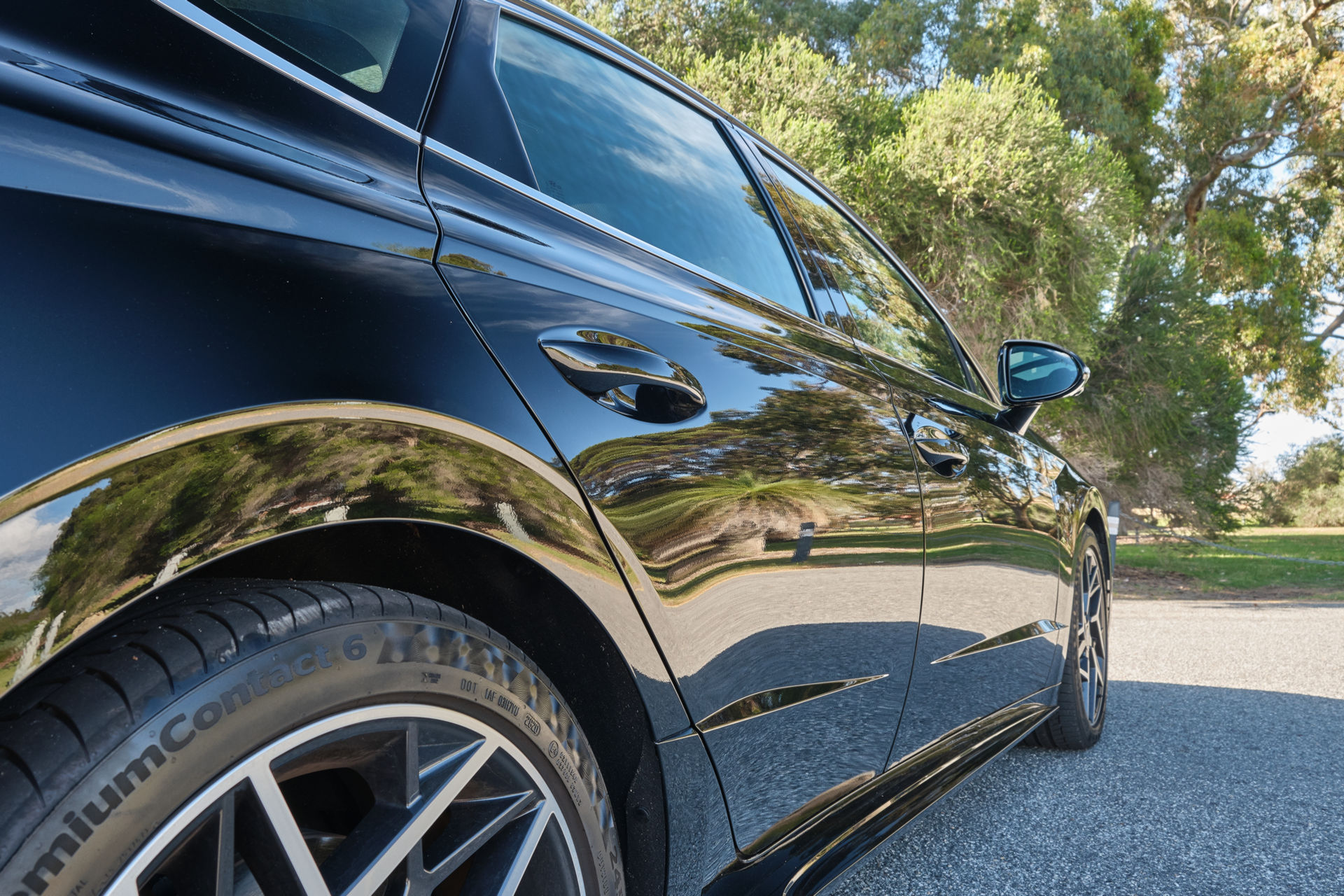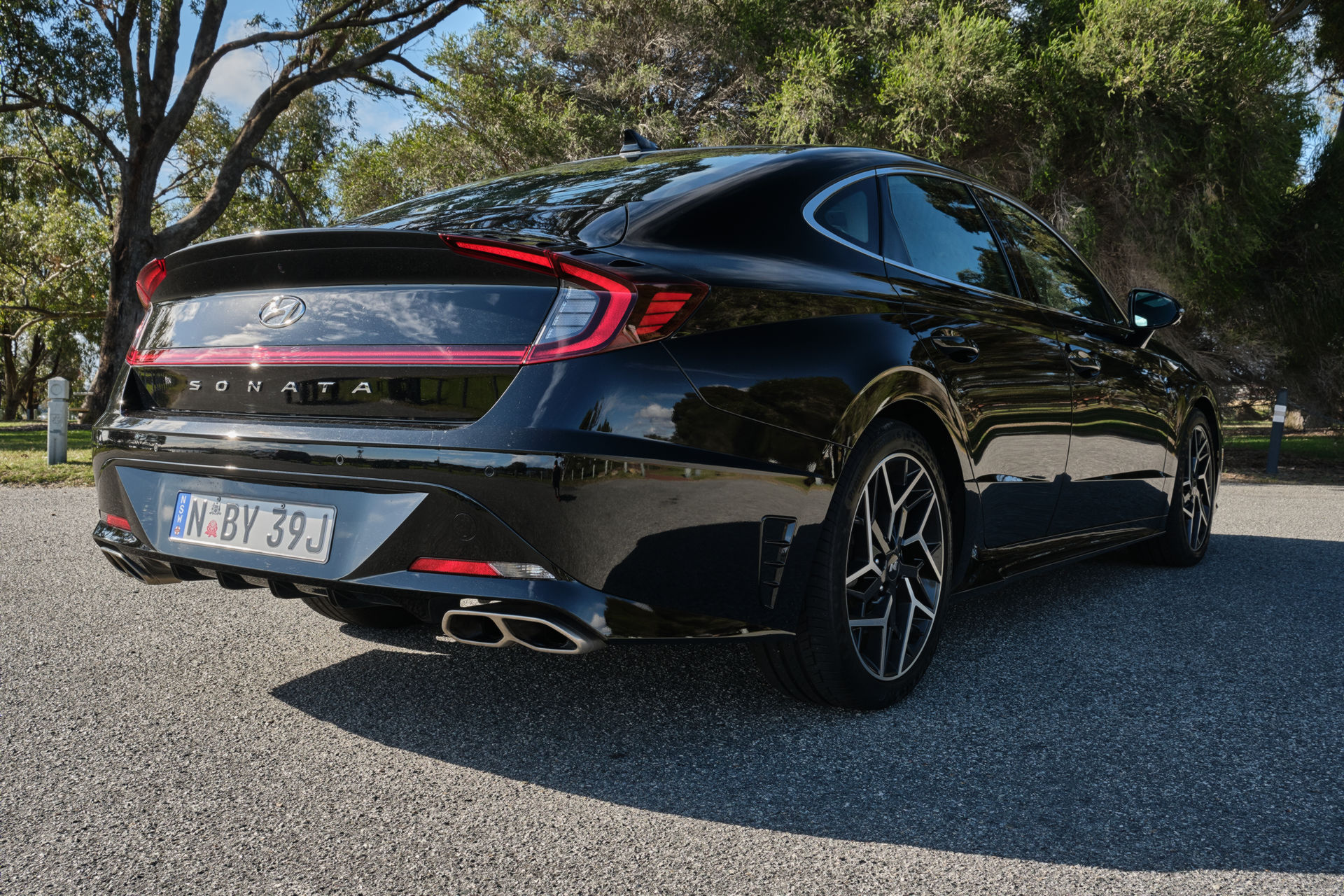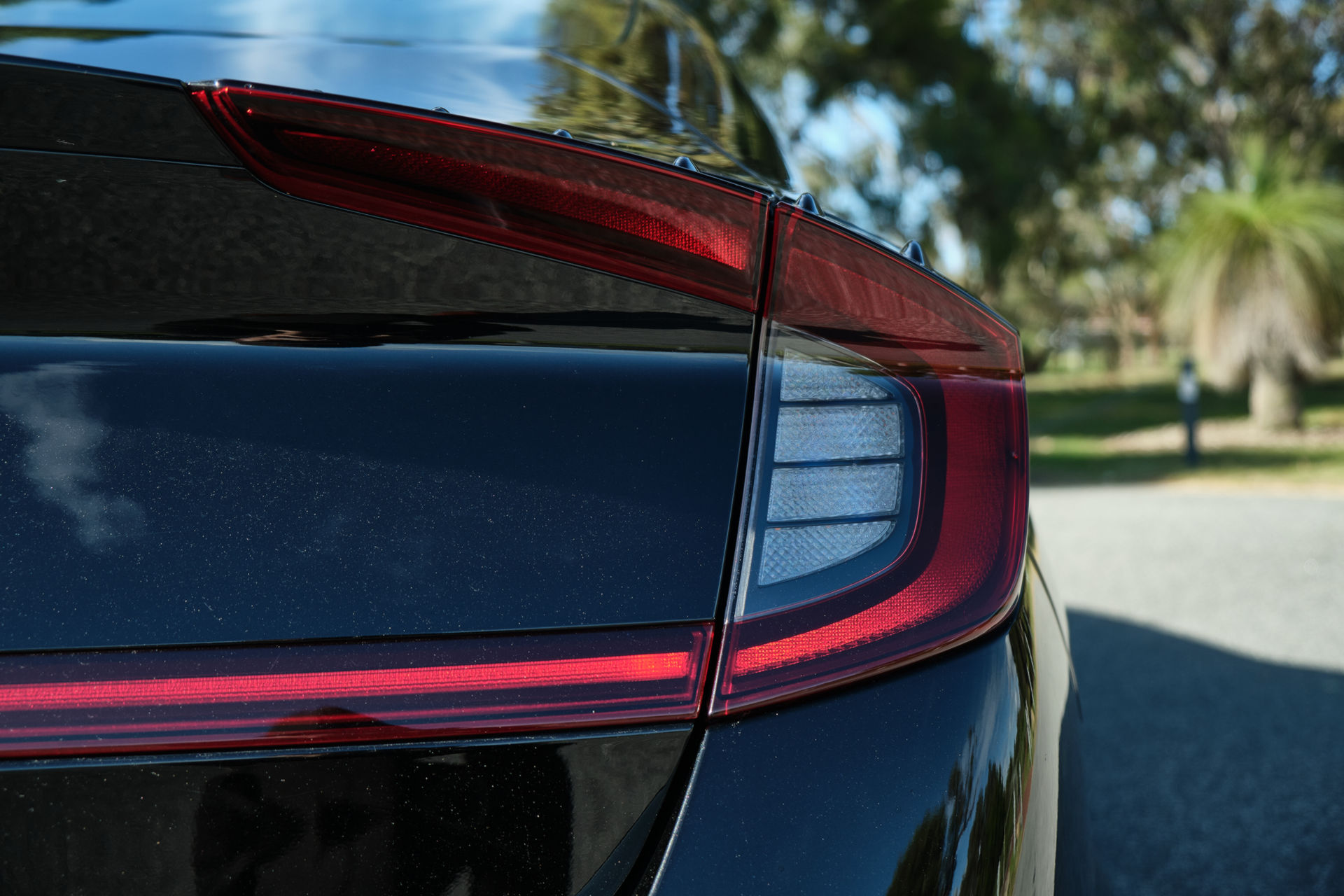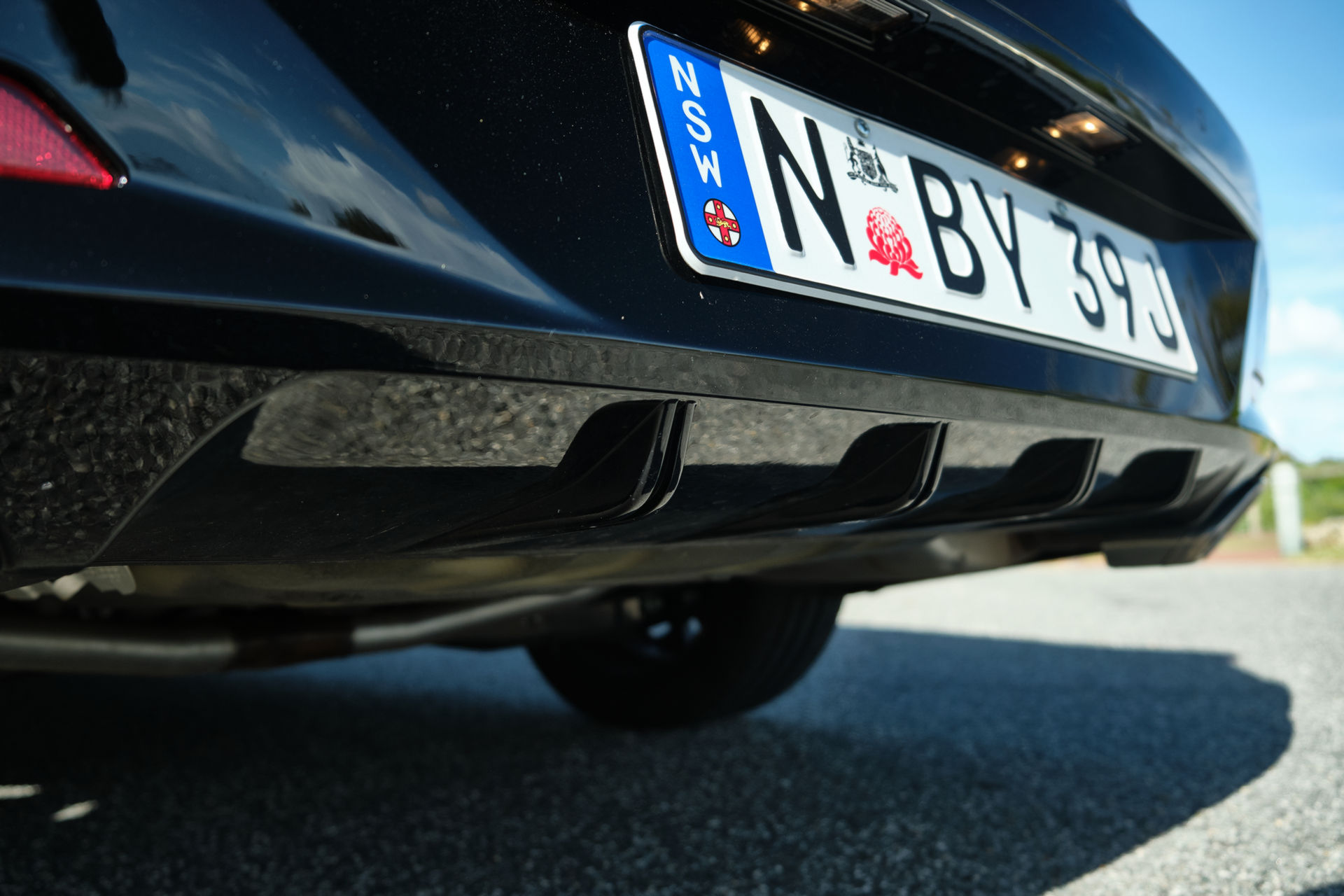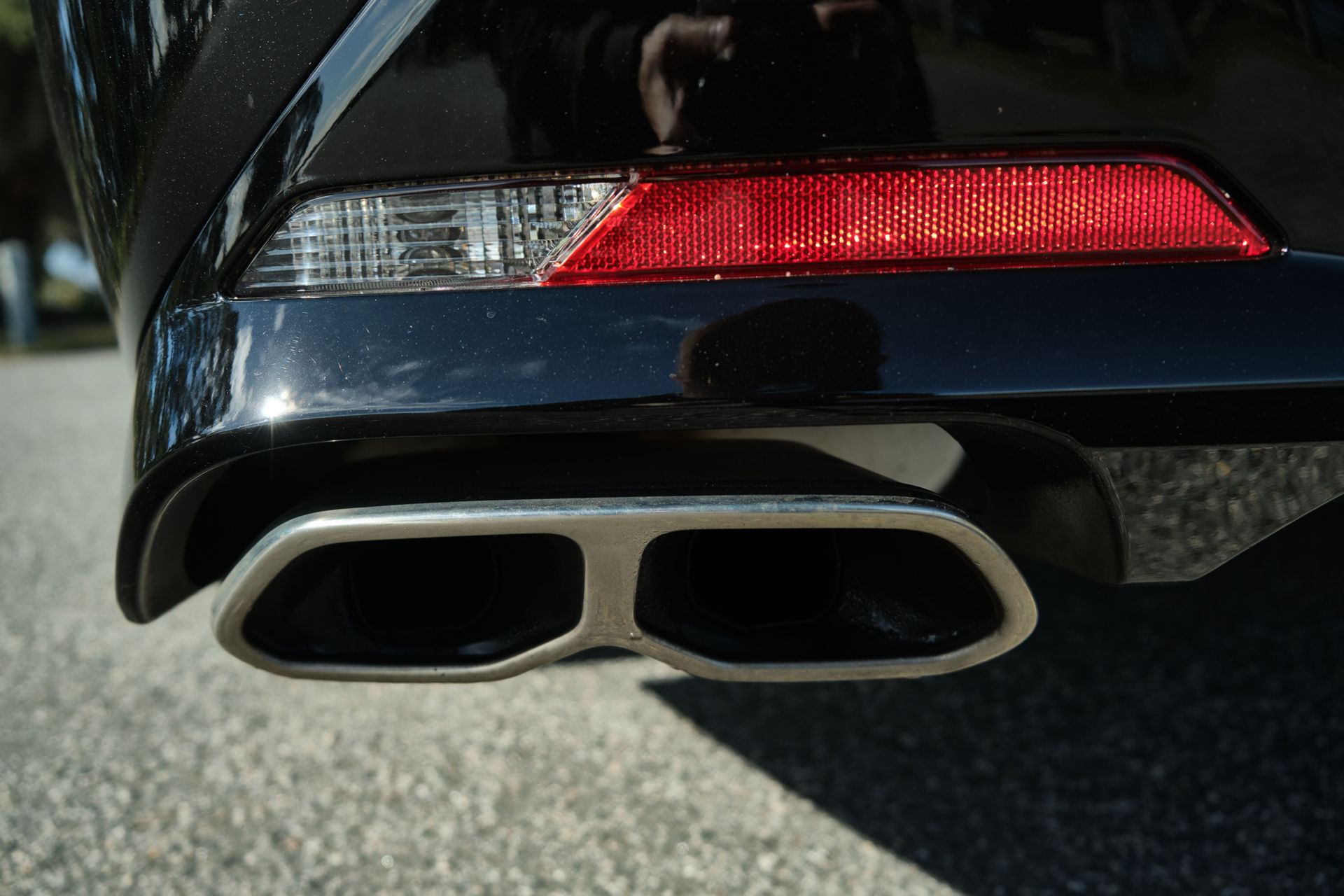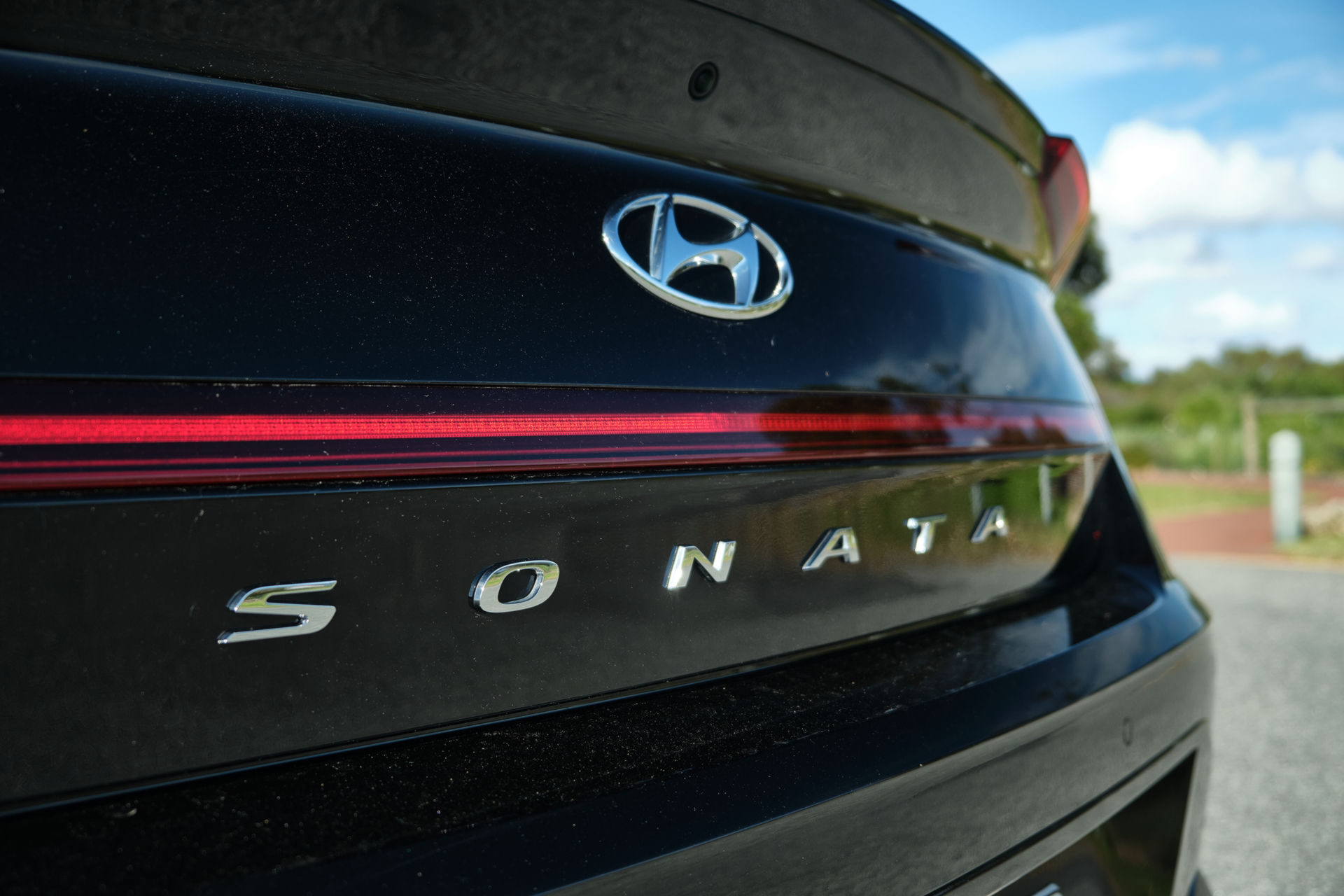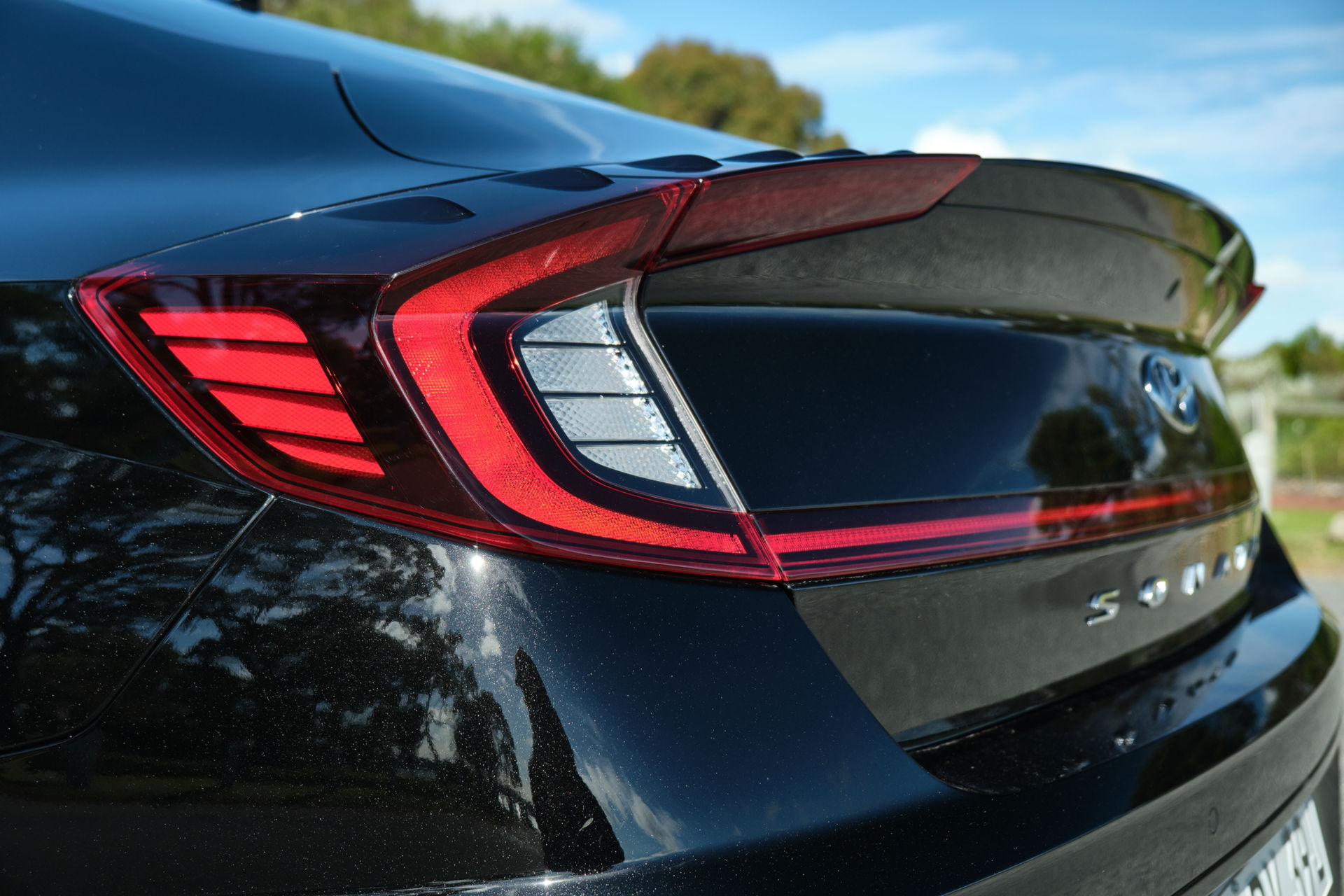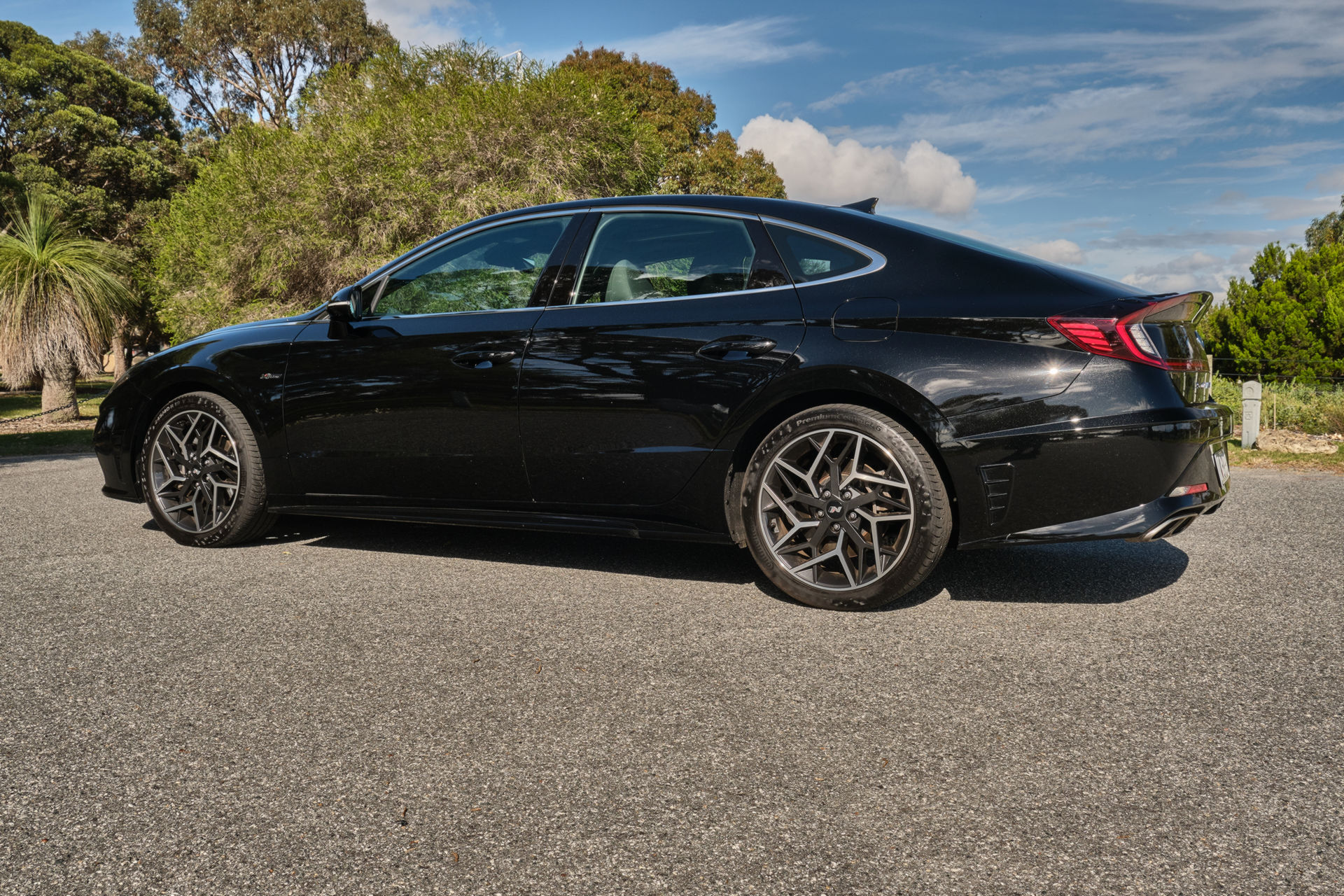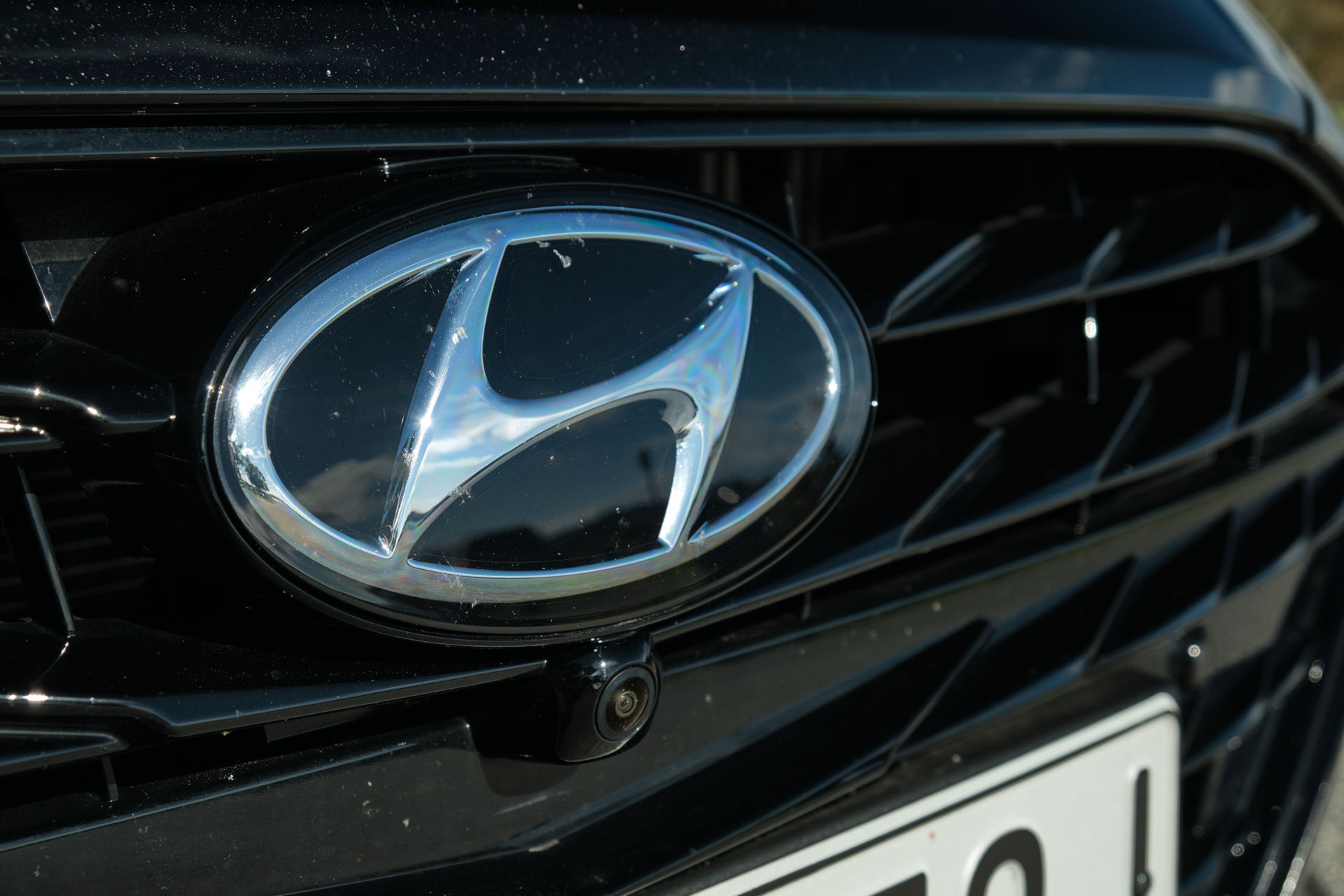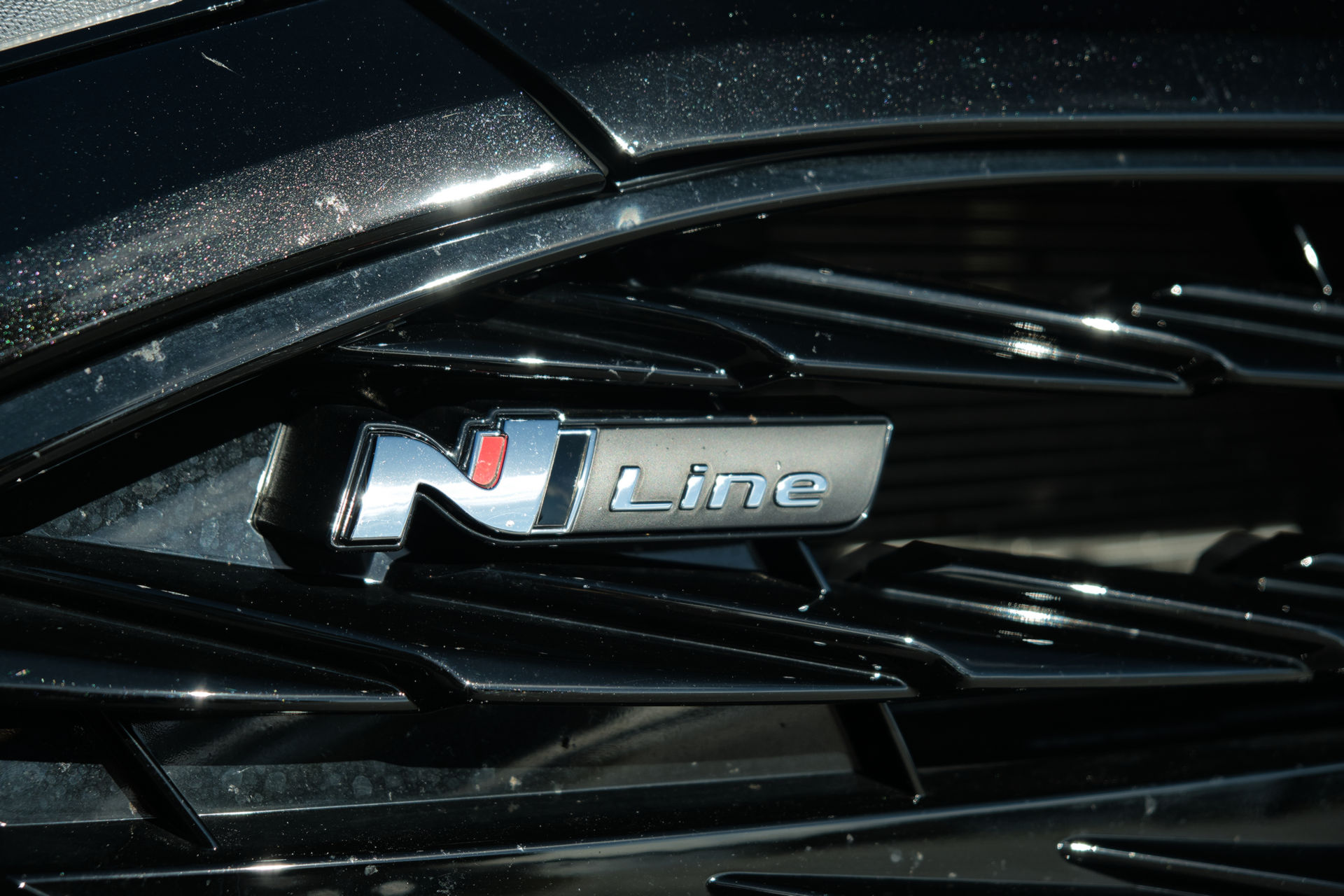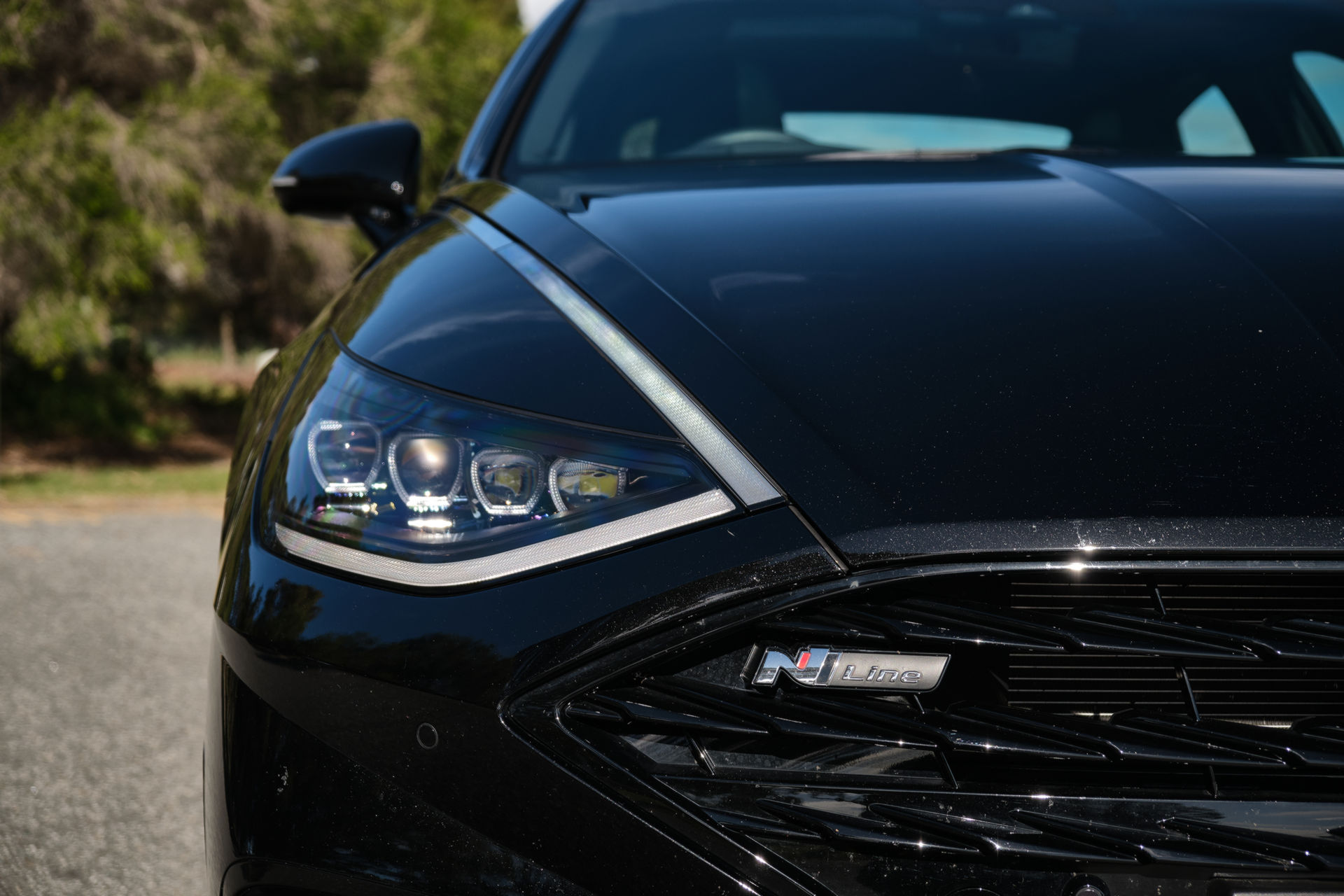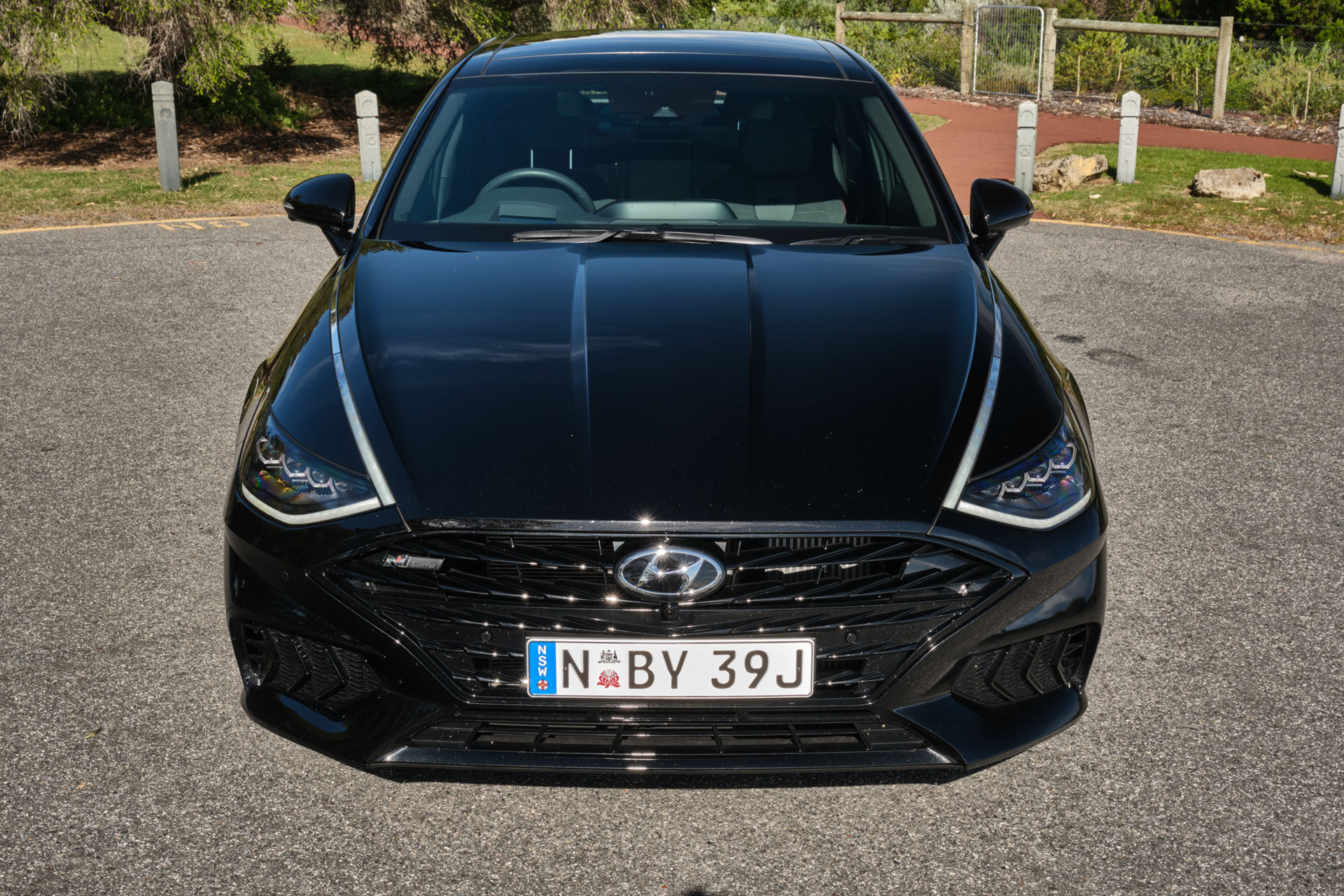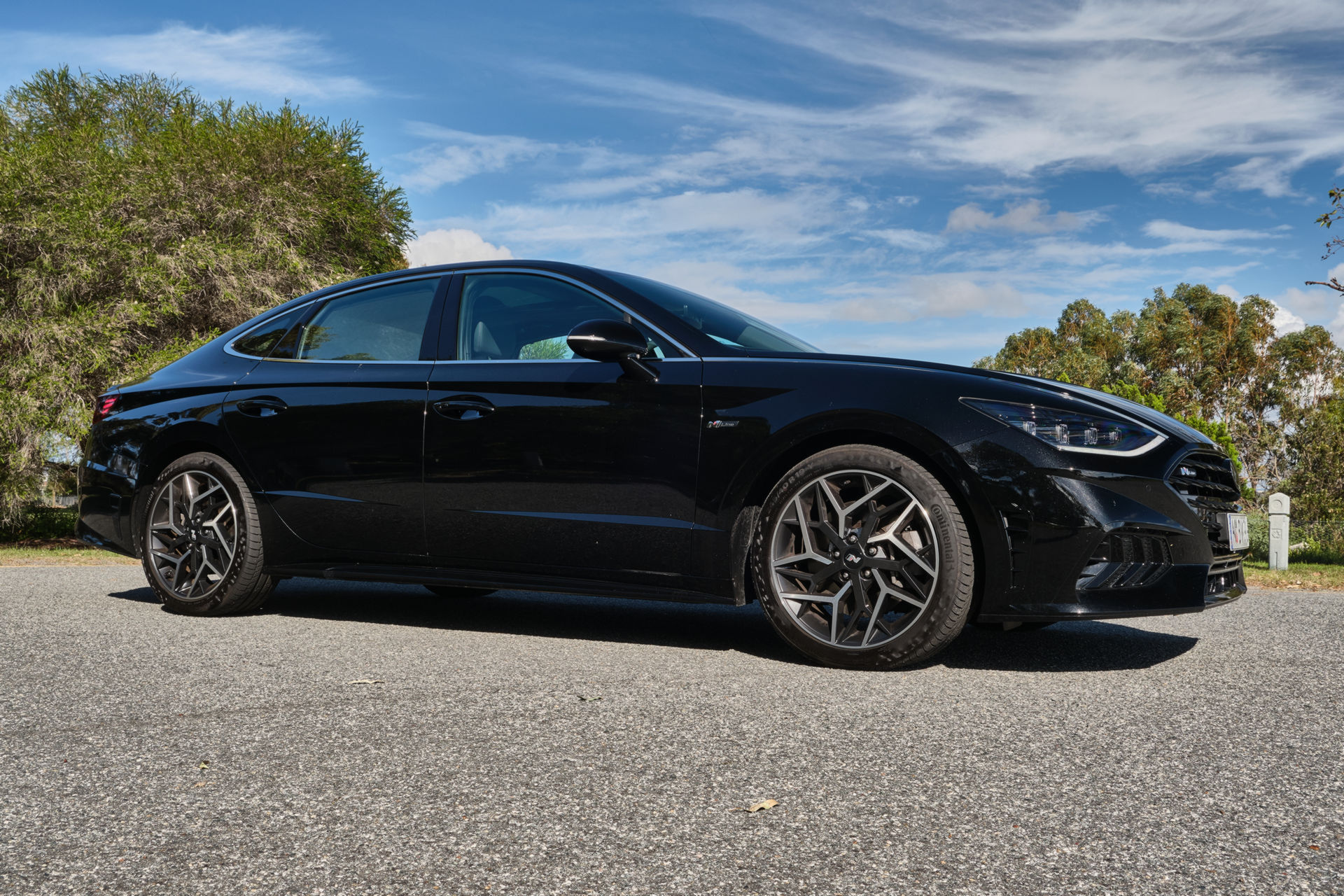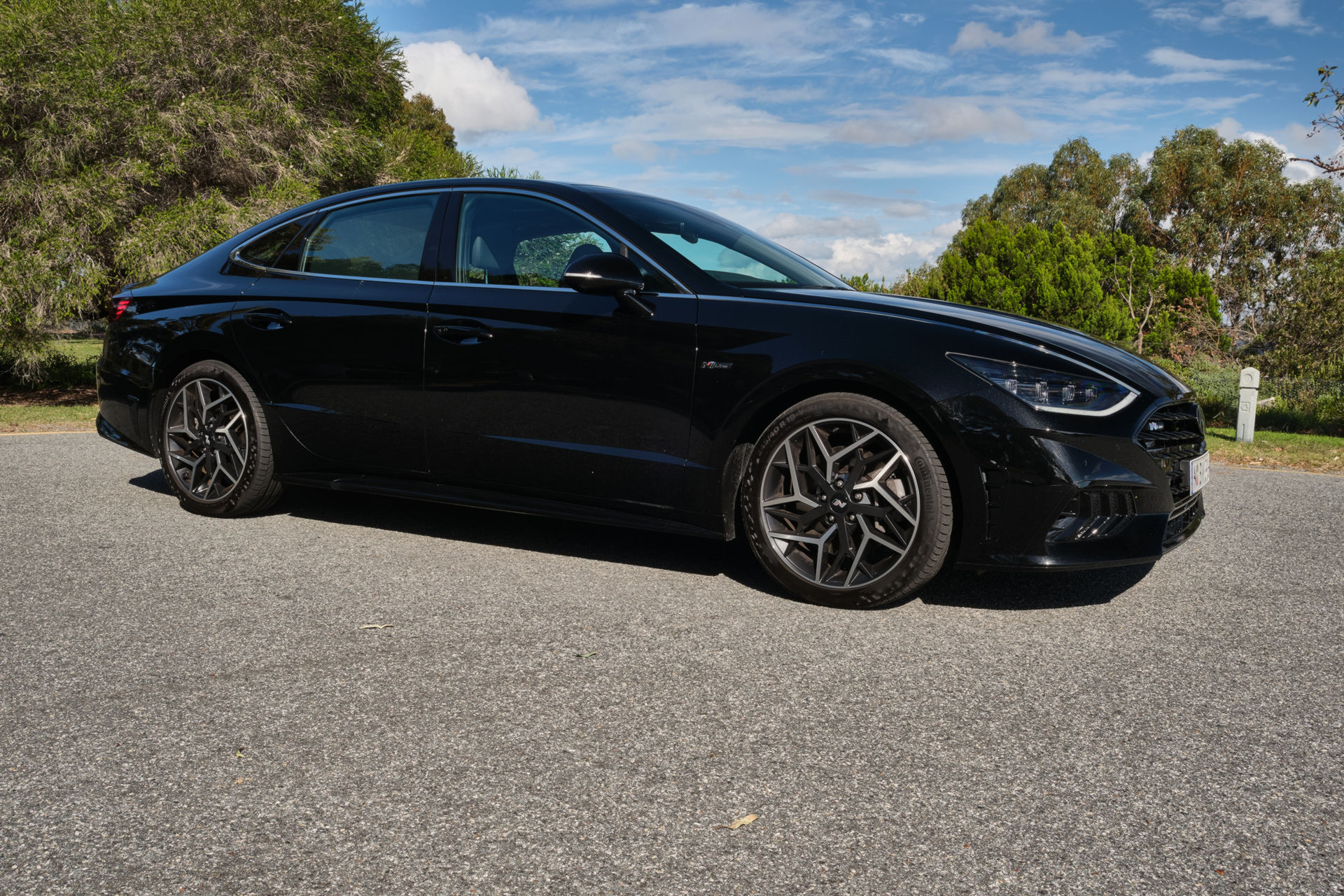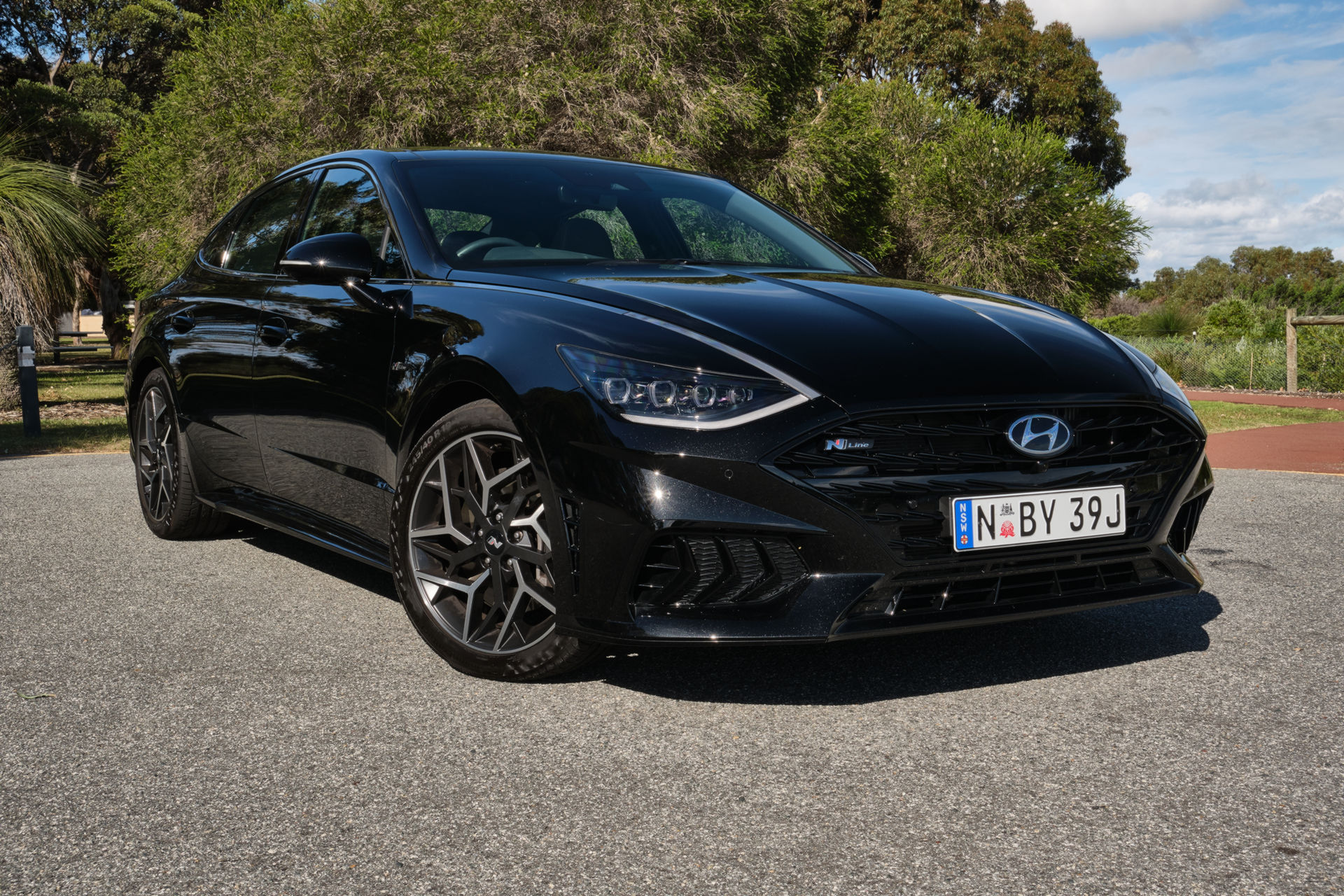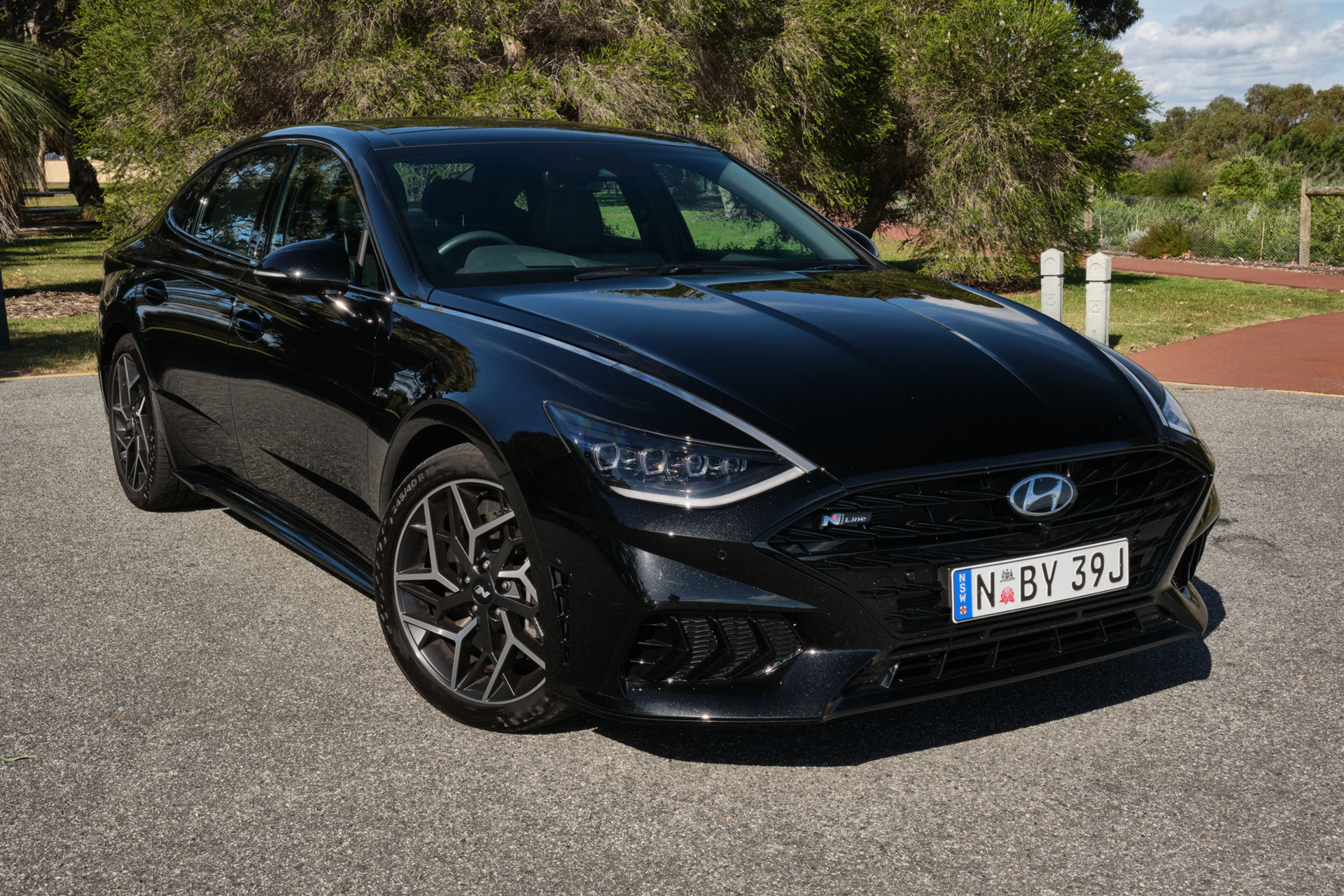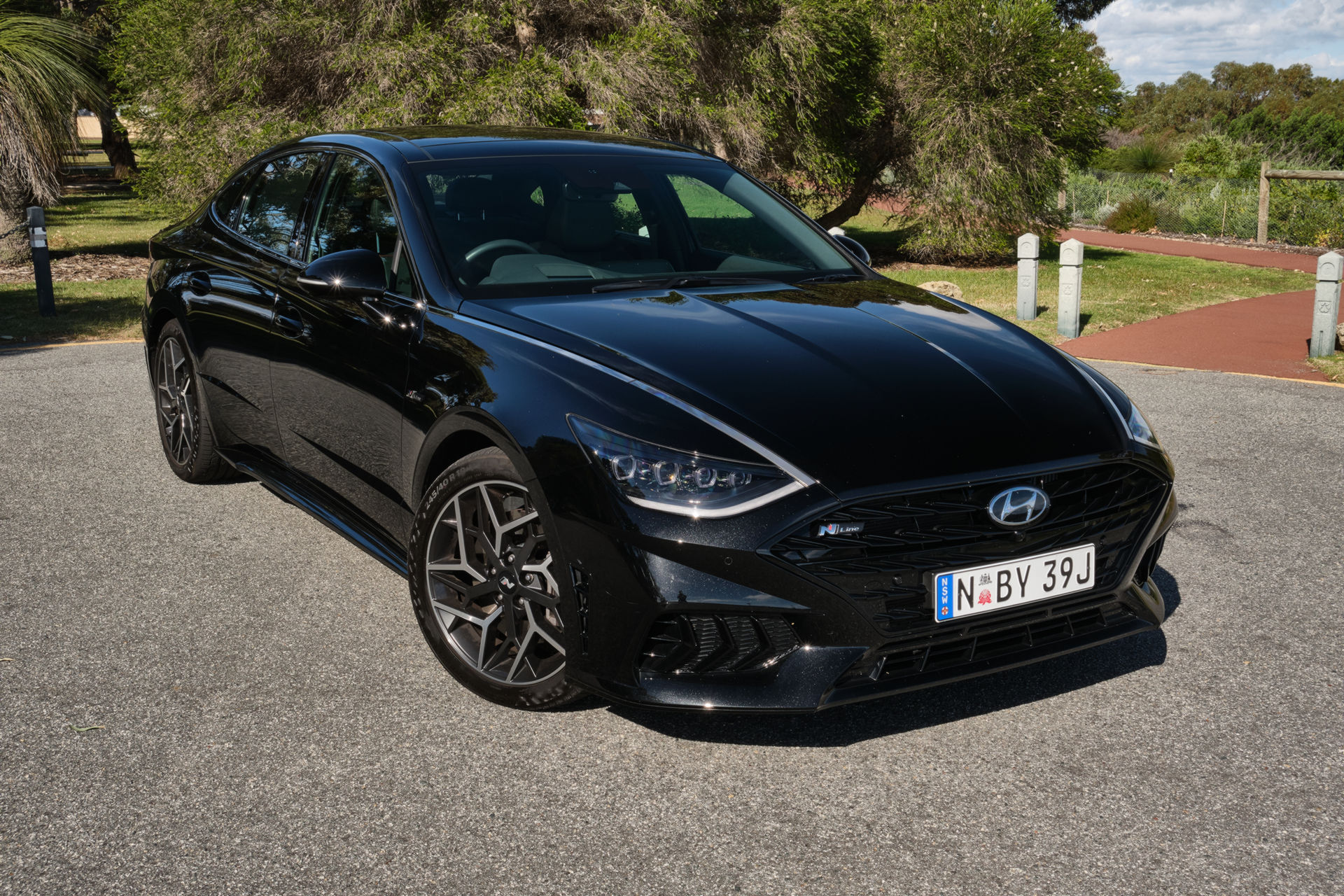If you’re in the market for a generously-sized sedan that’s well-priced and makes a dramatic statement on the road, the 2021 Hyundai Sonata N Line could be the car for you.
The eighth generation was first unveiled in early 2019 before landing in various markets around the world, including North America. Earlier this year, it became available in Australia and has revealed itself to be a very compelling prospect.
Hyundai doesn’t do conservative anymore
Much like the i30 Sedan / Elantra that we drove a few weeks ago, the latest Sonata makes a dramatic statement the moment you lay eyes on it. Standing out are the angular headlights and LED daytime running lights that stretch up either side of the aggressively-styled hood. The rear-end, meanwhile, has lobster claw-shaped taillights connected with a light bar. According to some reports, the looks are too dramatic for Korean buyers, meaning a more conservative facelift could be on the cards. As it stands, however, I think it looks quite nice.
Shoppers in the U.S. have a plethora of different variants to choose from. These start with the SE and continue with the SEL, SEL Plus, N Line, Limited, and N Line Night. It’s an entirely different story in Australia, however, where the sole Sonata model available is the sporty N Line.
Of course, that’s no bad thing. The 2021 Sonata N Line differentiates itself from other variants available overseas with more striking front and rear fascias and 19-inch alloy wheels. However, the most significant upgrade is the engine.
Found beneath the skin of the Sonata N Line is the automaker’s new Smartstream 2.5-liter turbocharged GDi petrol four-cylinder that’s good for 285 hp (213 kW) and 311 lb-ft (422 Nm. This is the first model sold in Australia with this new engine. It includes variable separate cooling of the cylinder block and head, an integrated exhaust manifold in the cylinder head, electronically controlled continuously variable-capacity oil pump, a water-to-air intercooler, and an active air flap (AAF) for the radiator.
A single gearbox is available, namely Hyundai’s familiar eight-speed dual-clutch transmission. Power is sent exclusively through the front wheels.
A fiery performer
It shouldn’t come as a surprise that this engine is one of the stand-out features of the driving experience. Figures of 285 hp (213 kW) and 311 lb-ft (422 Nm) of torque may not seem like all that much in an age of premium sedans with well over 600 hp. However, these figures mean that the Sonata N line has more power than Hyundai’s ever-popular i30 N hot hatch with its 276 hp (206 kW) and 289 lb-ft (392 Nm). Like the i30 N, the Sonata N Line is front-wheel drive but unlike its sibling, it doesn’t have an electronic limited-slip differential. Yep, that means the Sonata N Line has an open differential. It’s hardly a surprise then that it struggles to put its power to the ground.
Soon after jumping into the driver’s seat for the very first time, I switched the powertrain into the Sport+ mode and hit the throttle. I was expecting some solid performance. What I wasn’t expecting was for one of the front tires to immediately lose traction, leaving a thick black mark on the tarmac behind me. Make no mistake, the Sonata N Line can be quite the lairy beast.
This is no more evident when you’re using the launch control function in the Sport+ setting which disables the traction control. Step on the brake, floor the throttle, proceed to release the brake and all of those 285 horses will be dumped through one of the front wheels, spinning it through the first two gears without a second thought. The lack of an LSD has a similar effect if you stamp on the throttle a little too hard while exiting a corner. Interestingly, though, torque steer is less prevalent than it is in the i30 N.
Hyundai says it will hit 100 km/h (62 mph) in 6.2 seconds. We didn’t have the chance to do any timed runs but that sounds about right – as long as you can get traction, that is. All of this power comes at the cost of fuel consumption and while Hyundai Australia claims you can get 8.1 l/100 km (29 U.S. mpg) over the combined cycle, we averaged 11.2 l/100 km (21 U.S. mpg) during our week with the car, driving it relatively gently in urban areas and along inner-city roads.
Comfort is an obvious priority
Of course, the Sonata N Line hasn’t been developed in the same performance vain as the i30 N and this is particularly evident when you drive it in normal mode.
Typically, Hyundai models sold in Australia are given a unique suspension tune to suit local roads. With the new Sonata N Line, Hyundai Australia was involved in the early development of the model, providing its input to Hyundai HQ on what would be required to achieve the “flavor” of a tune developed specifically for the Aussie market. The tune developed overseas was then signed off by Hyundai Australia before sales of the Sonata commenced.
This new approach to the suspension setup has worked wonders as the Sonata N Line walks an ideal line between comfort and sportiness. It has been equipped with monotube dampers and is beautifully refined in all driving conditions. It can feel a little floaty over crests but it remains taut enough to give you good feedback.
As with other Hyundai models, the car’s eight-speed dual-clutch transmission is a real treat. It has good low-speed manners and provides quick and smooth changes through all ratios. It even has the N Power Shift function of the i30 N, designed to increase the throttle opening during upshifts in Sport and Sport+ driving modes, pushing your head back into the headrest on each gear change. It adds some nice drama to the car, although we suspect it may go unnoticed by most buyers.
The Sonata N Line also handles surprisingly well. The aforementioned 19-inch alloy wheels are wrapped in Continental Premium Contact 6 tires that are 245 mm wide both front and rear. Turn-in is sharp and direct and as long as you drive with smooth throttle inputs, the lack of an LSD isn’t of concern. However, the car does feel big.
Stretching 4,900 mm long (192.9 inches), 1,860 mm wide (73.2 inches), and standing 1,445 mm (56.8 inches) tall, the Sonata N Line isn’t significantly larger than the i30 Sedan / Elantra, which itself is 4,650 mm long (183 inches), 1,825 mm wide (71.8 inches), and 1,430 mm tall (56.2 inches). However, the Sonata’s wheelbase sits at 2,840 mm (111.8 inches) compared to the 2,720 mm (107 inches) of the i30 Sedan / Elantra and when hustled through corners, it feels significantly larger than the specs would suggest. A key reason for this is that it almost weighs 300 kg (661 lbs) more than its smaller sibling.
Korean luxury done right
The interior of the Sonata N Line is a very pleasant place to sit. It comes standard with a suite of SmartSense technologies, including Blind-Spot Collision-Avoidance Assist, Blind-Spot View Monitor, Driver Attention Warning, Forward Collision-Avoidance Assist with Car/Pedestrian/Cyclist detection, High Beam Assist, Lane Keeping Assist, Lane Following Assist, Leading Vehicle Departure Alert, Rear Cross-Traffic Collision-Avoidance Assist, Smart Cruise Control with Stop And Go, Safe Exit Assist, and a Surround View Monitor.
Like the i30 Sedan / Elantra, the cabin of the Sonata is quite driver-focused with all of the major controls, including the 10.25-inch infotainment screen, angled slightly towards the driver. Located just a couple of inches away from your left knee is the shifter.
Hyundai has equipped the 2021 Sonata N Line with the same shift-by-wire technology as other models like the Santa Fe and Palisade. As such, there are individual buttons for Park, Drive, Neutral, and Reverse rather than a traditional shifter. The system is easy to use once you’re familiar with it and does help to neaten up the design of the cabin.
Located directly in front of the driver’s seat is a sleek four-spoke steering wheel and a 12.3-inch digital instrument cluster that you’ll find in a host of other Hyundai models. The graphics change depending on what driving mode you’re in and it is crystal clear during daylight hours without being overbearing or distracting once the sun sets. A pair of steering wheel-mounted paddle shifters have also been fitted.
Read Also: 2022 Hyundai Sonata N Line Night Edition Arrives With Blackout Looks And Nearly $35k Sticker
The driver’s seat is 12-way power-adjustable and includes 2-way adjustment for lumbar support and 2-way adjustment for the bolsters. The front seats are also ventilated and heated while the outboard rear seats are also heated. There is also a heated steering wheel and a particularly expansive panoramic glass sunroof. The suede and leather upholstery adorning the seats is beautifully soft and there are plenty of other soft-touch materials throughout the cabin. A Bose premium audio system with 12-speakers also comes as standard.
The rear is particularly spacious. The Sonata N Line offers rear-seat passengers 950 mm of headroom (37.4 inches), 1,382 mm of hip room (54.4 inches), 885 mm of legroom (34.8 inches), and 1,425 mm of shoulder room (56.1 inches). It is well-suited to tall passengers and would be great for families. Cargo volume is good with 510 liters (18 cubic-feet) of space in the trunk.
Australian pricing for the 2021 Sonata N Line starts at AU$50,990 ($37,500) and during my first drive of the car, I wasn’t convinced it was worth the extra AU$9,170 ($6,743) over the i30 Sedan N Line Premium that we tested a few weeks ago. However, after living with it for a week, I can understand why consumers may be tempted to spend that extra money.
The greater comfort provided by the Sonata N Line is one of these reasons. It doesn’t feel quite as sharp as the i30 Sedan N Line, nor is it meant to. However, it makes up for this with a more luxurious and refined feel. The interior surfaces are also a touch nicer and you feel that little more relaxed while behind the wheel.



